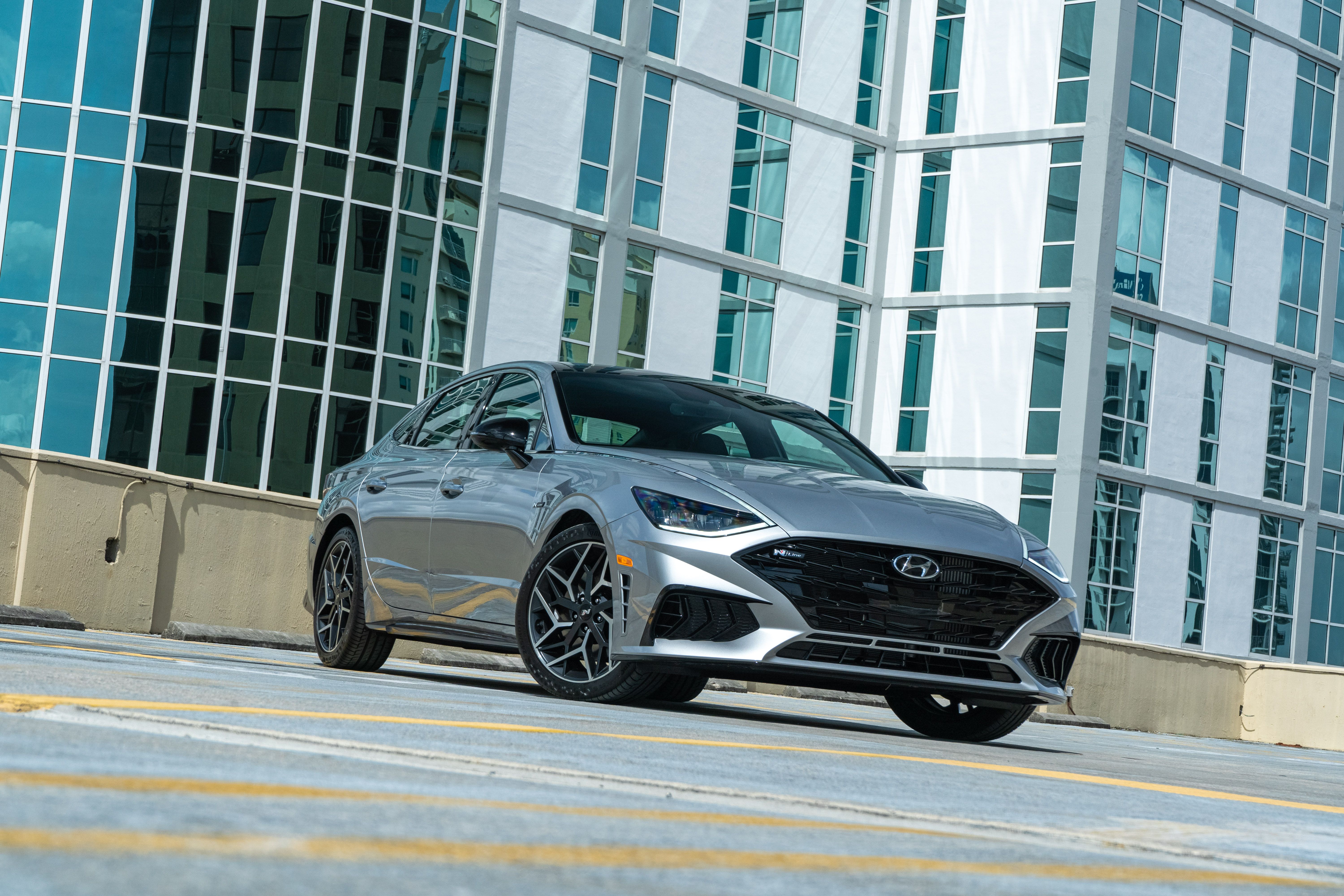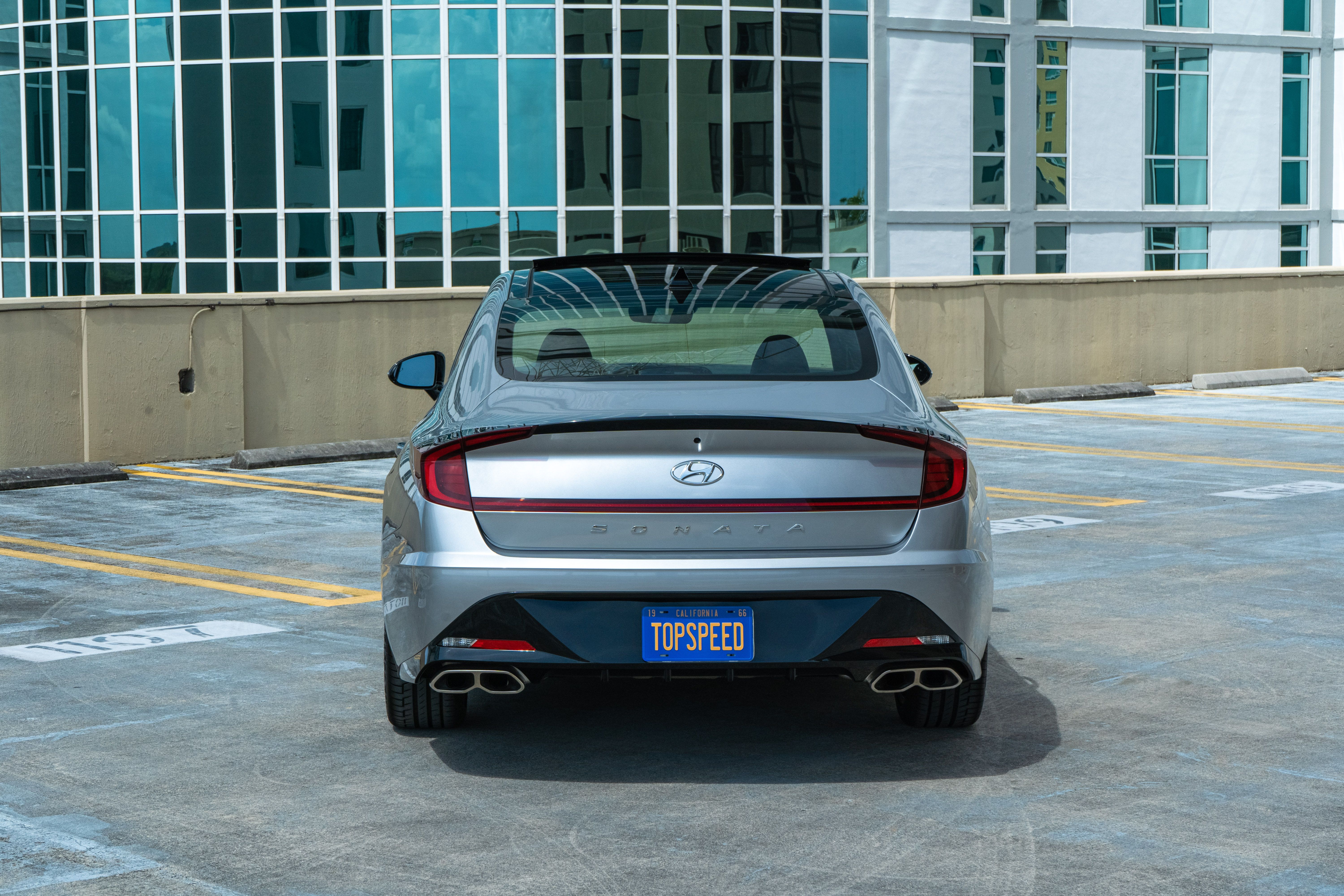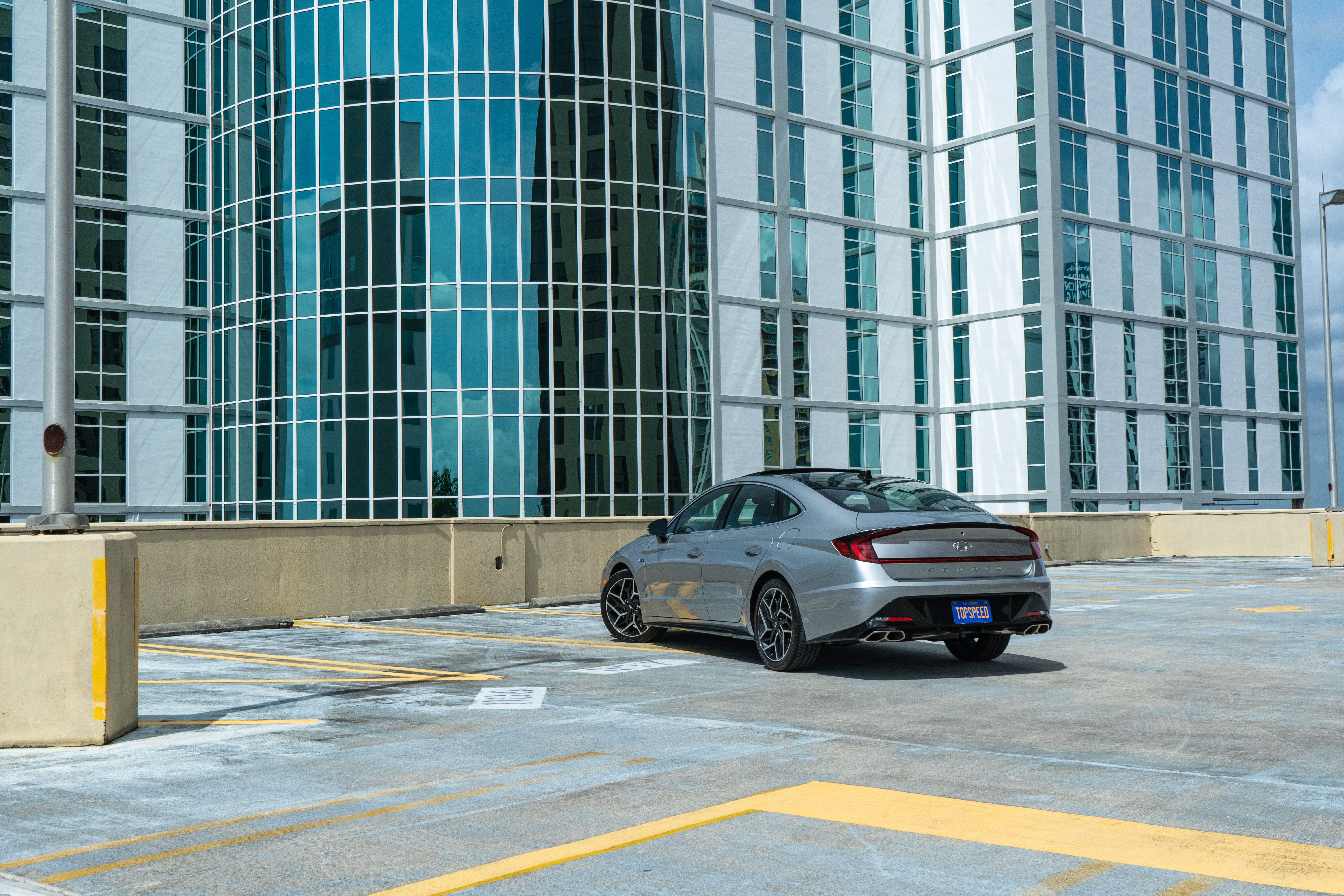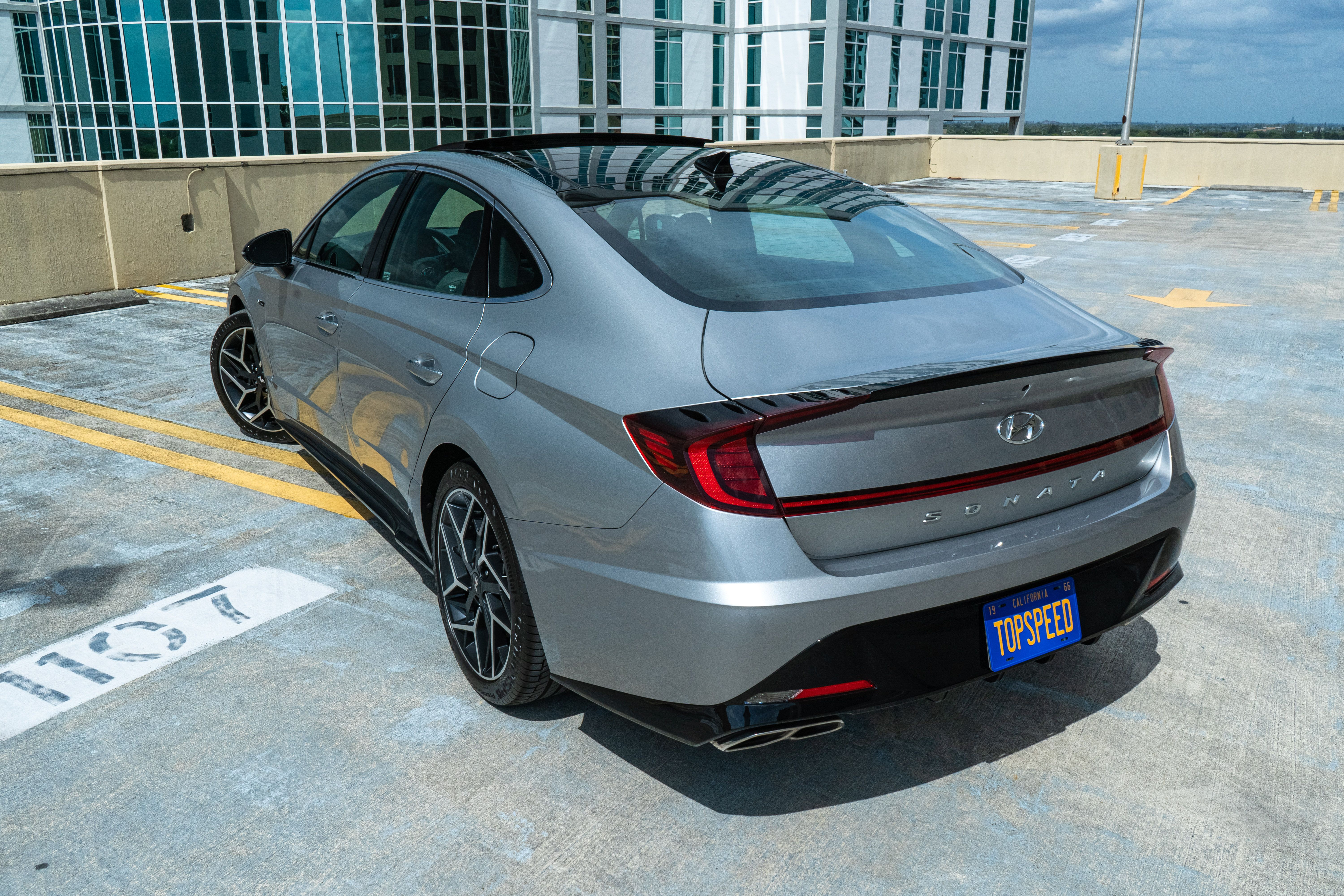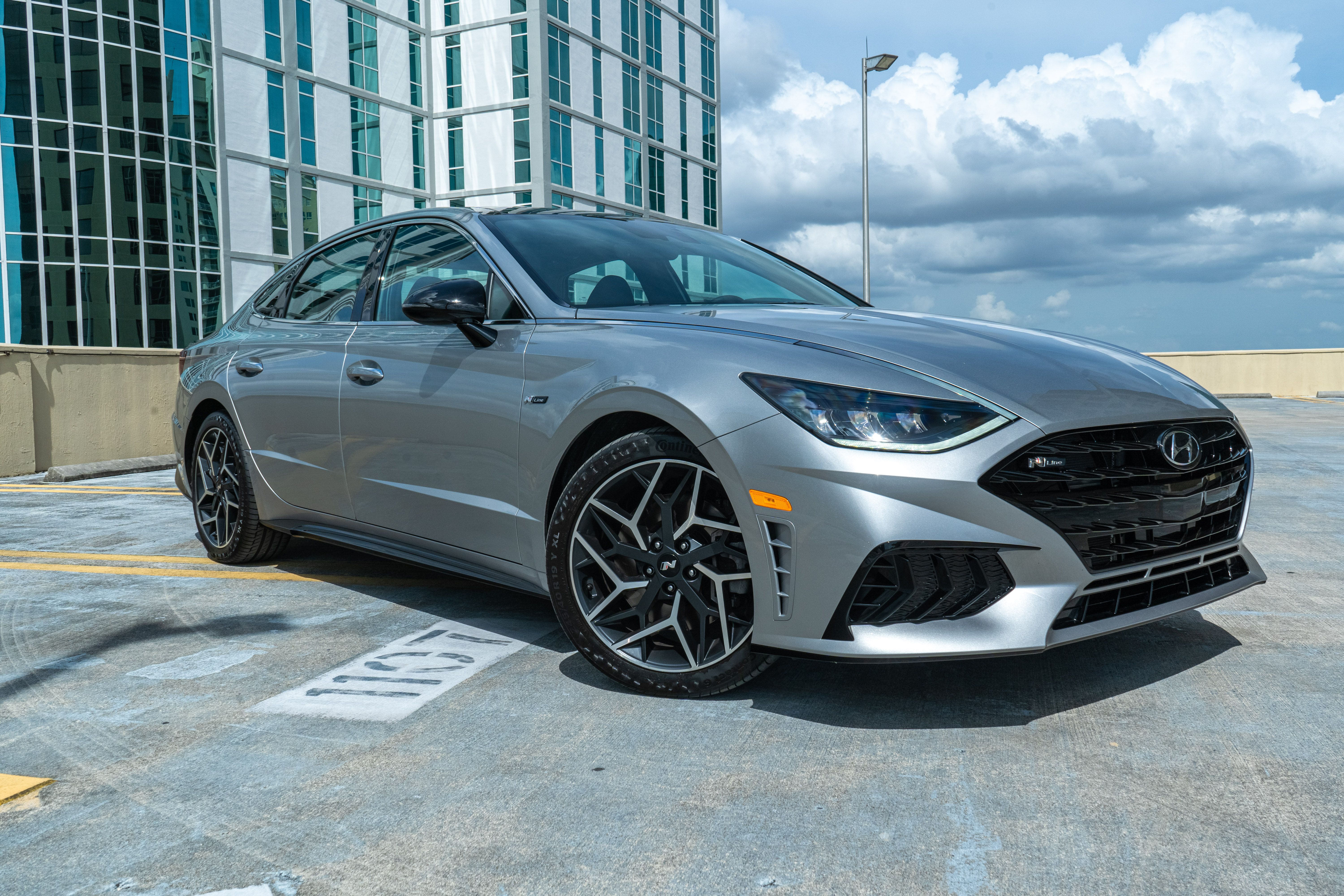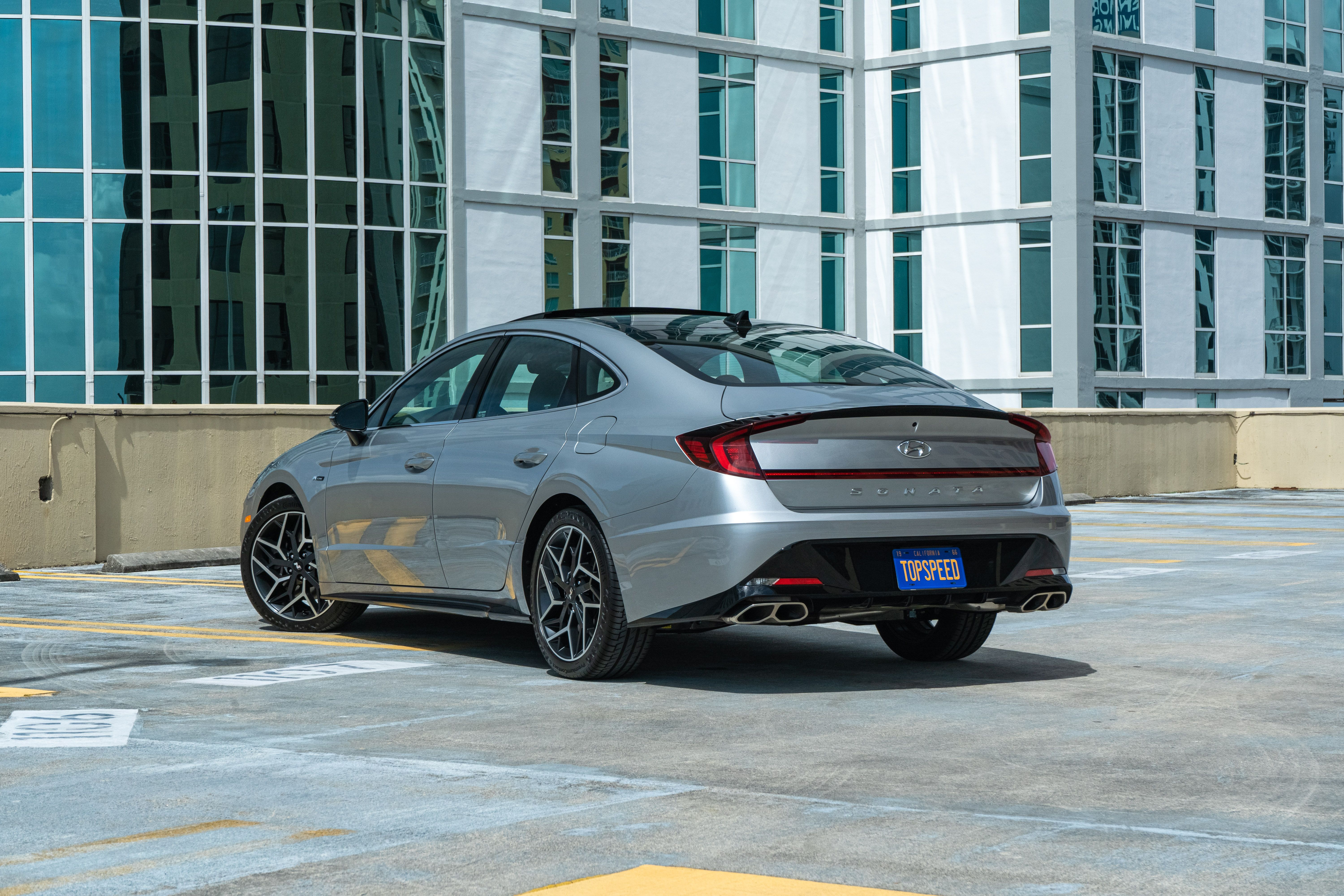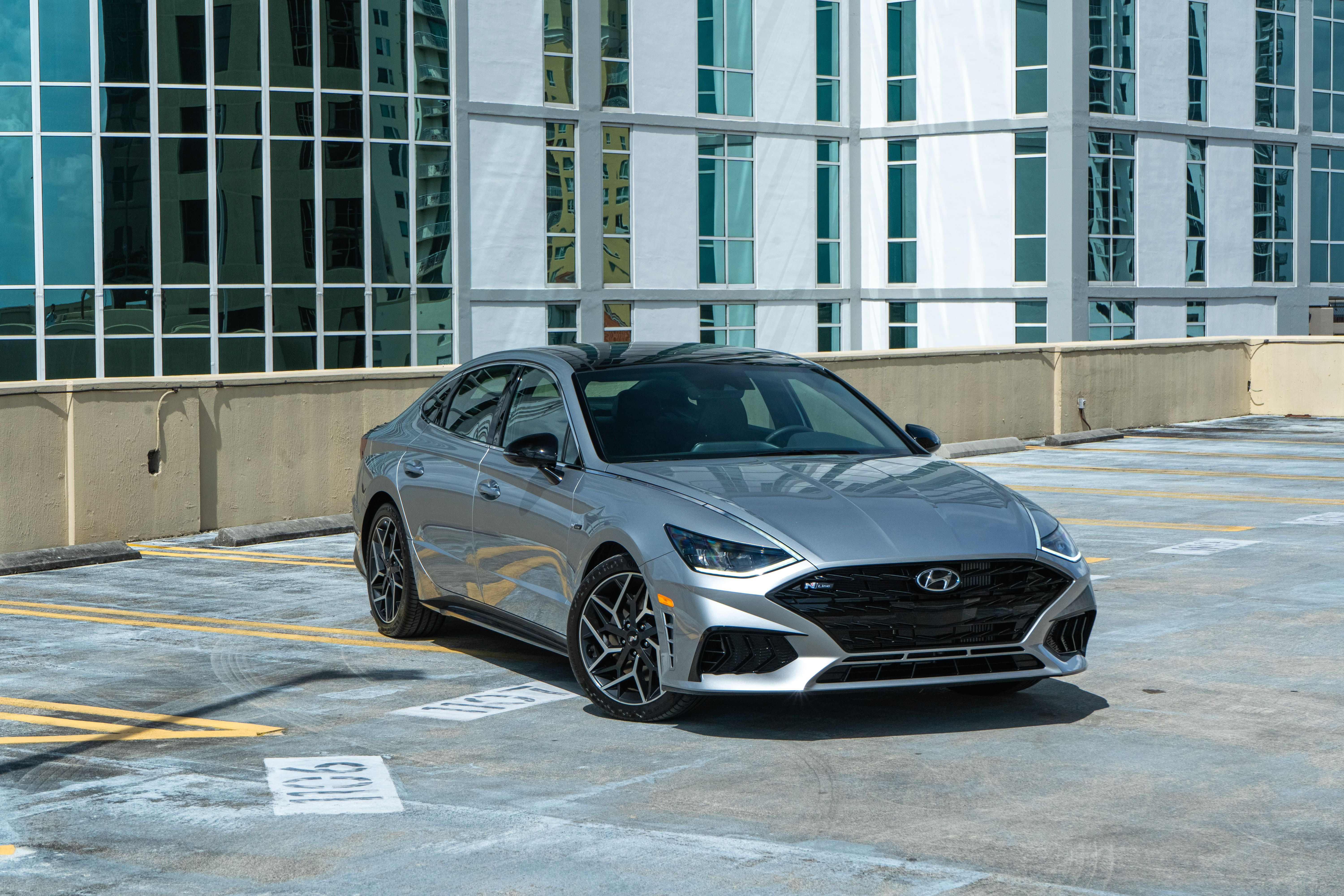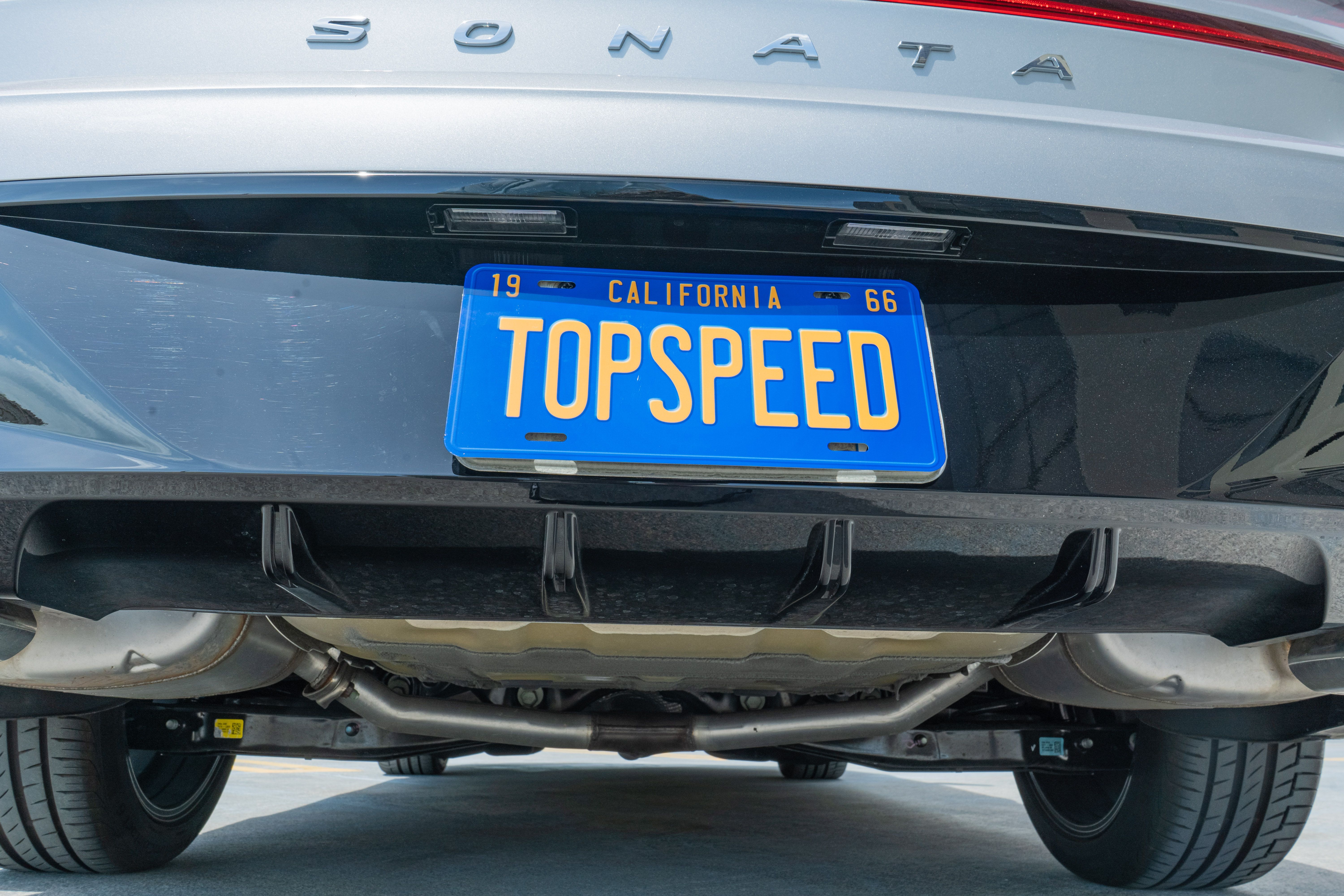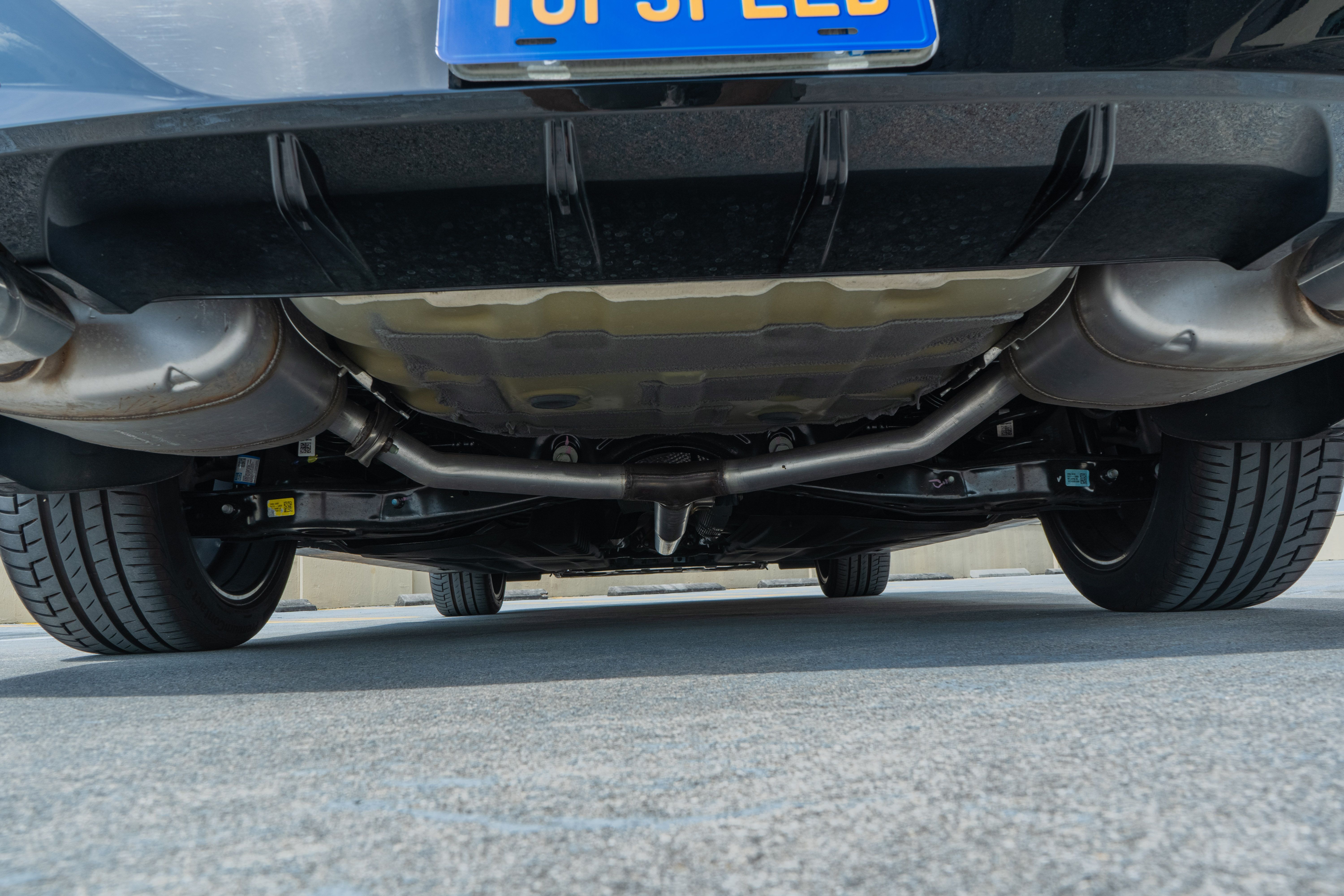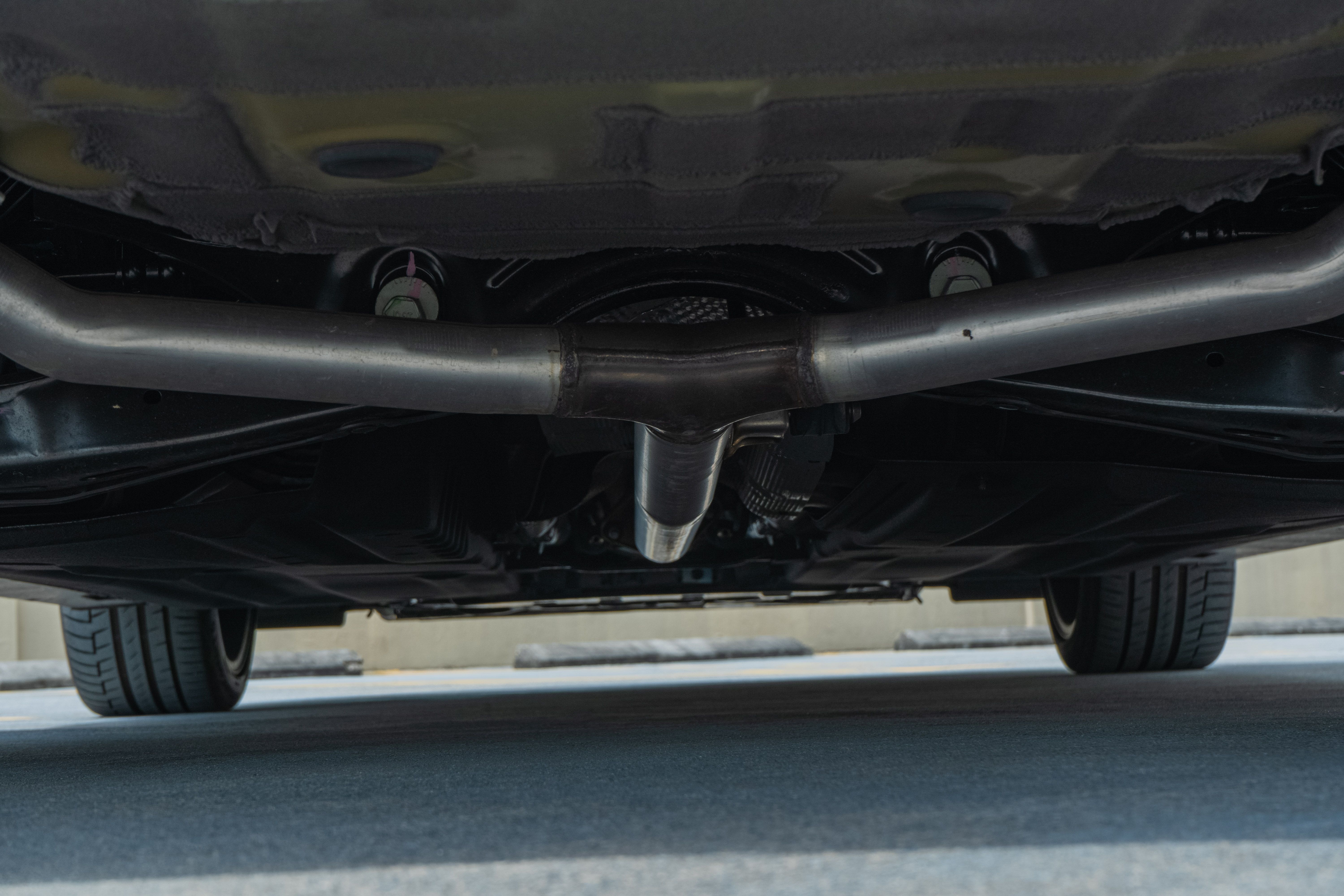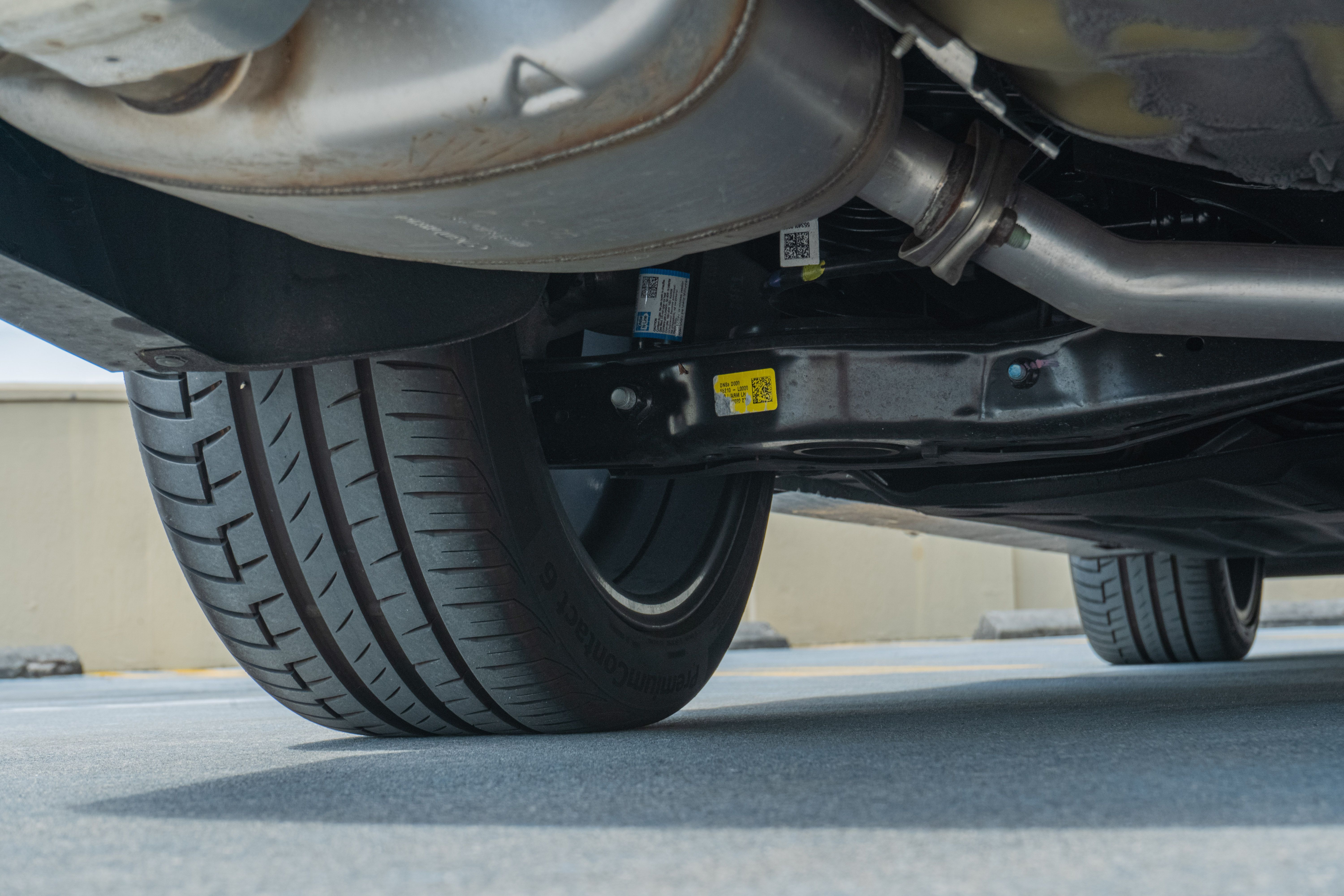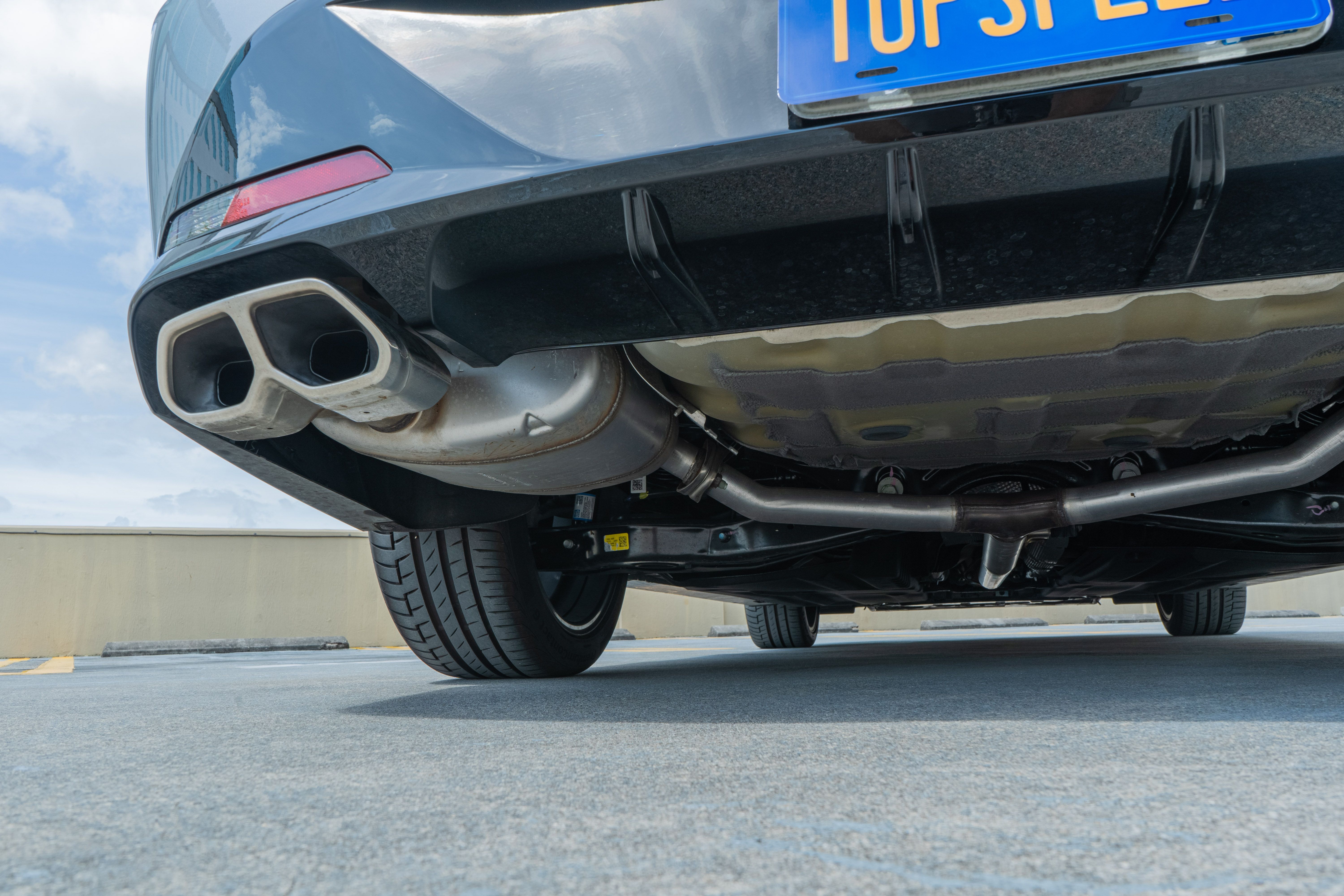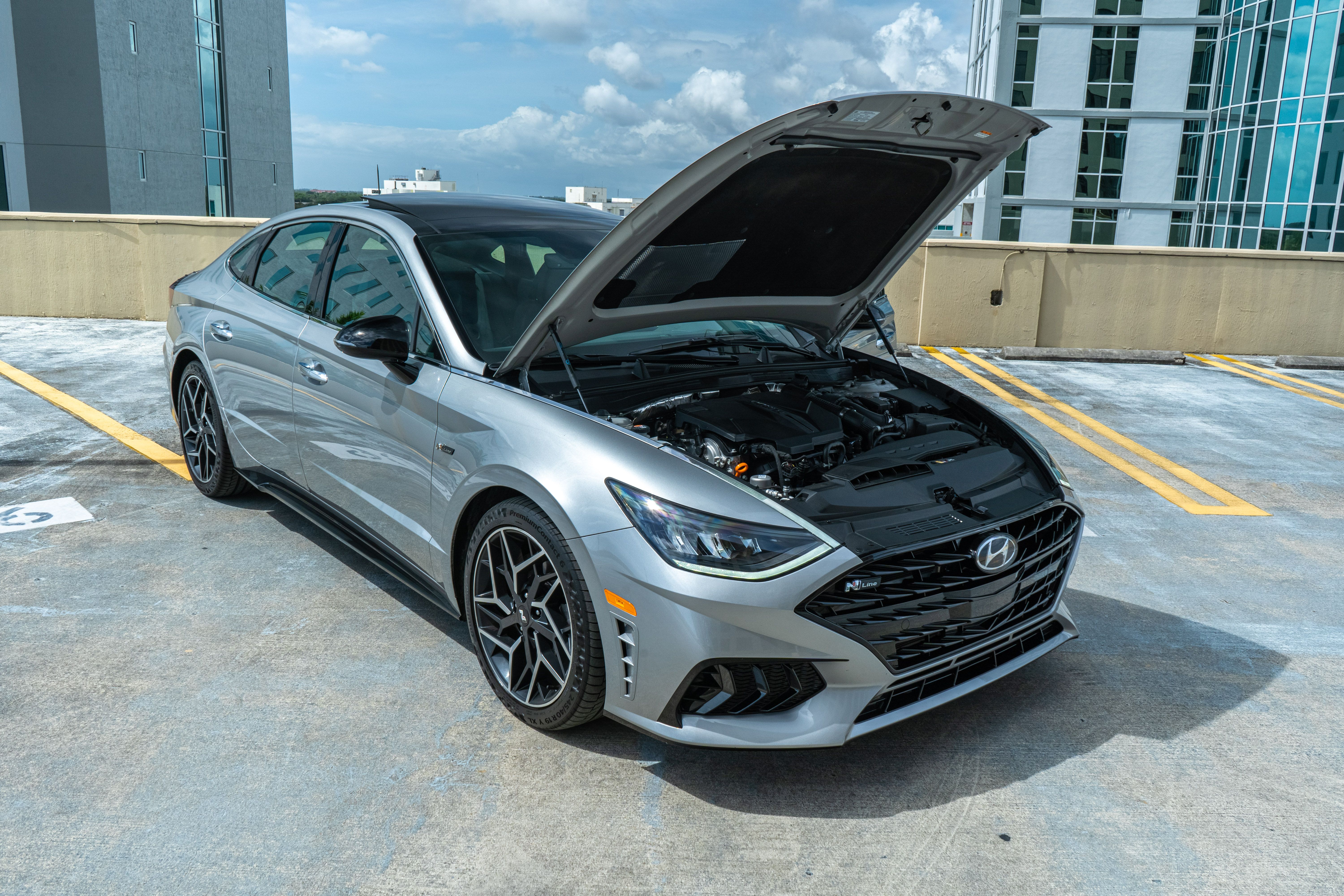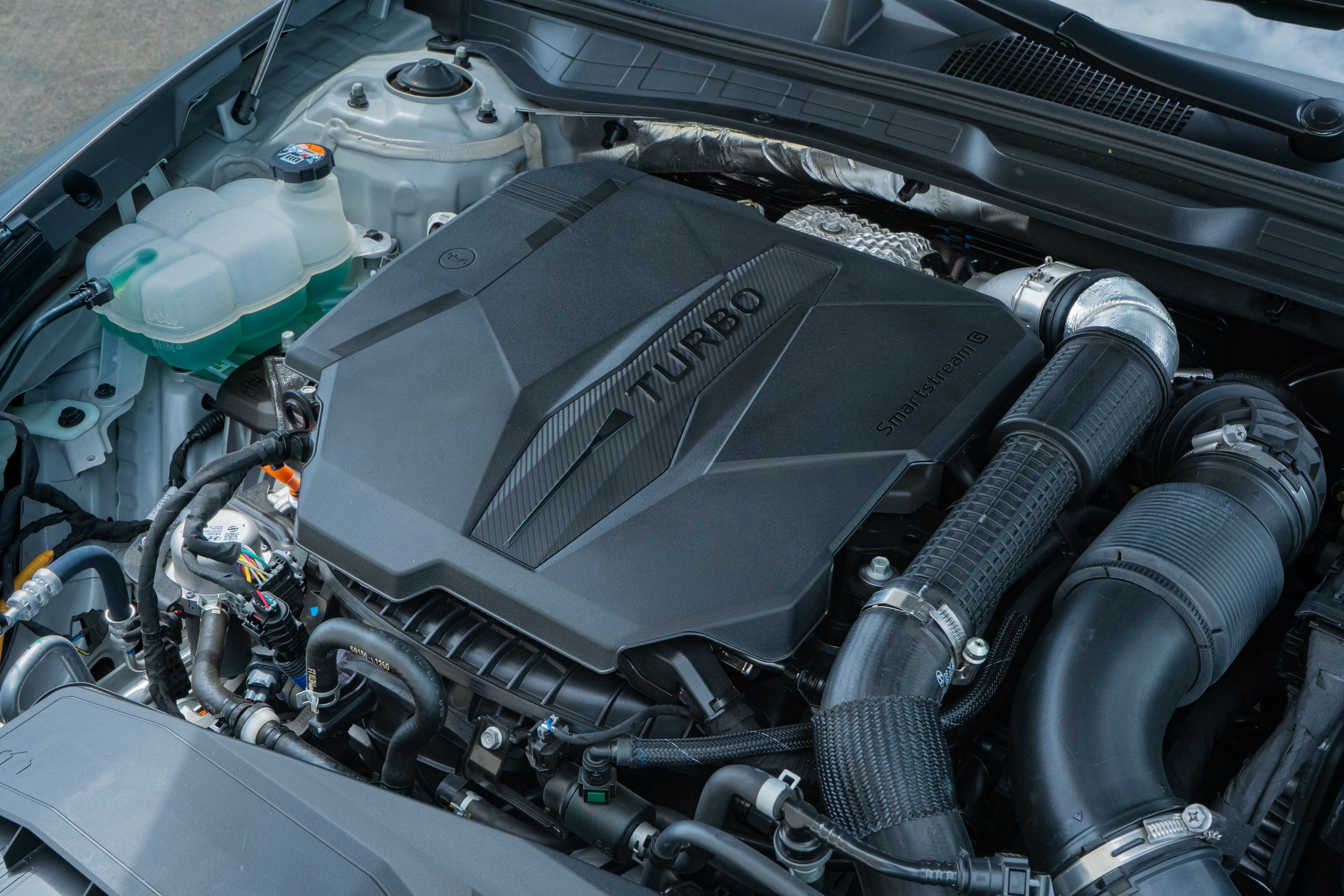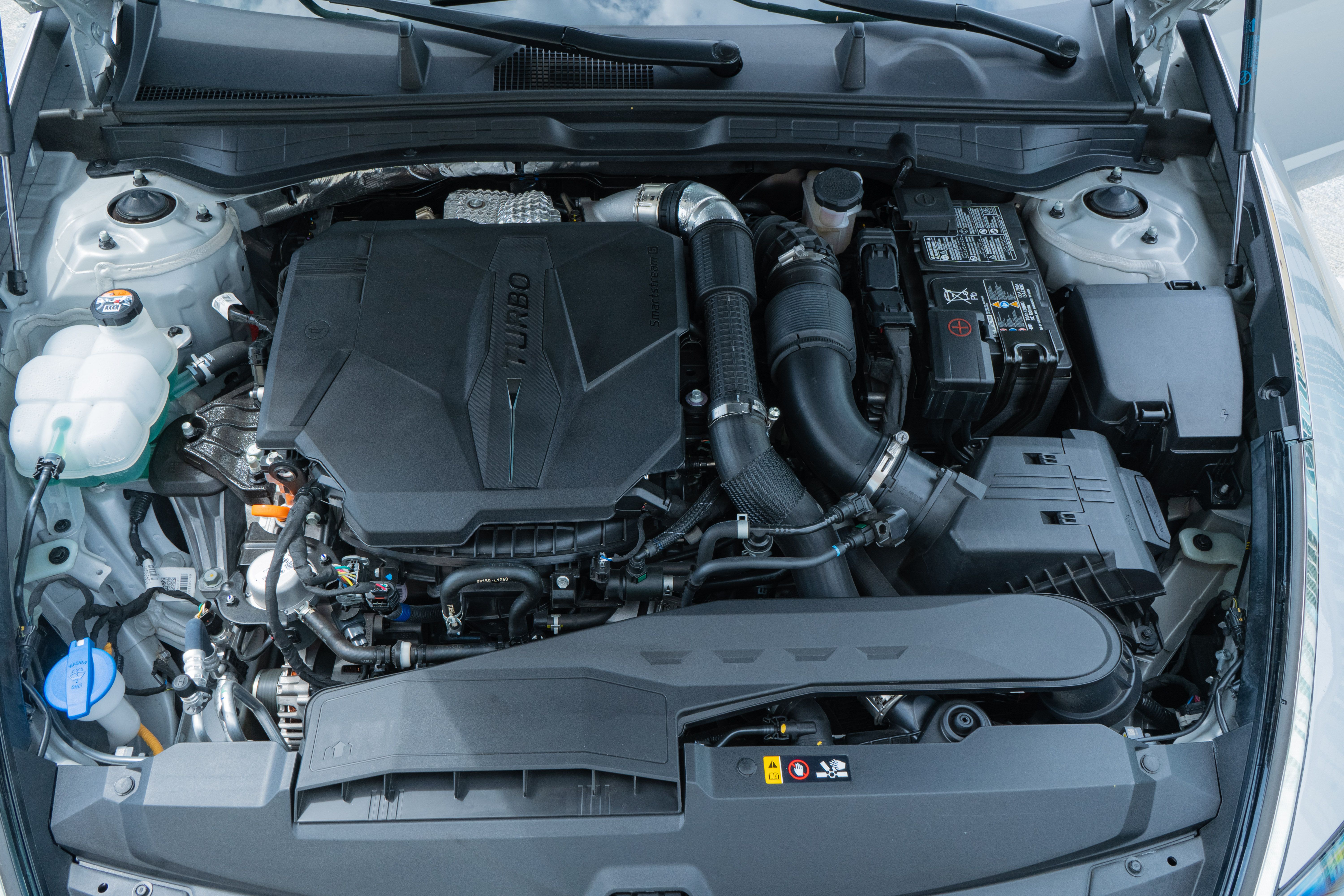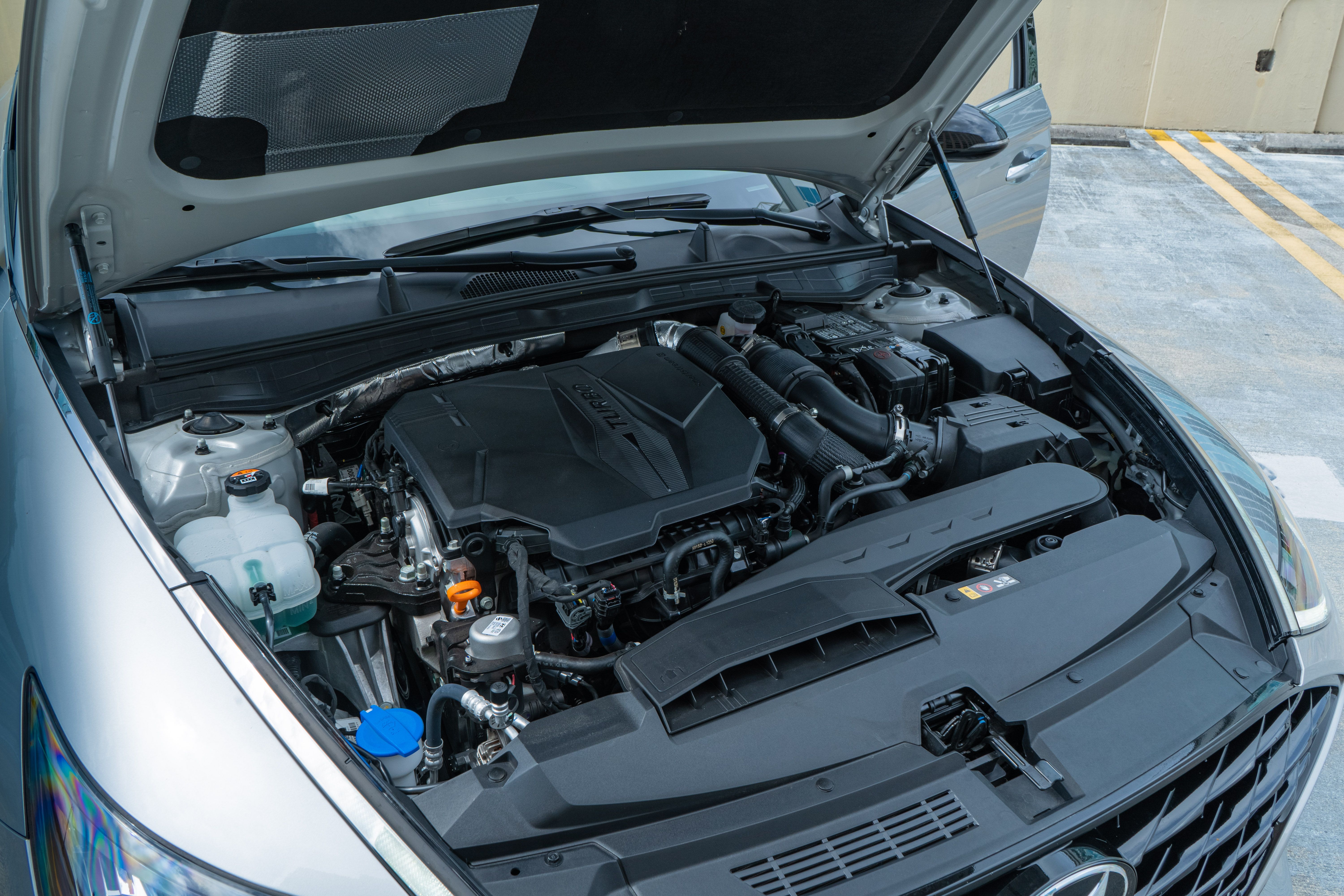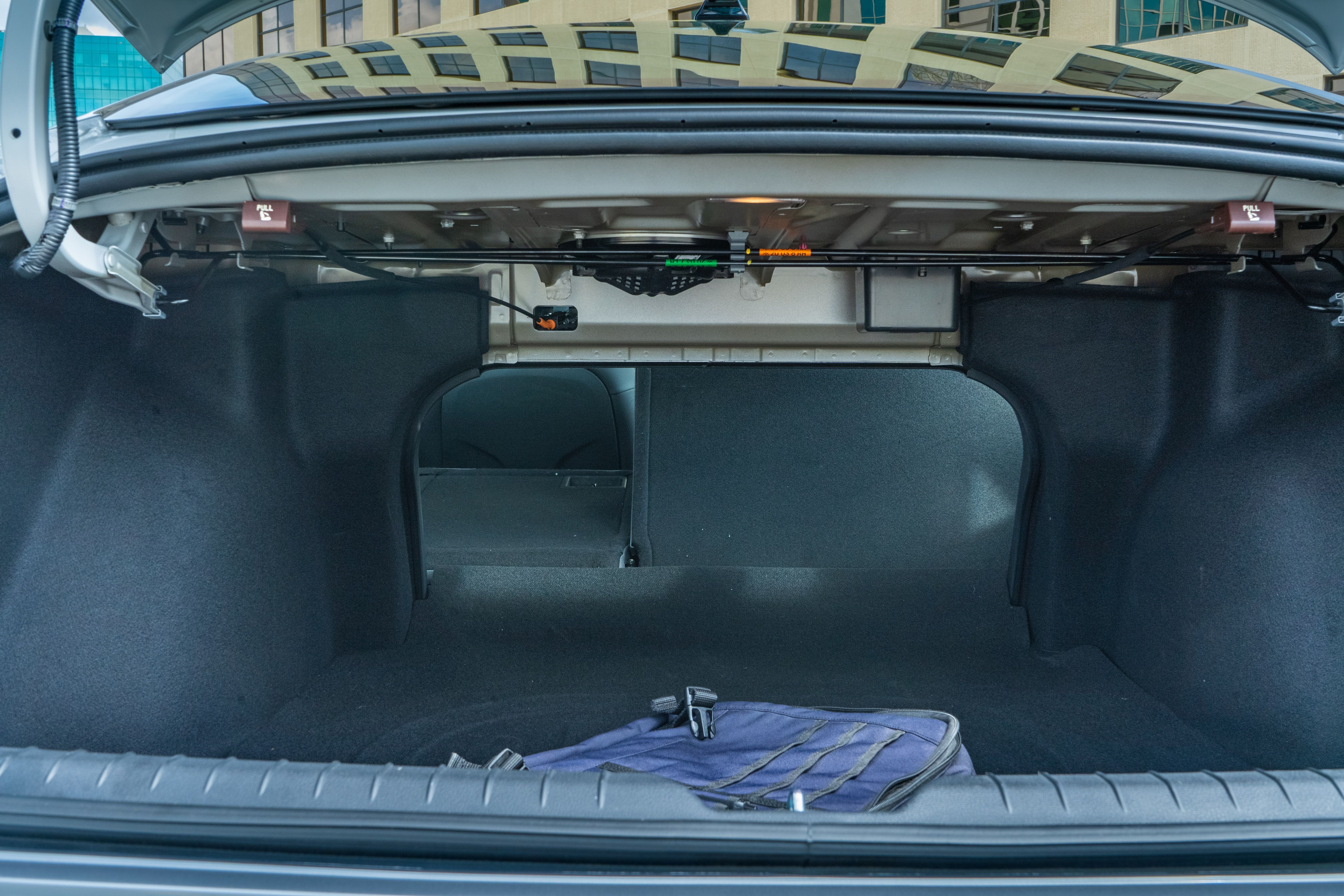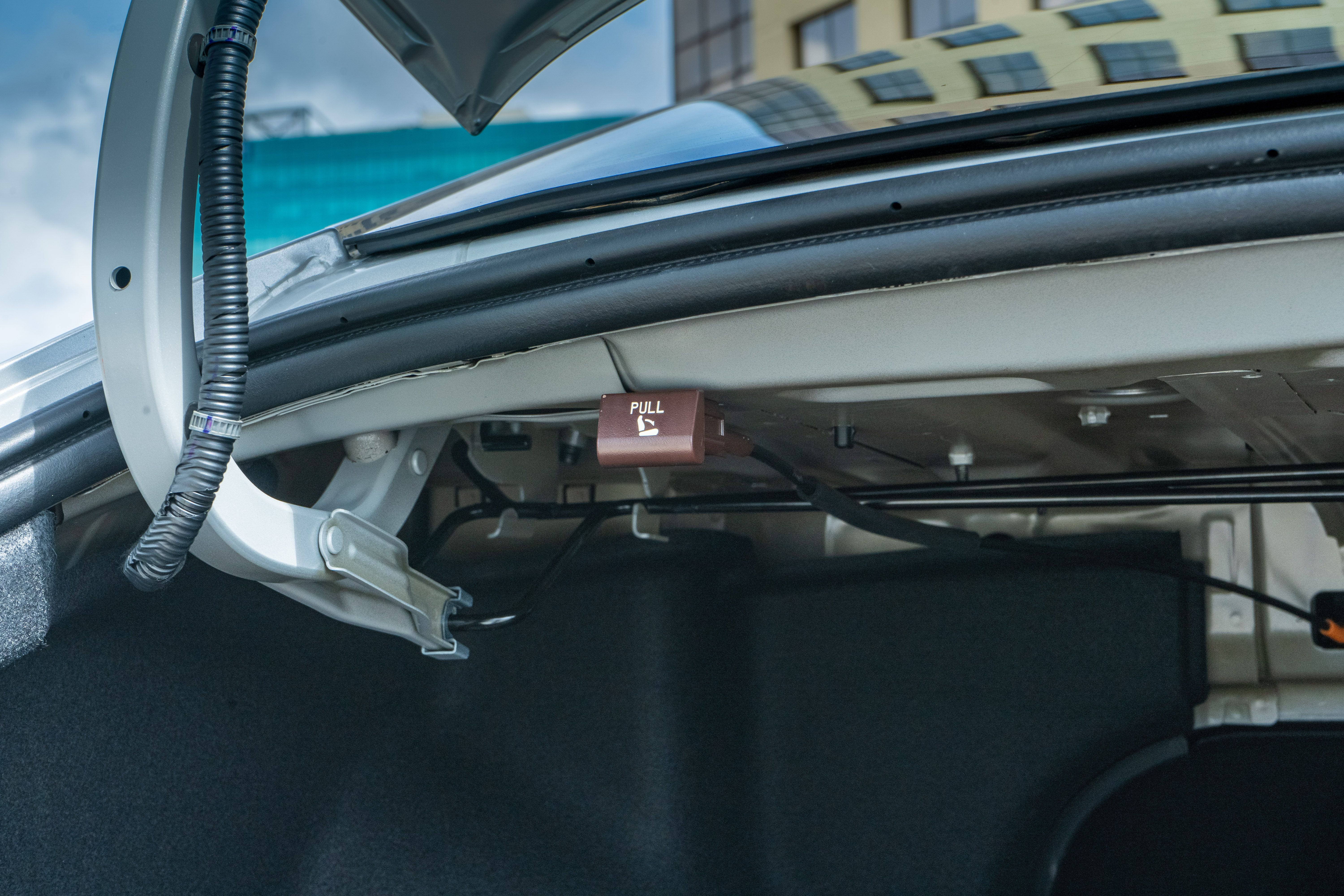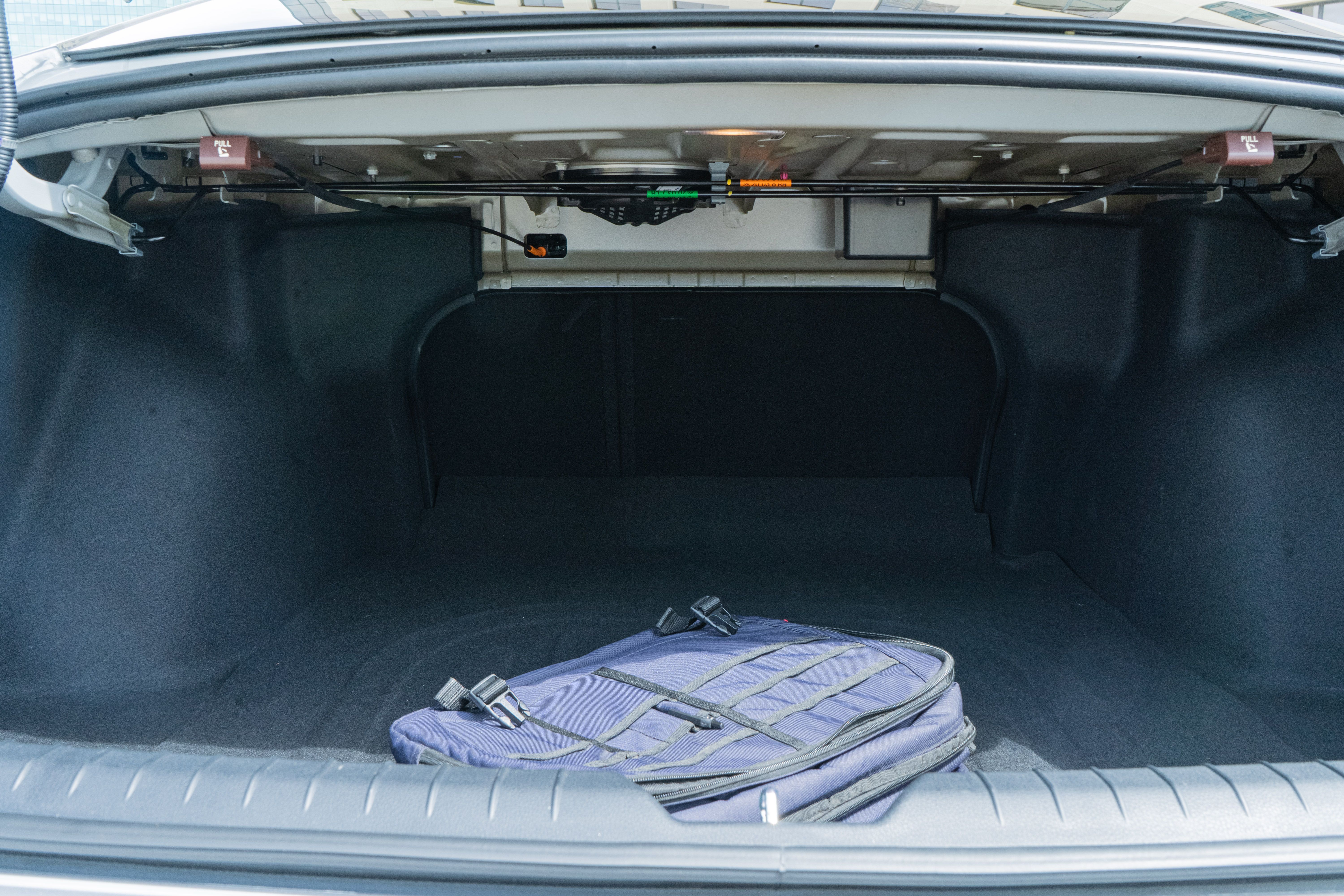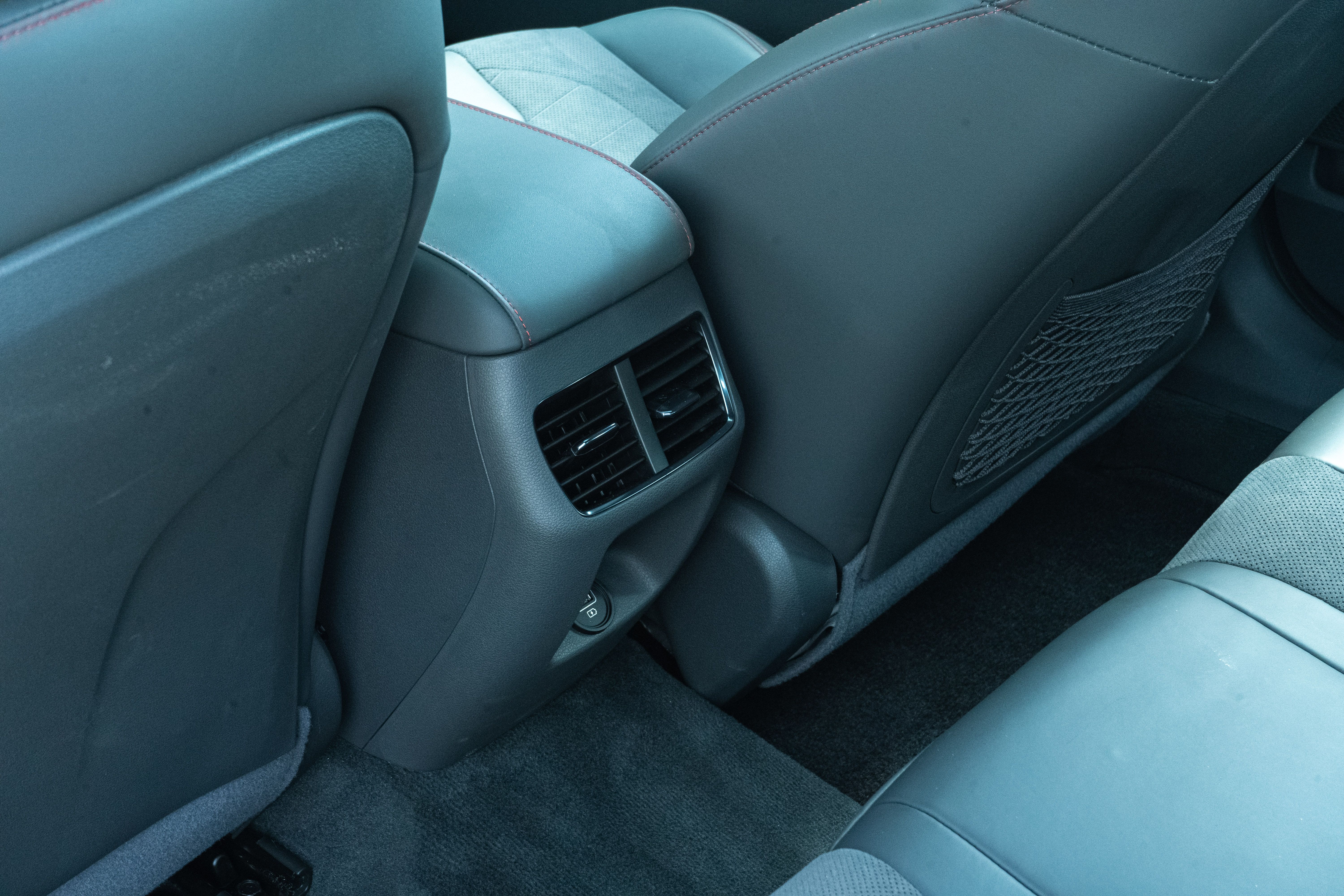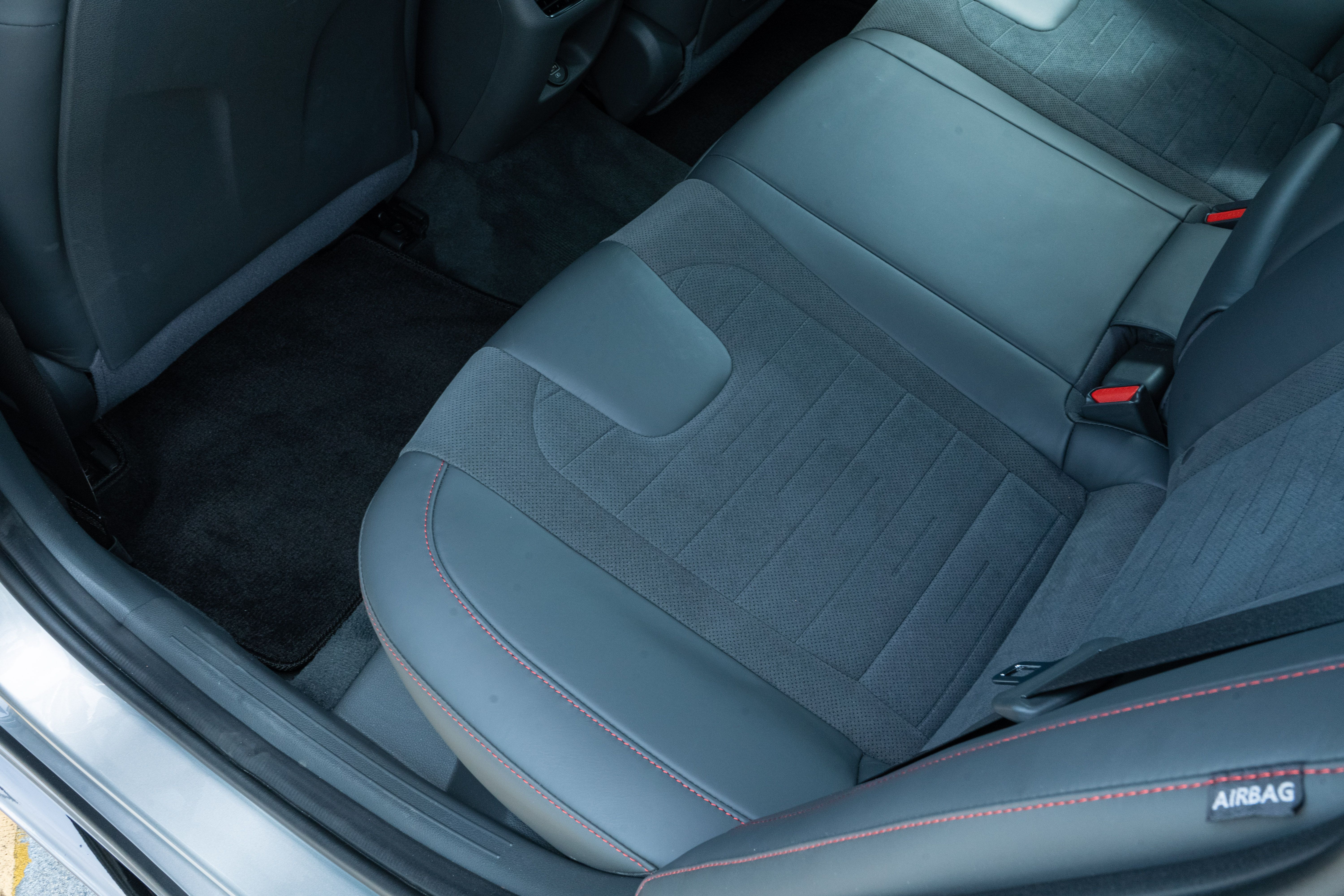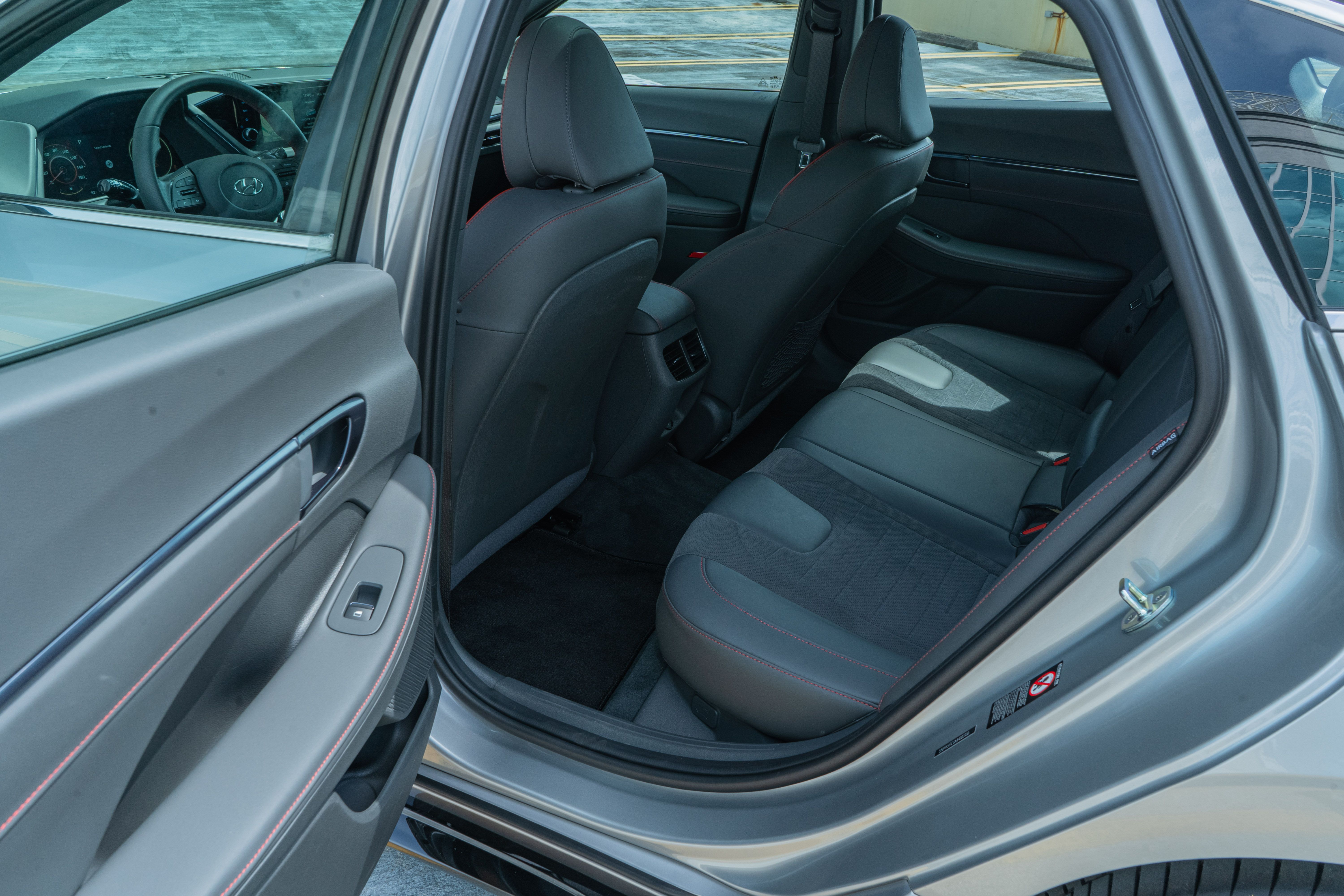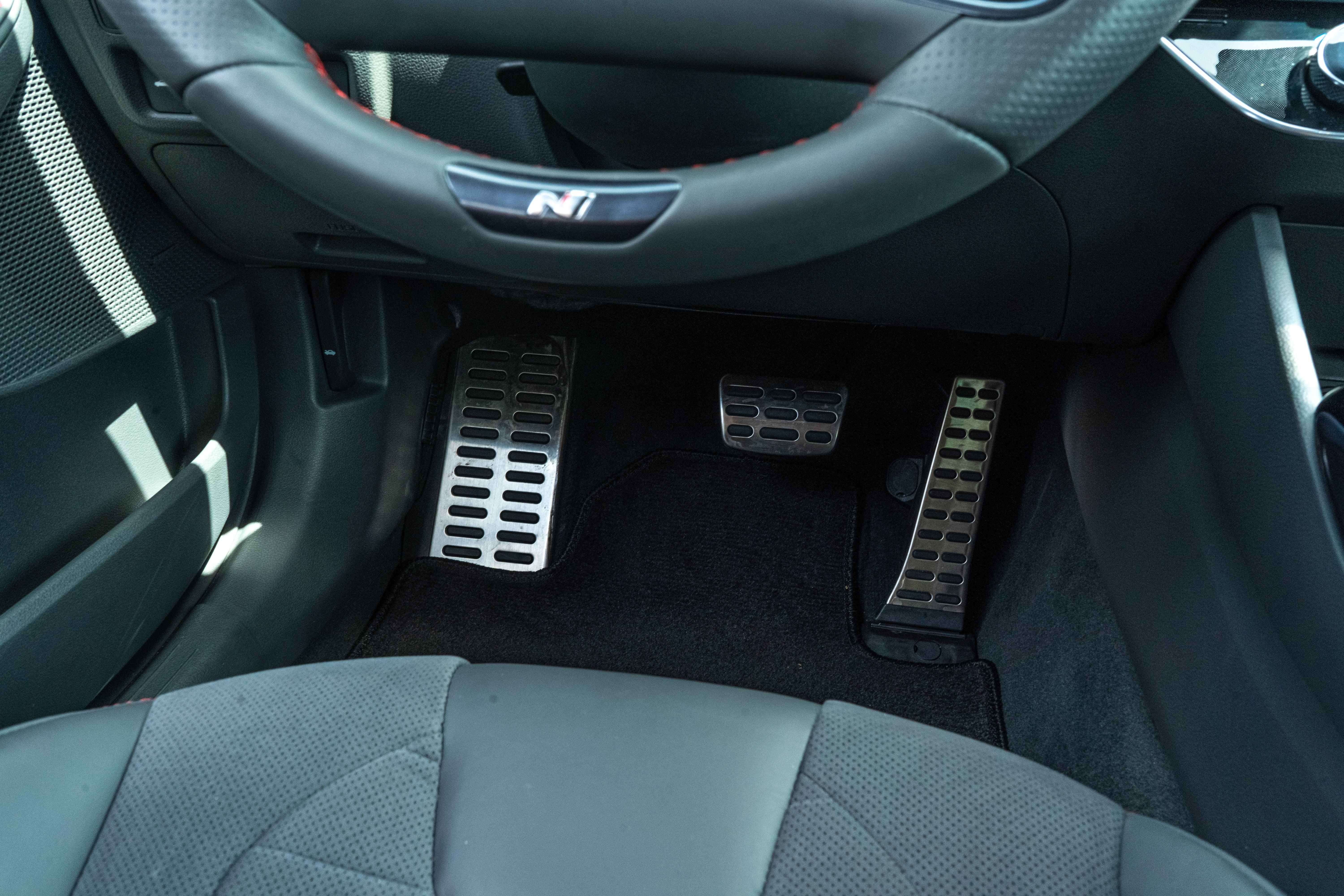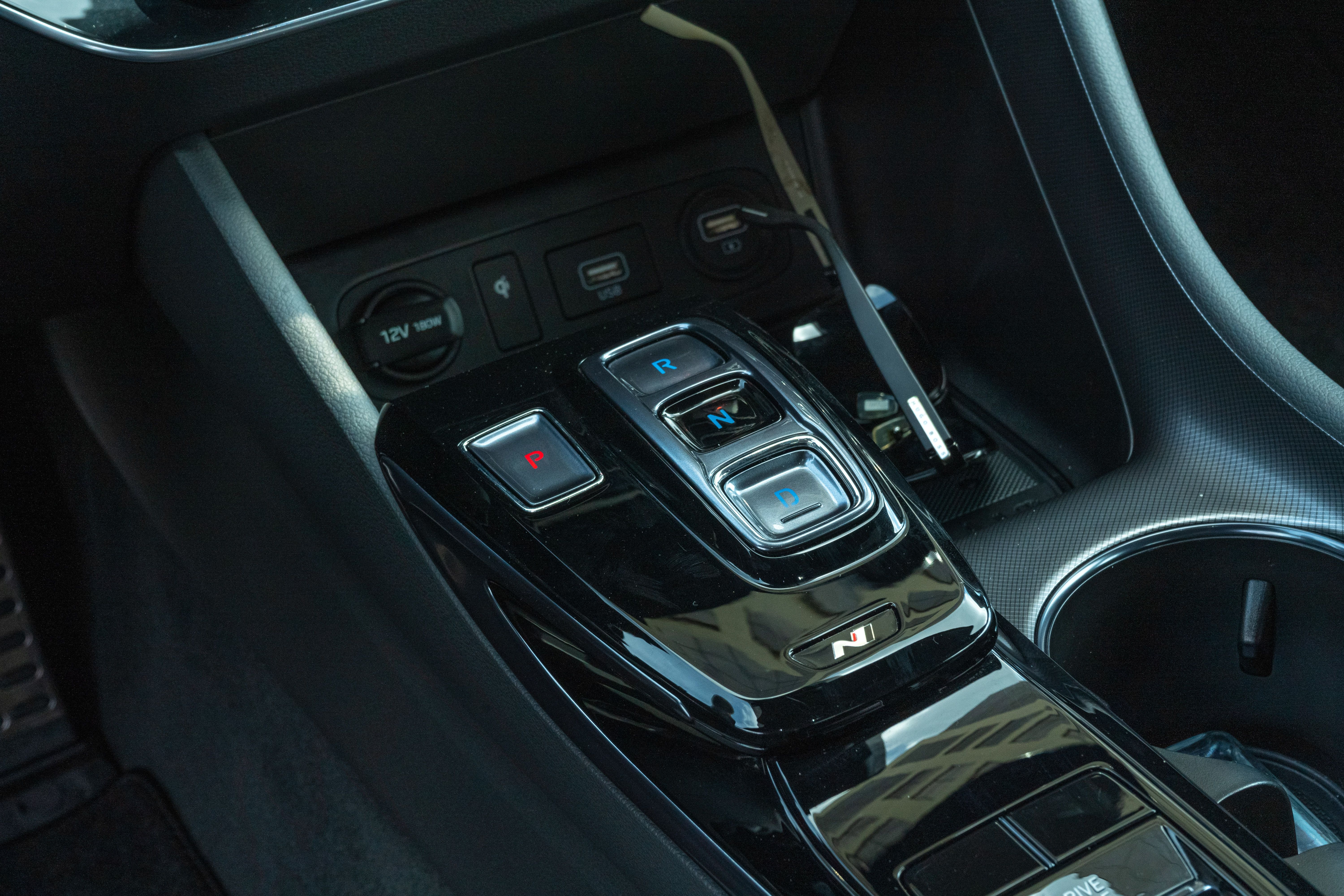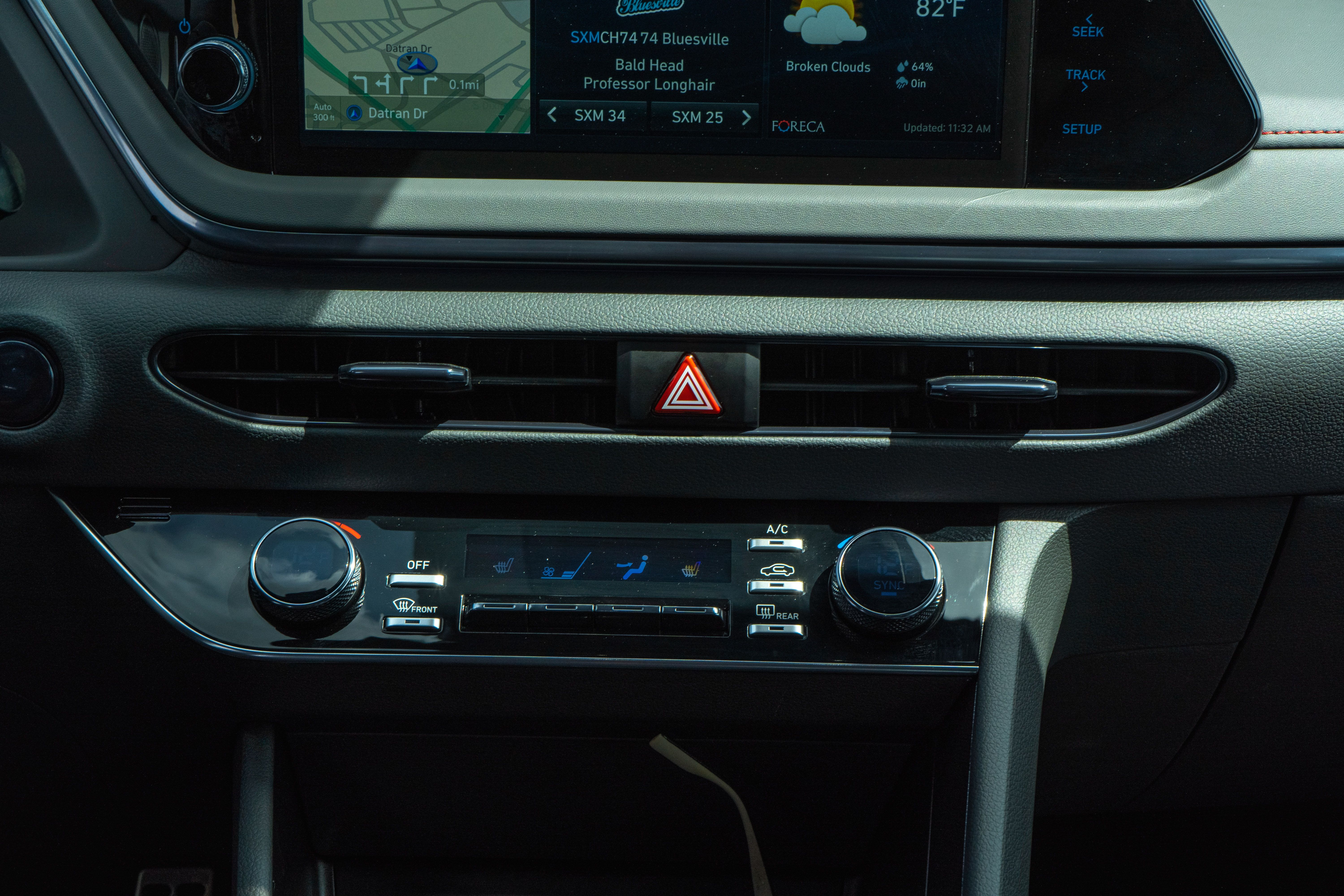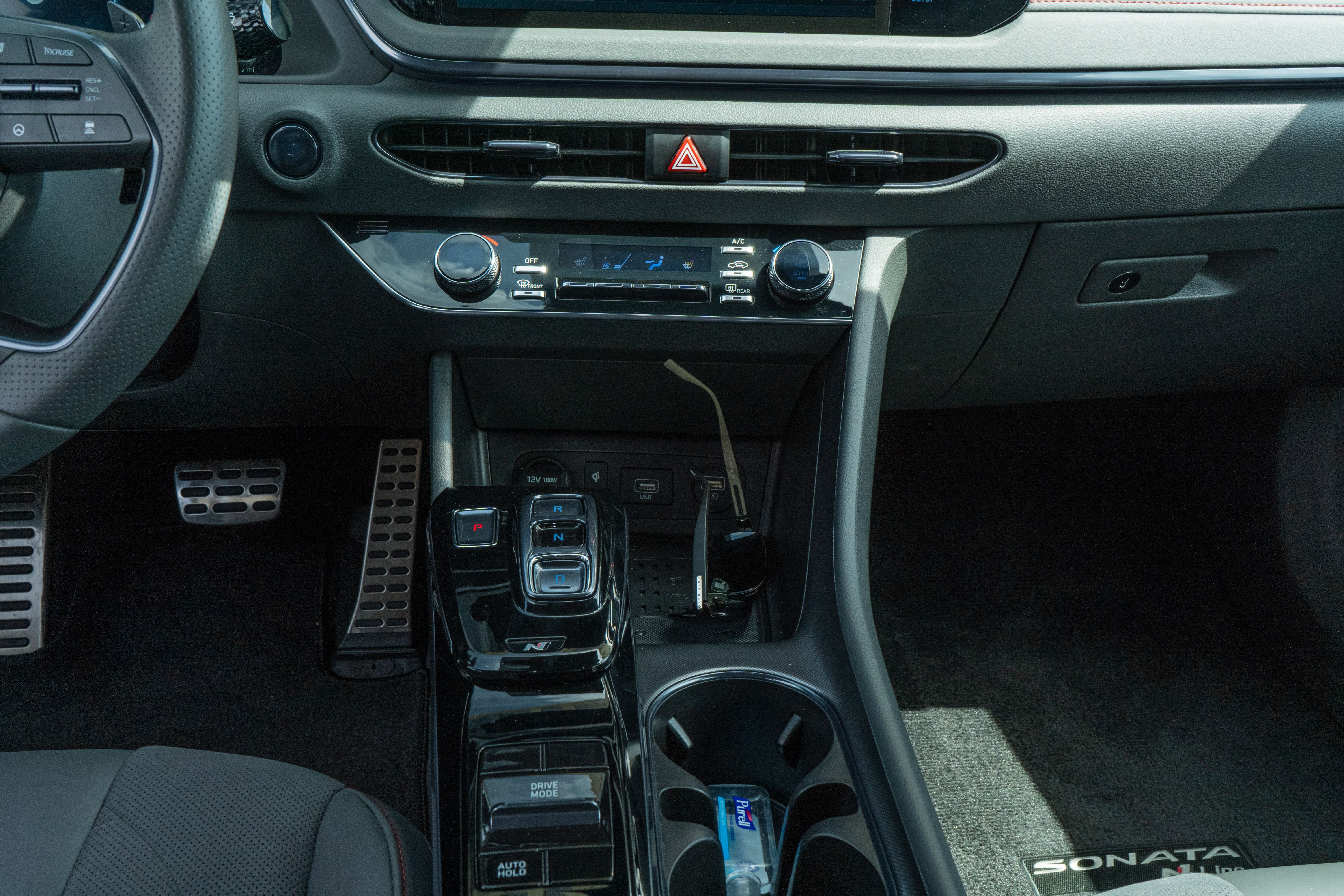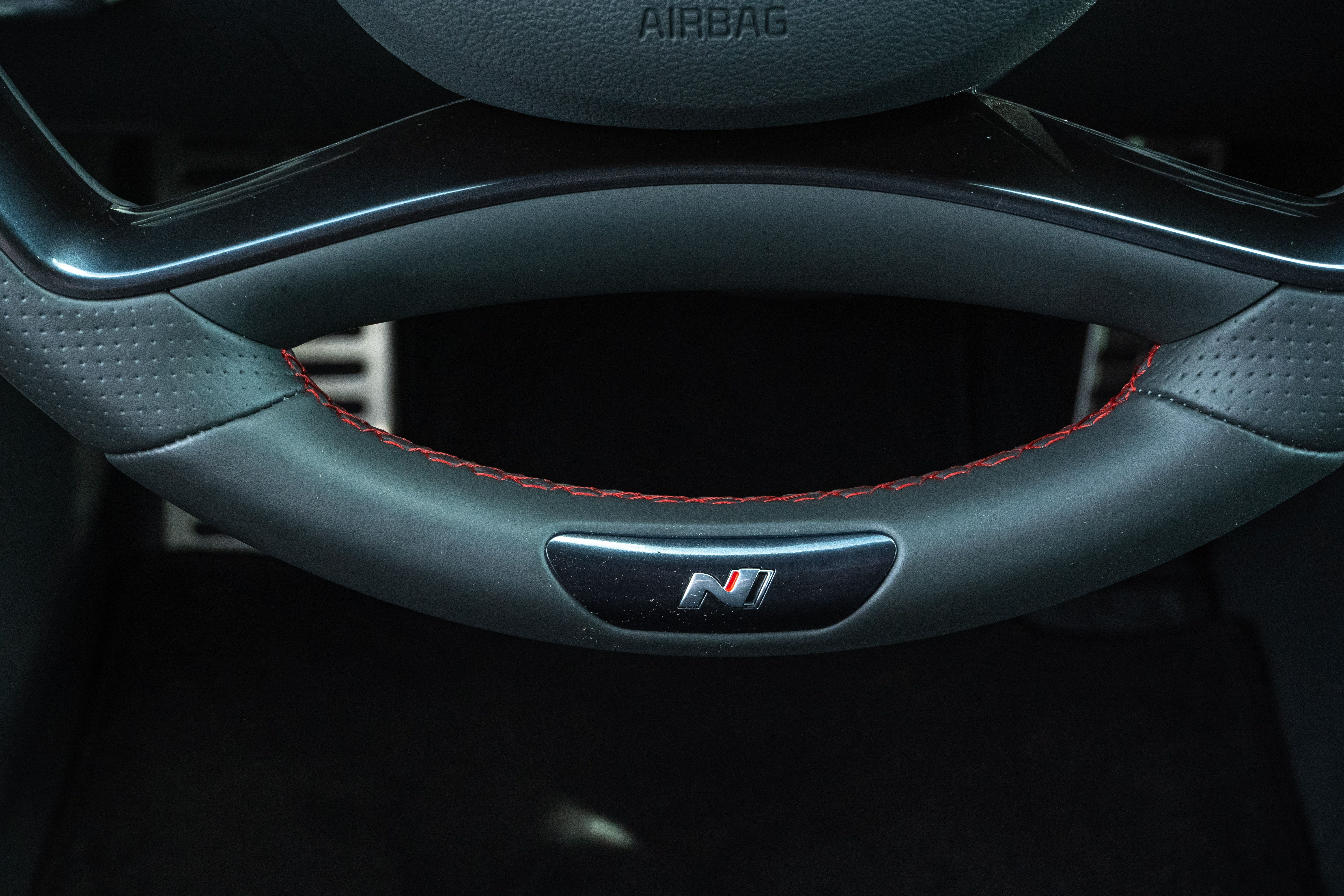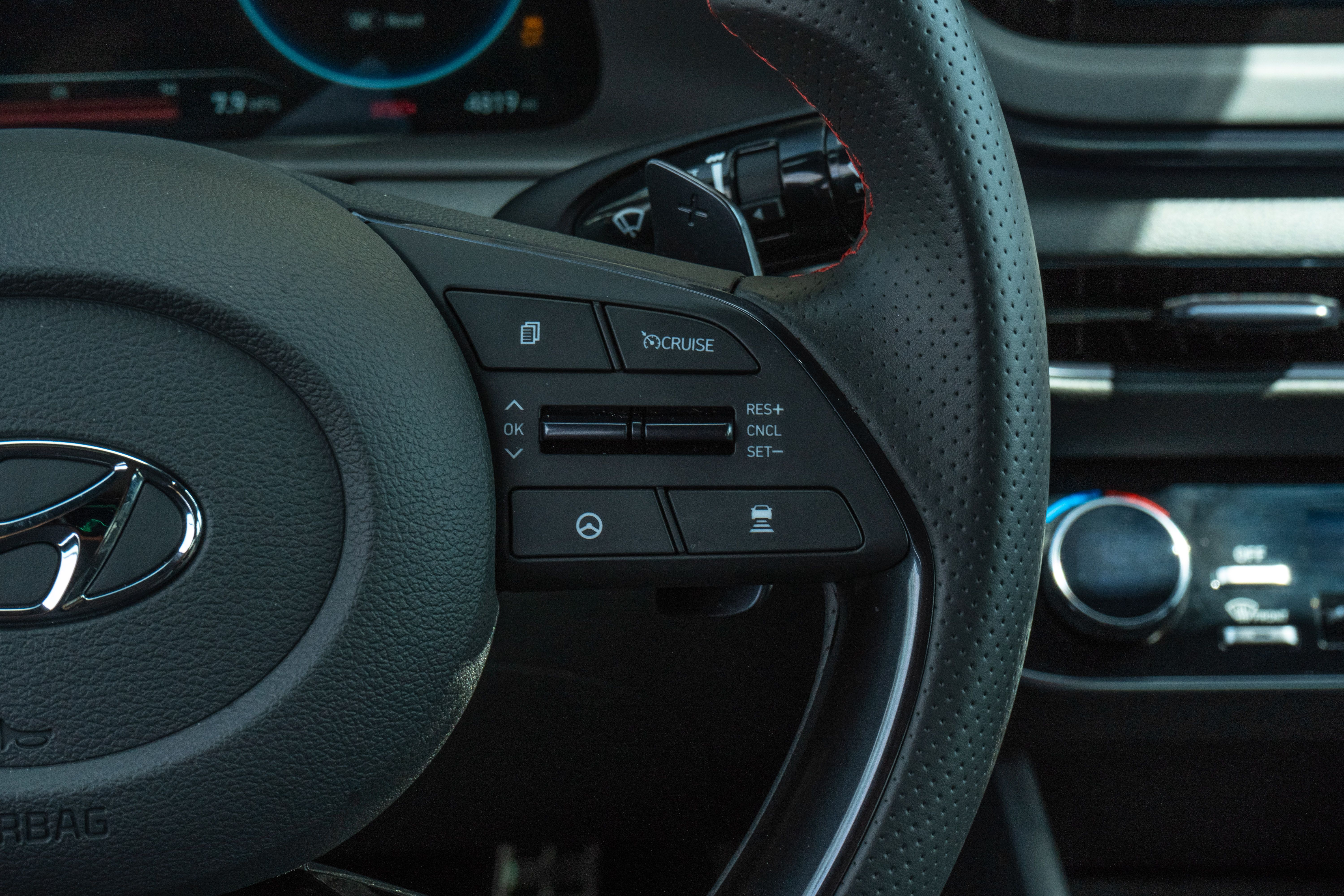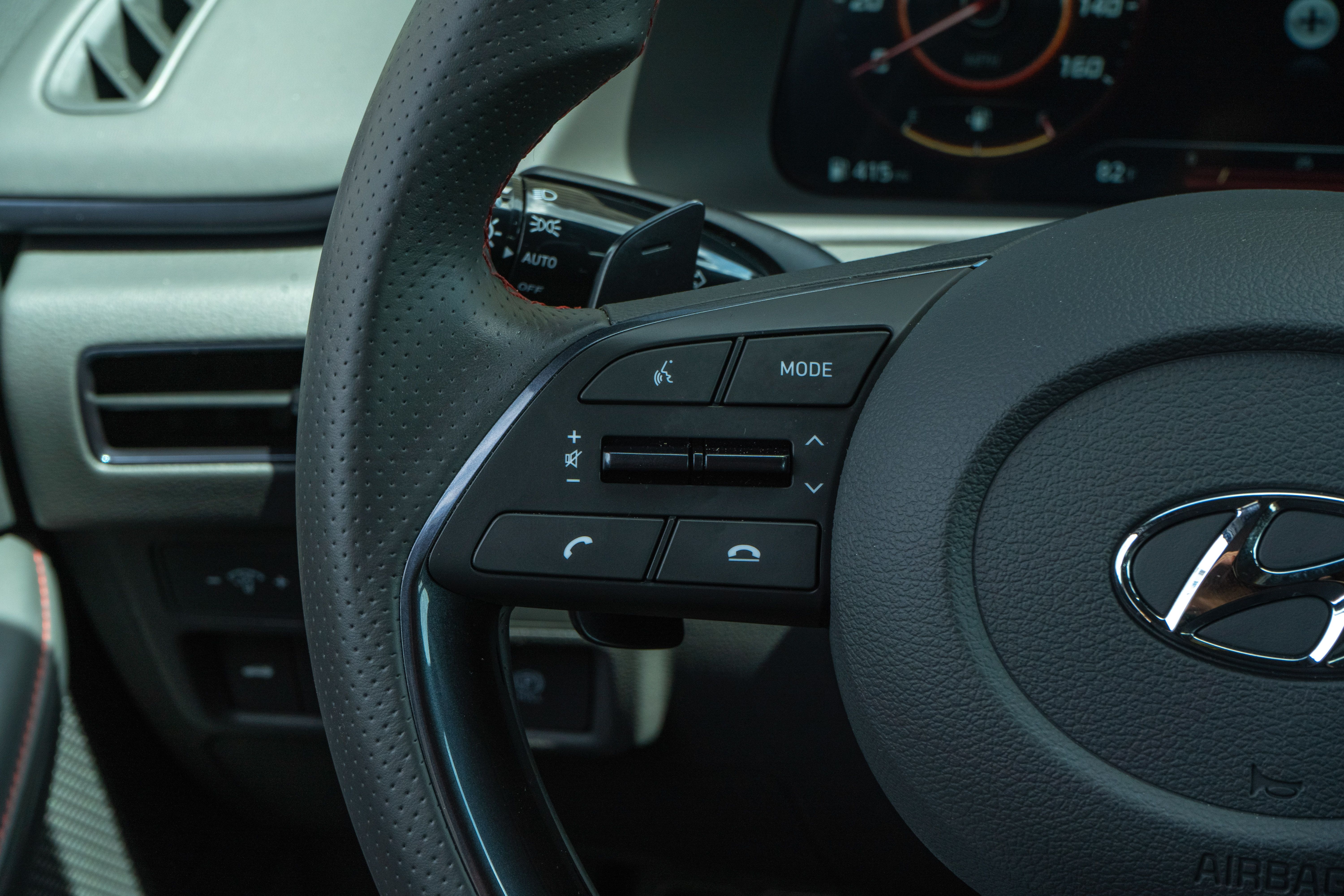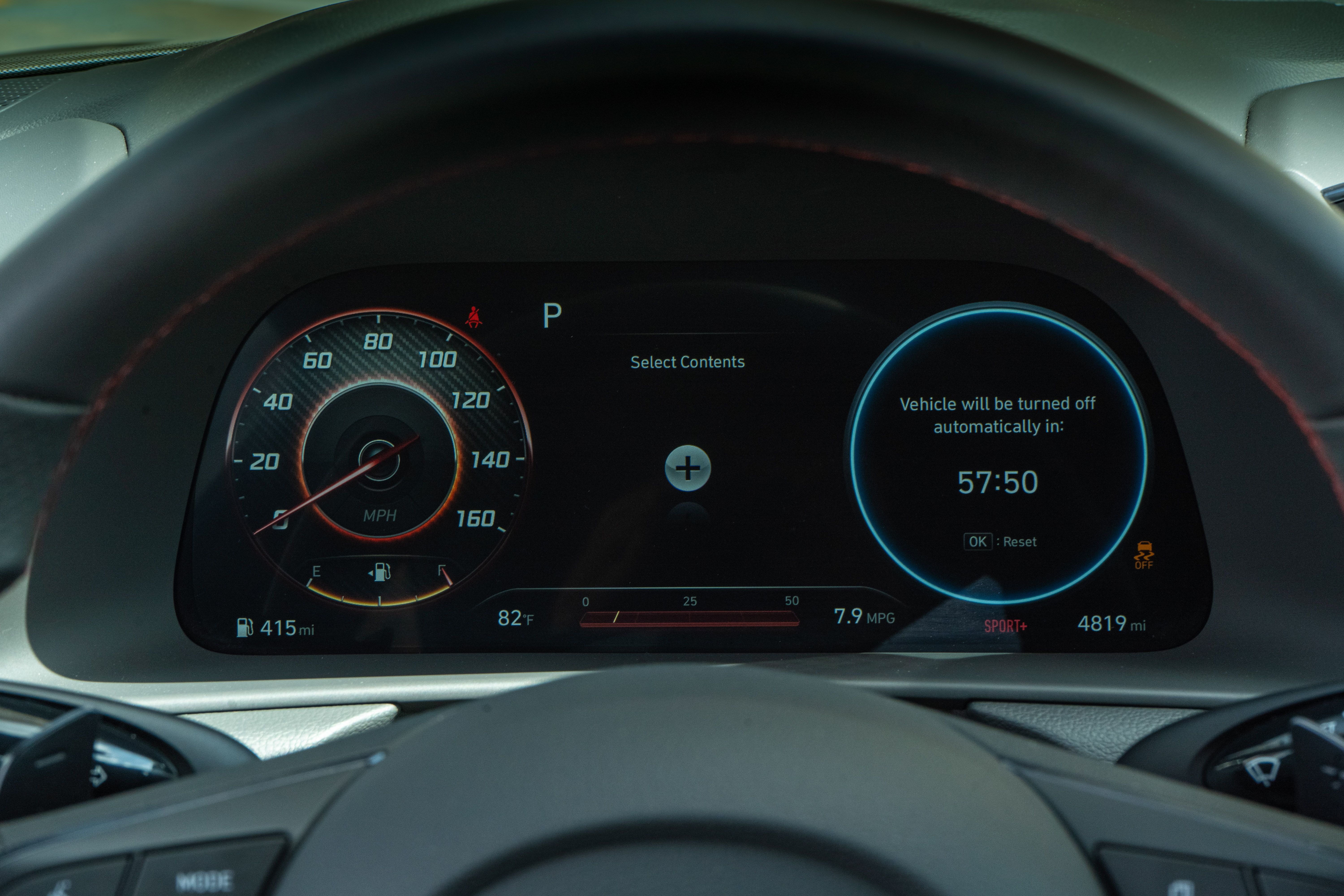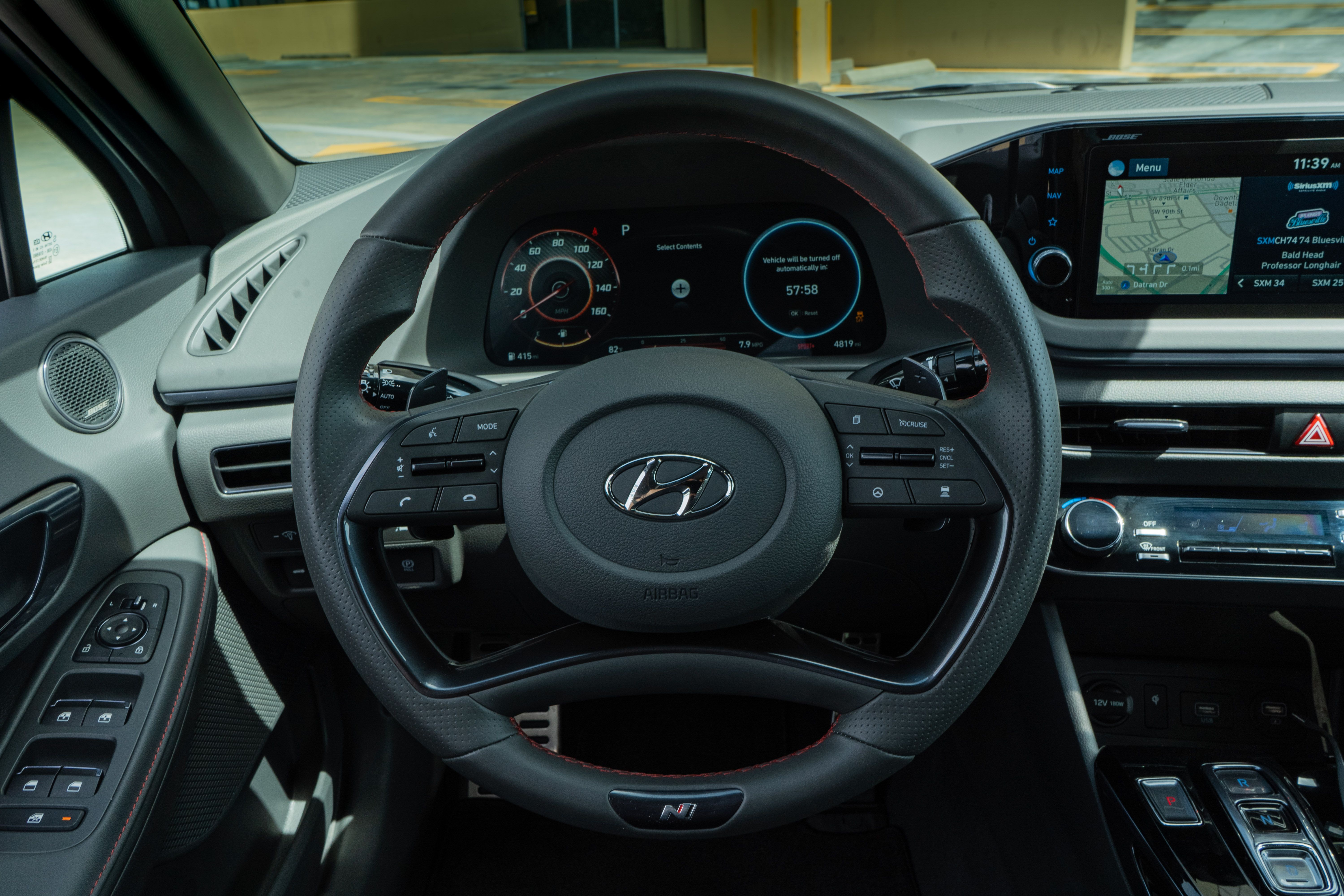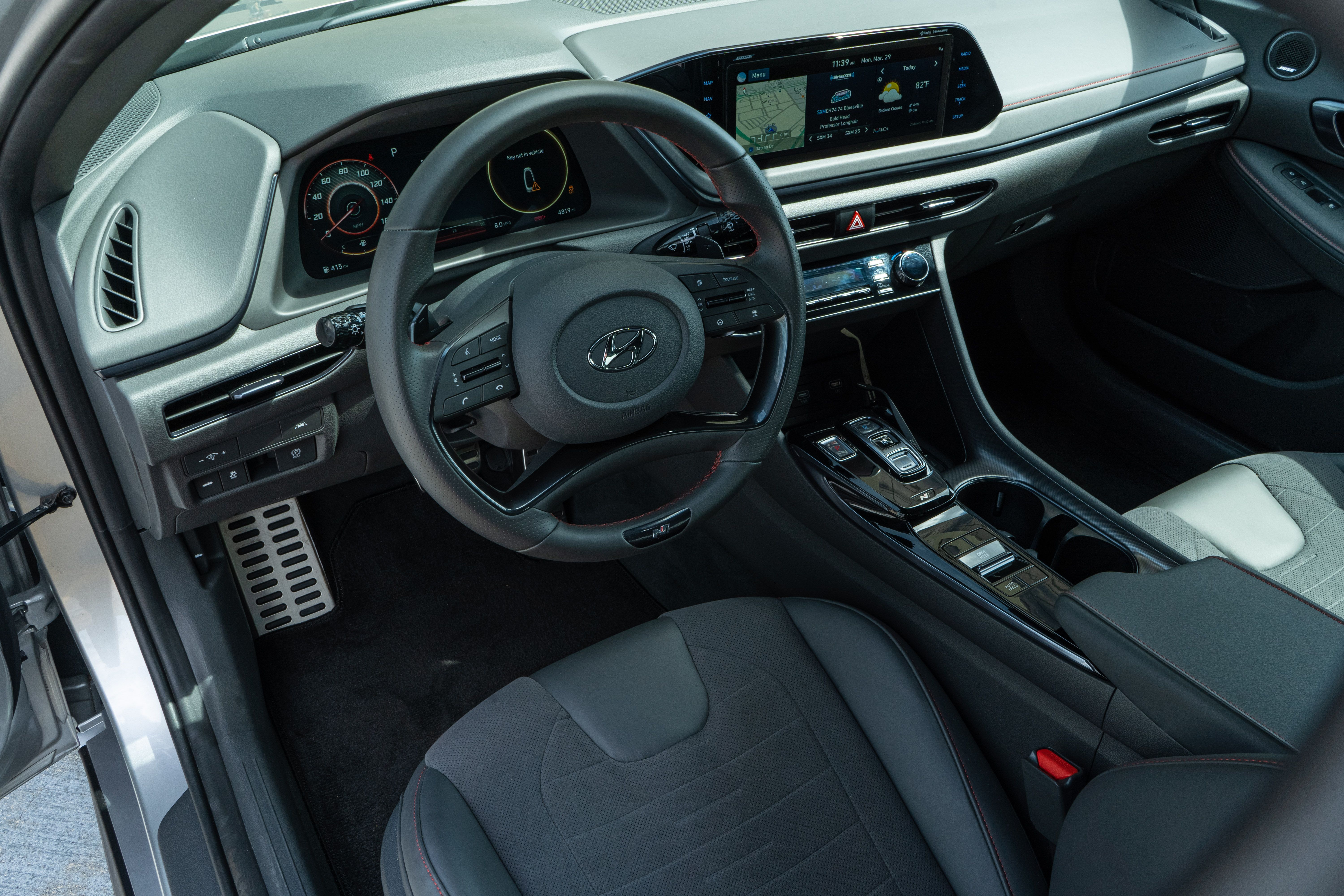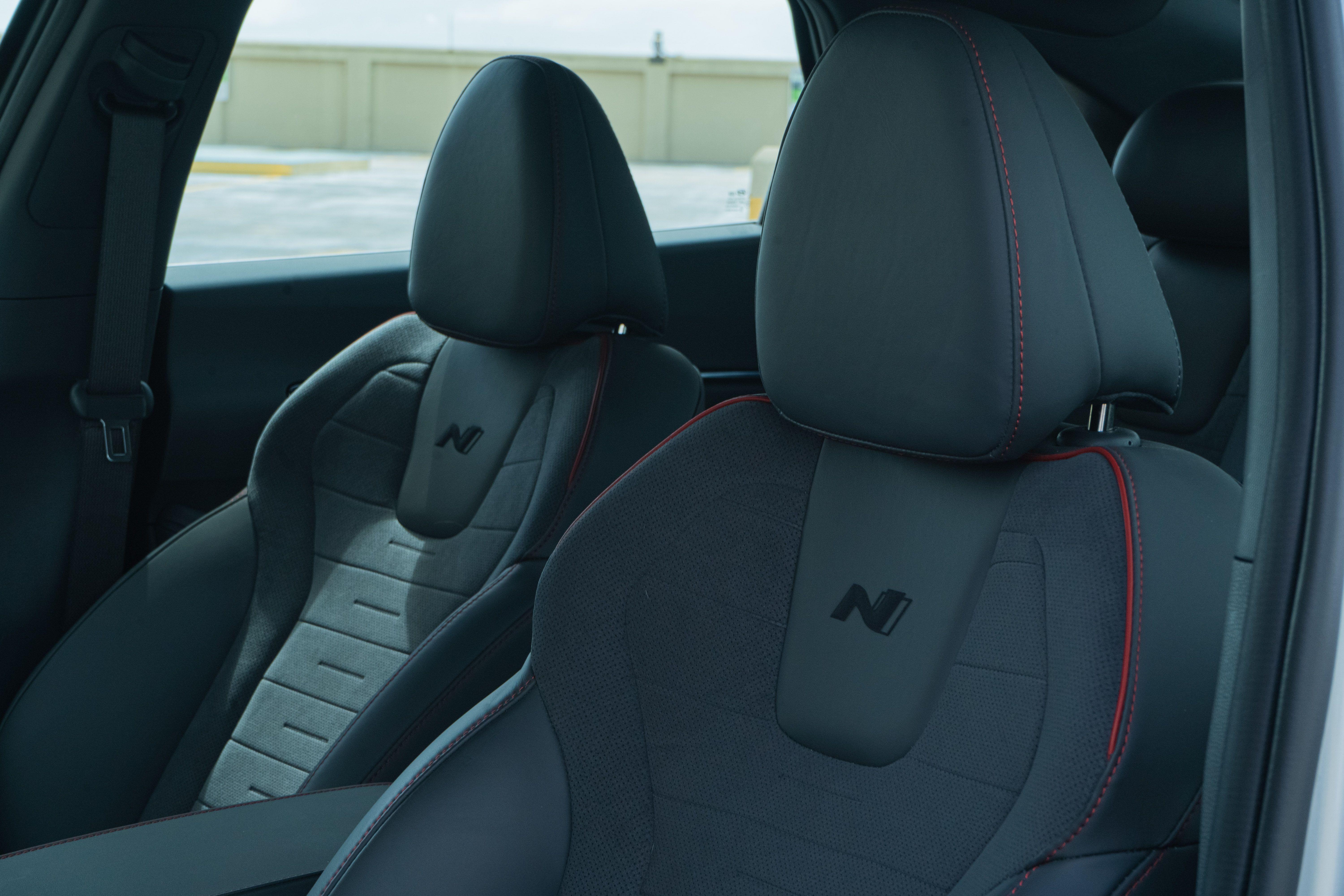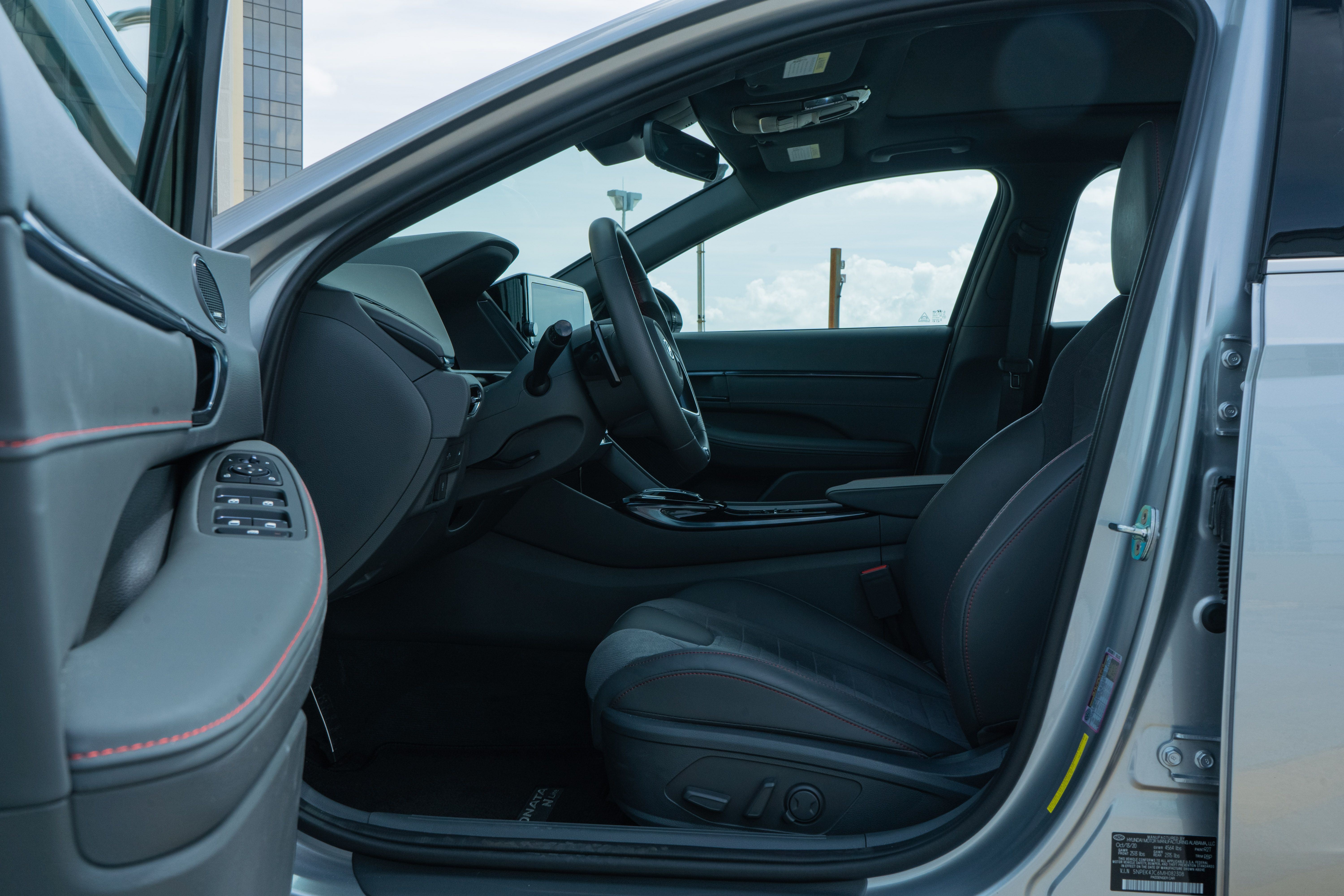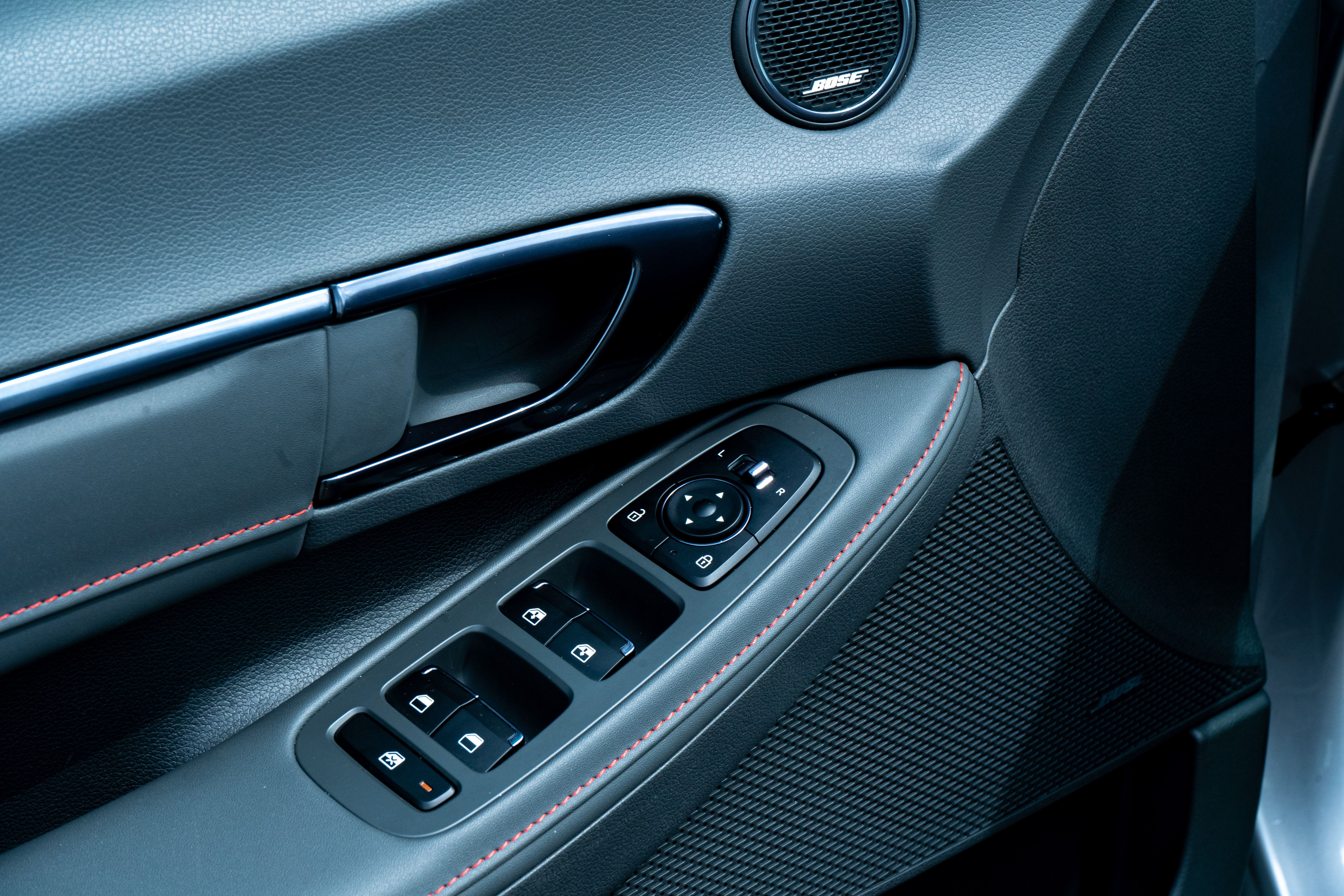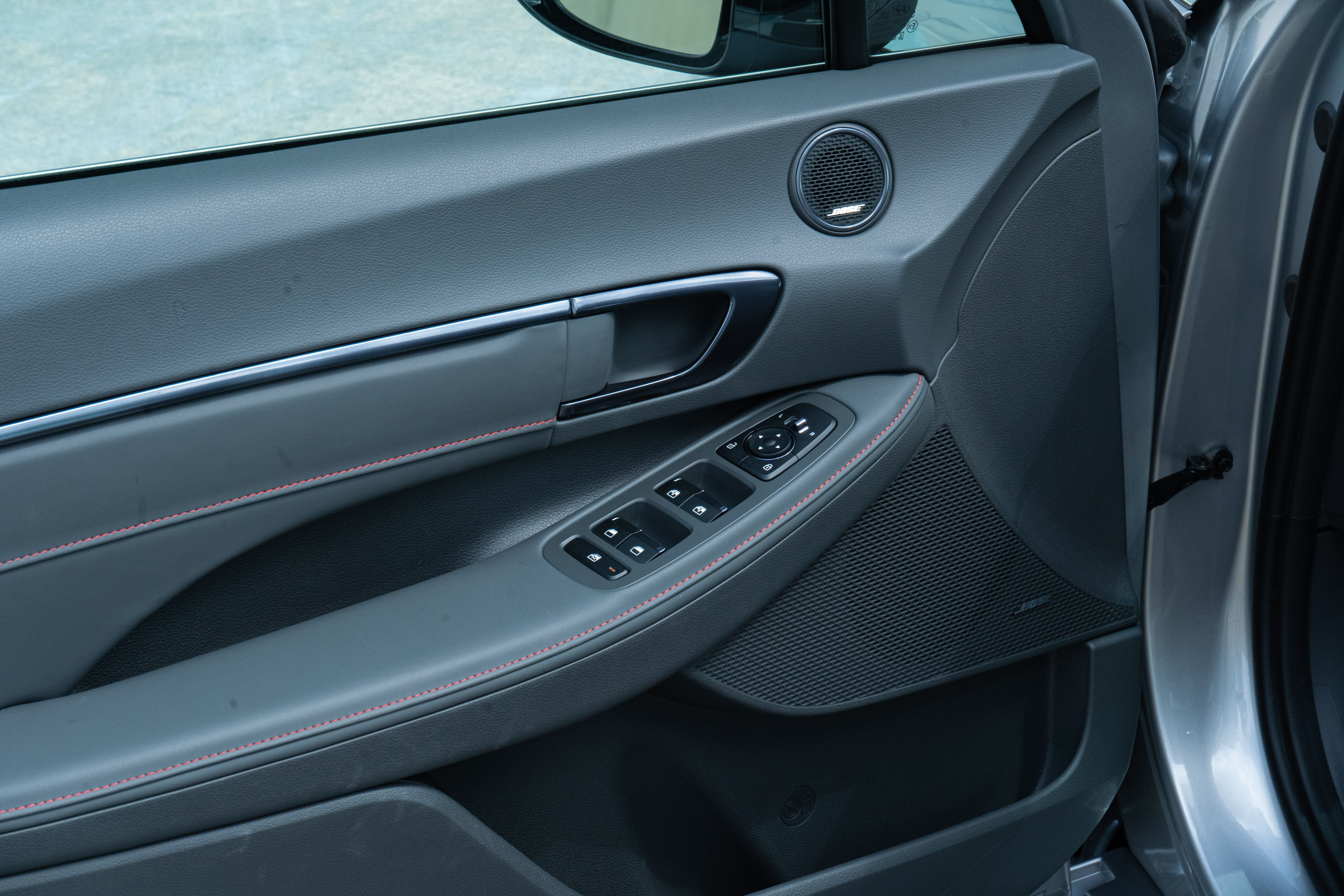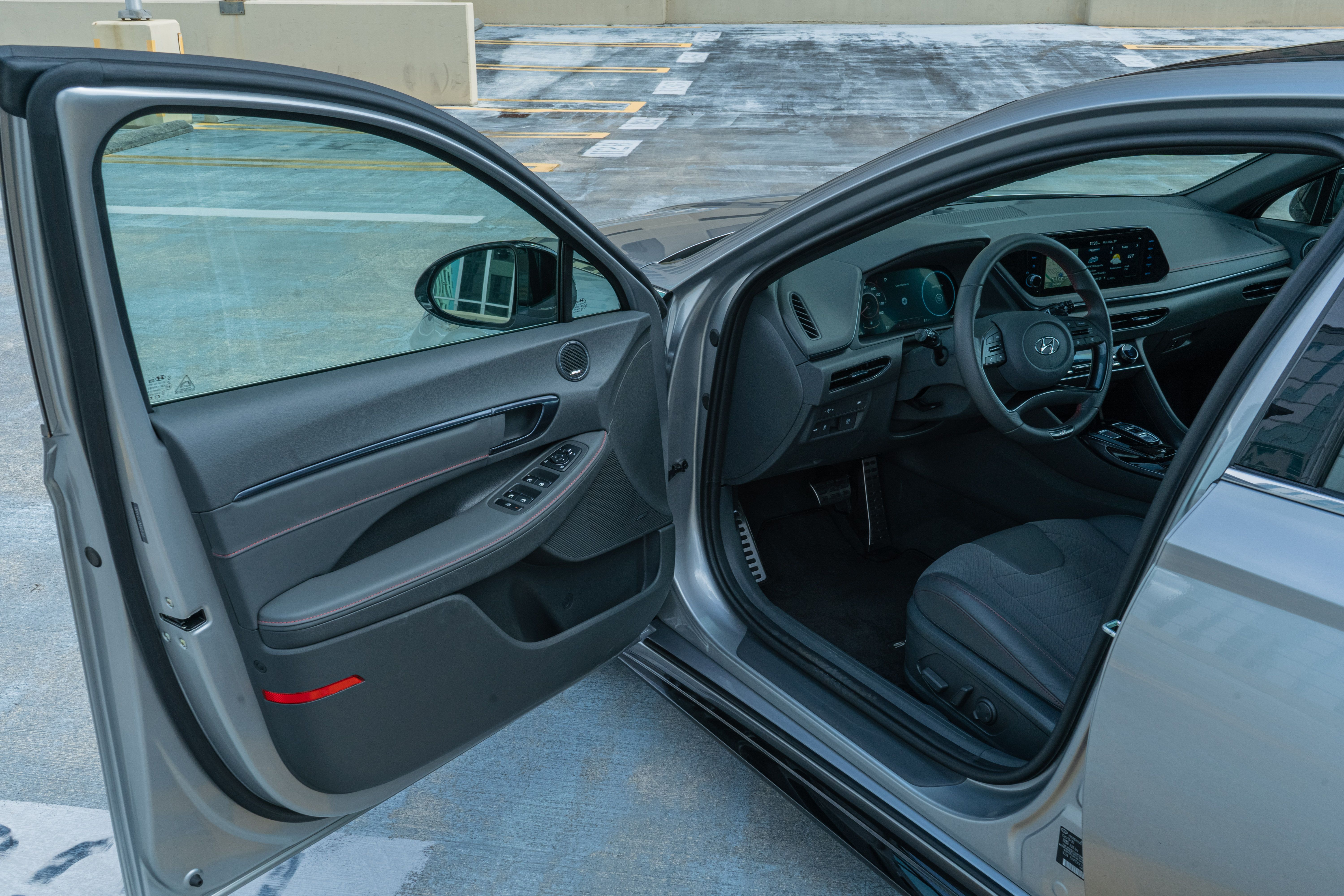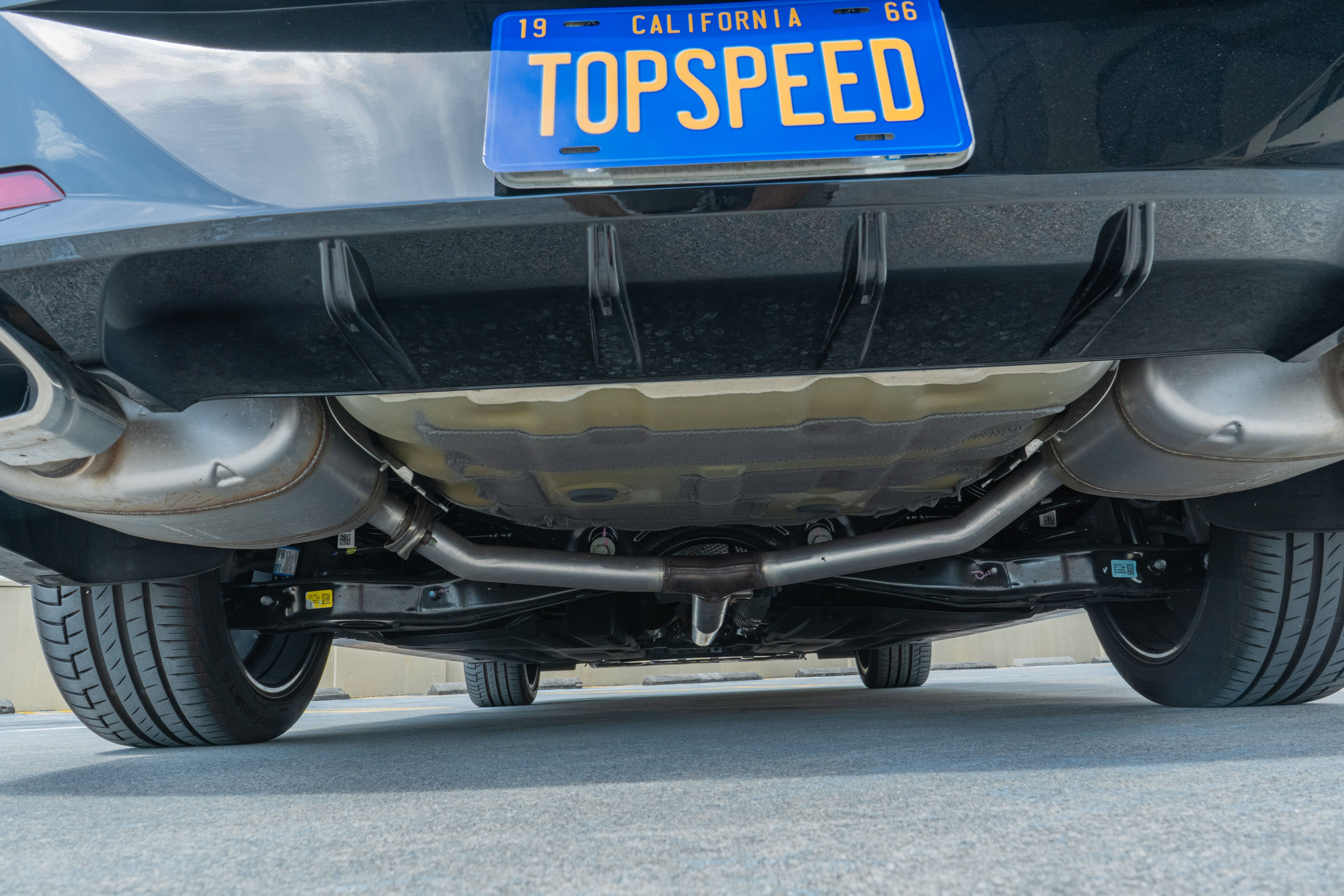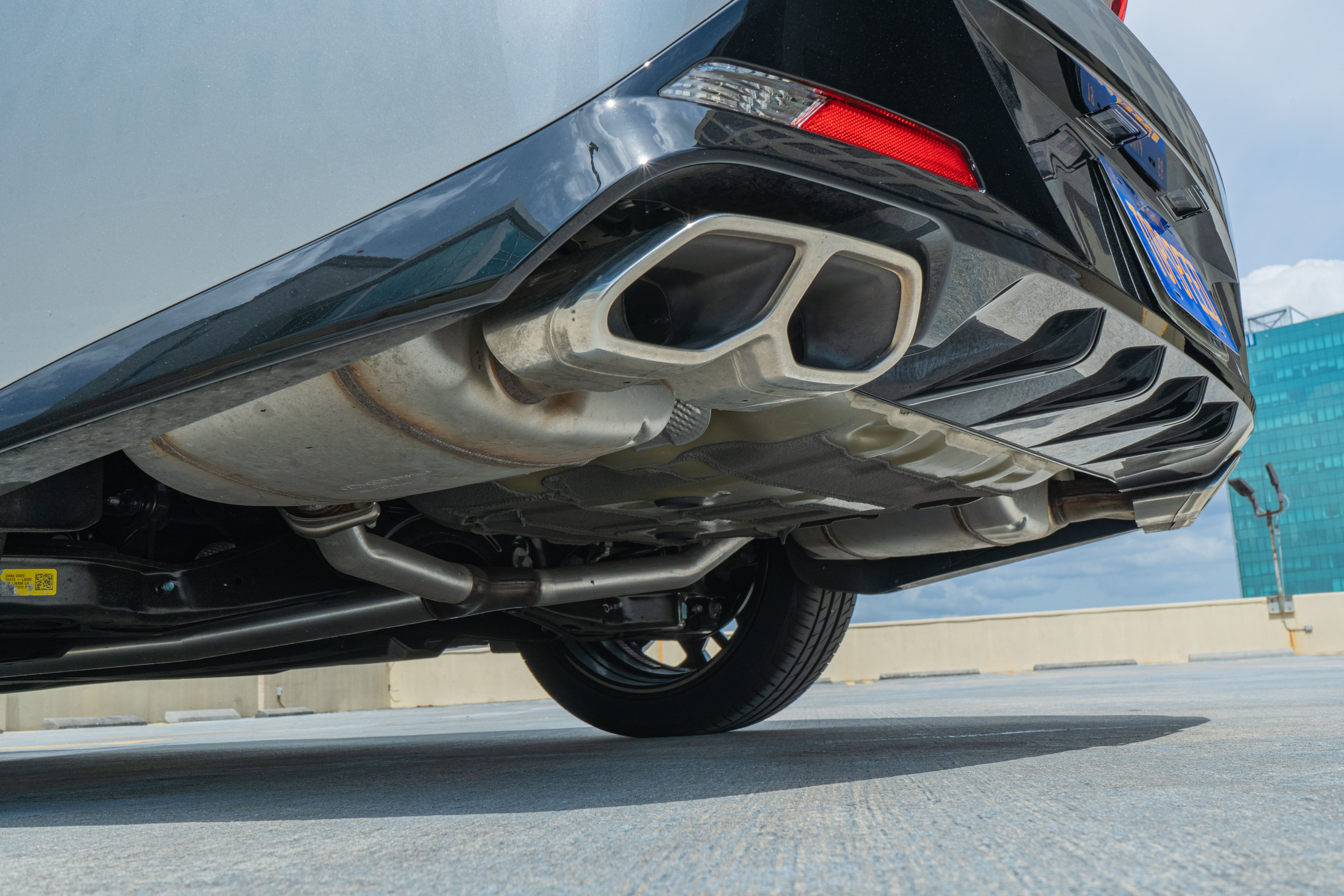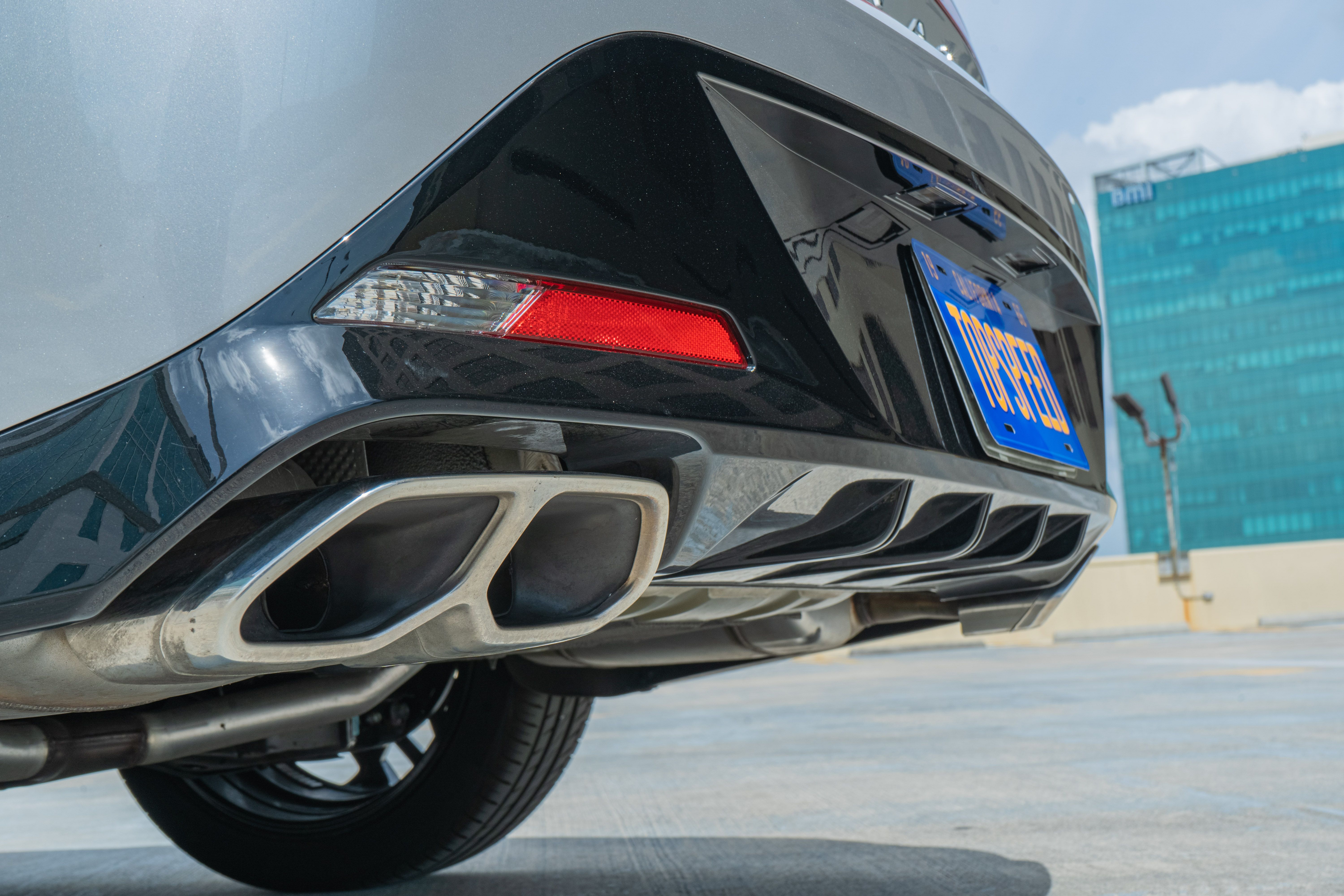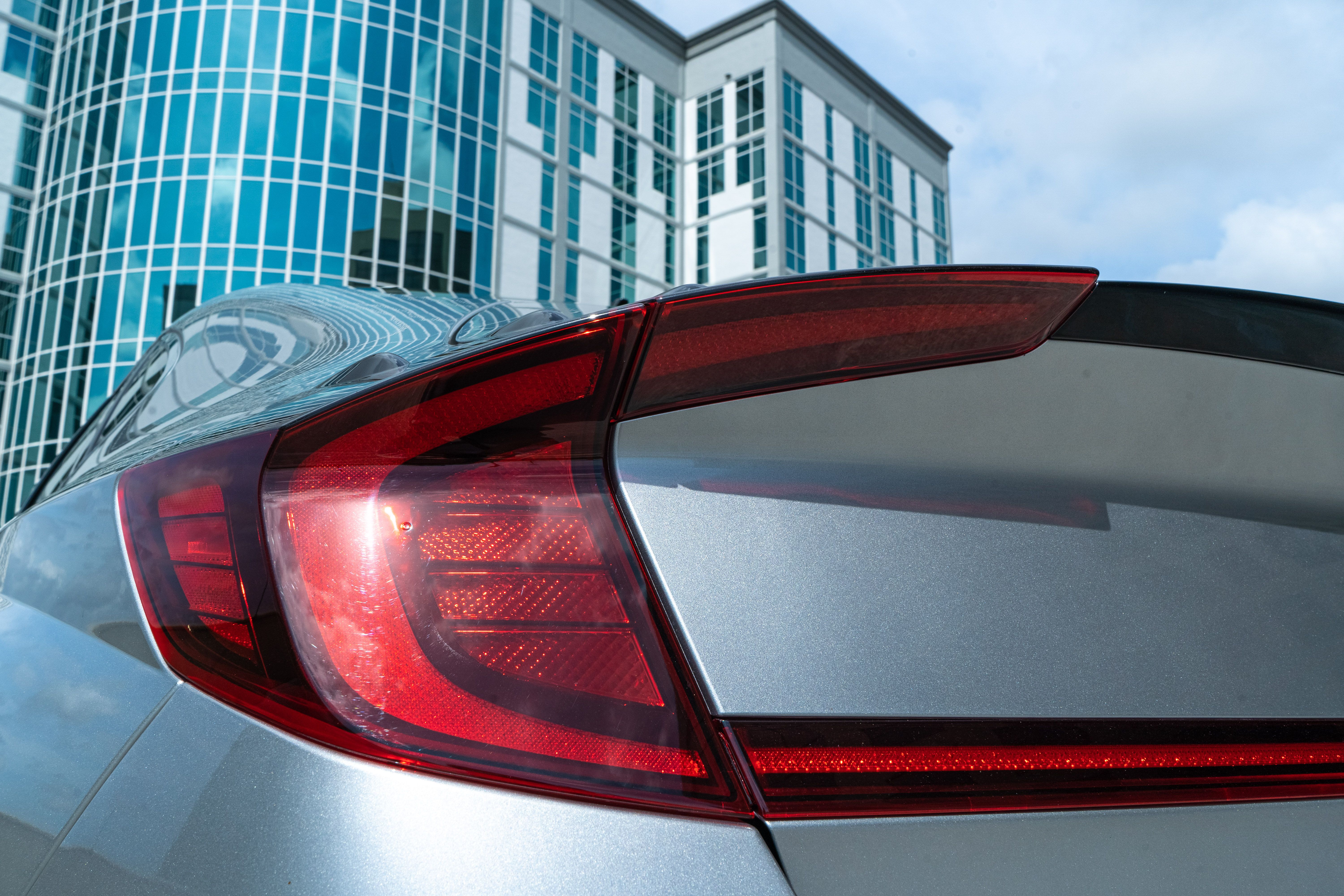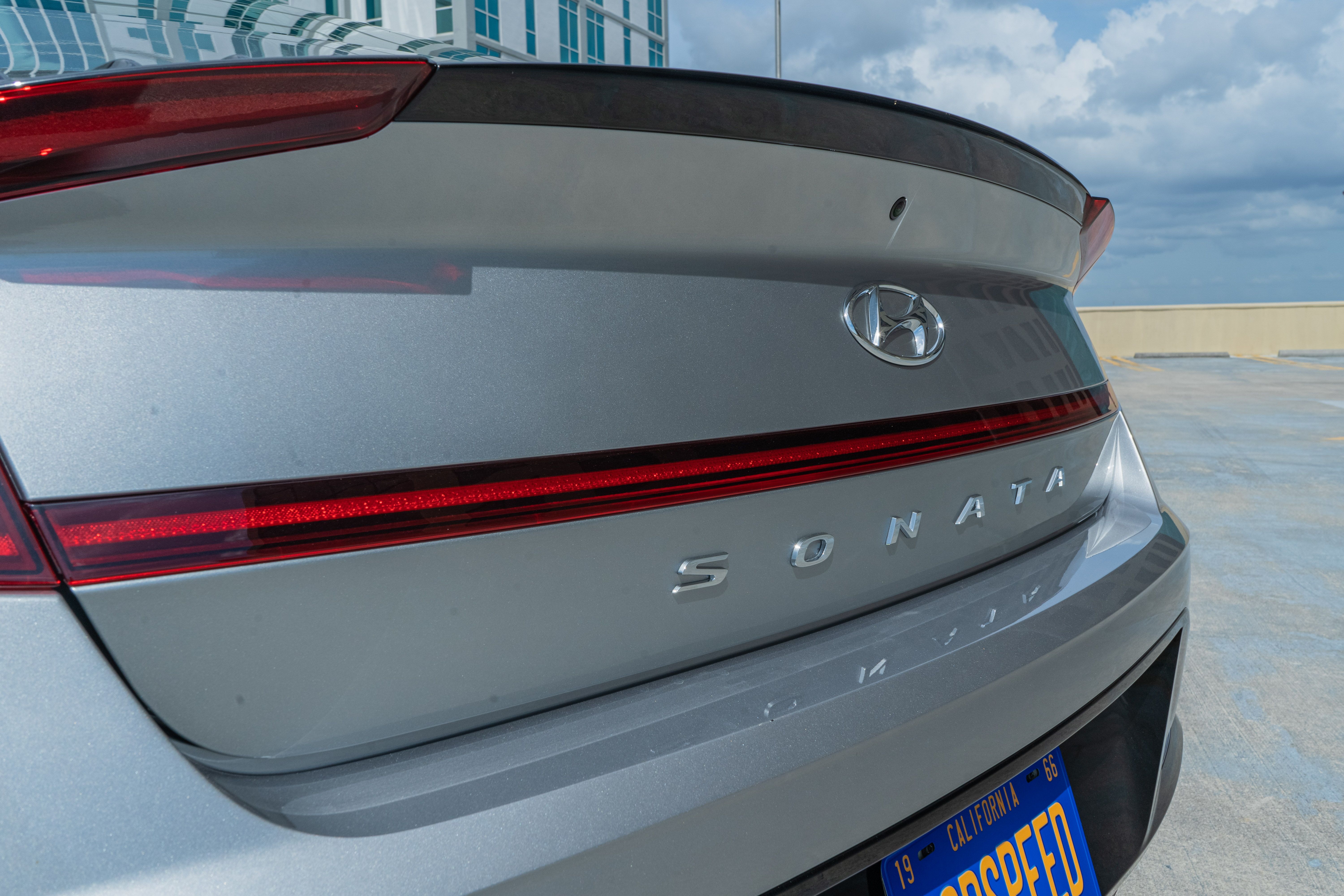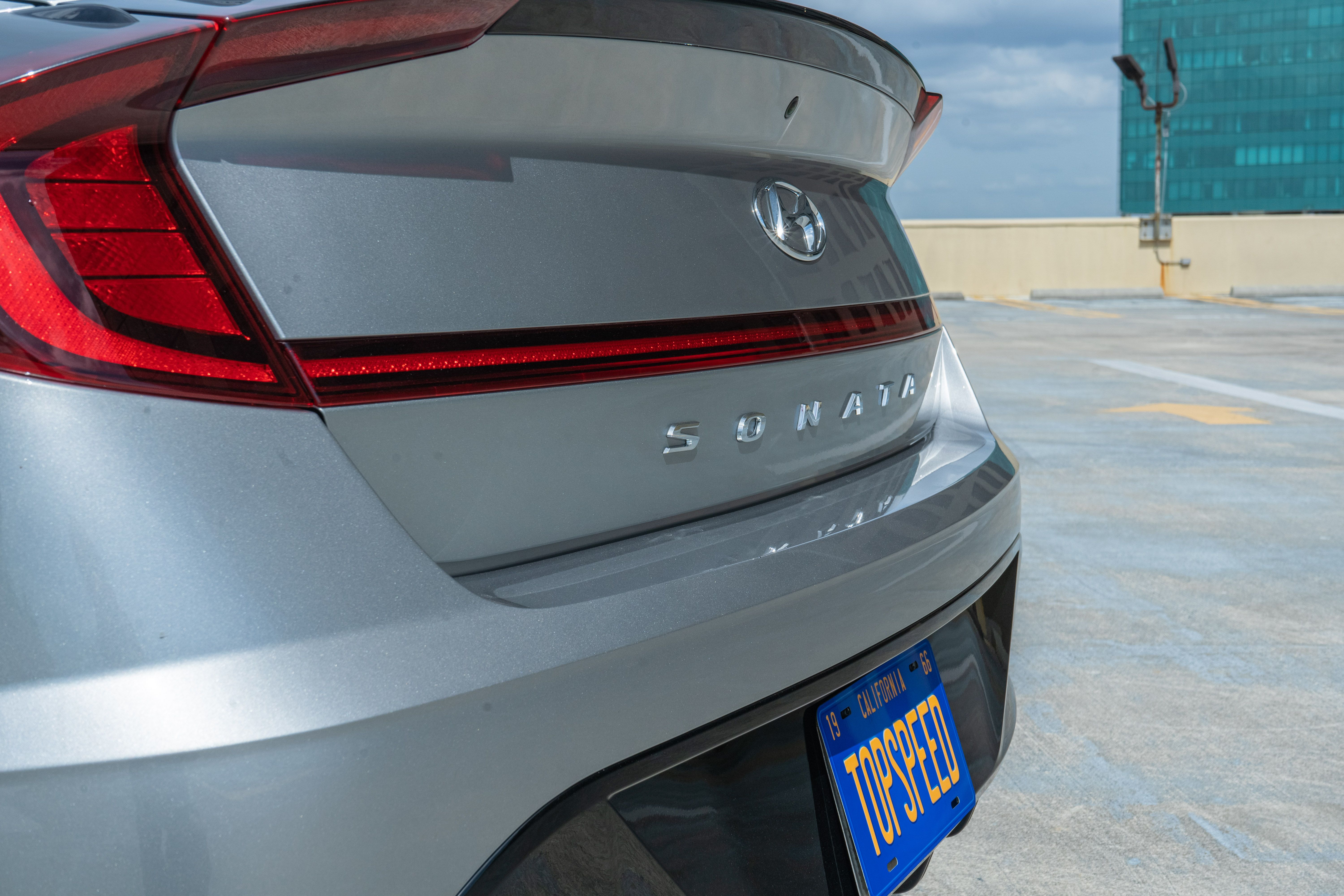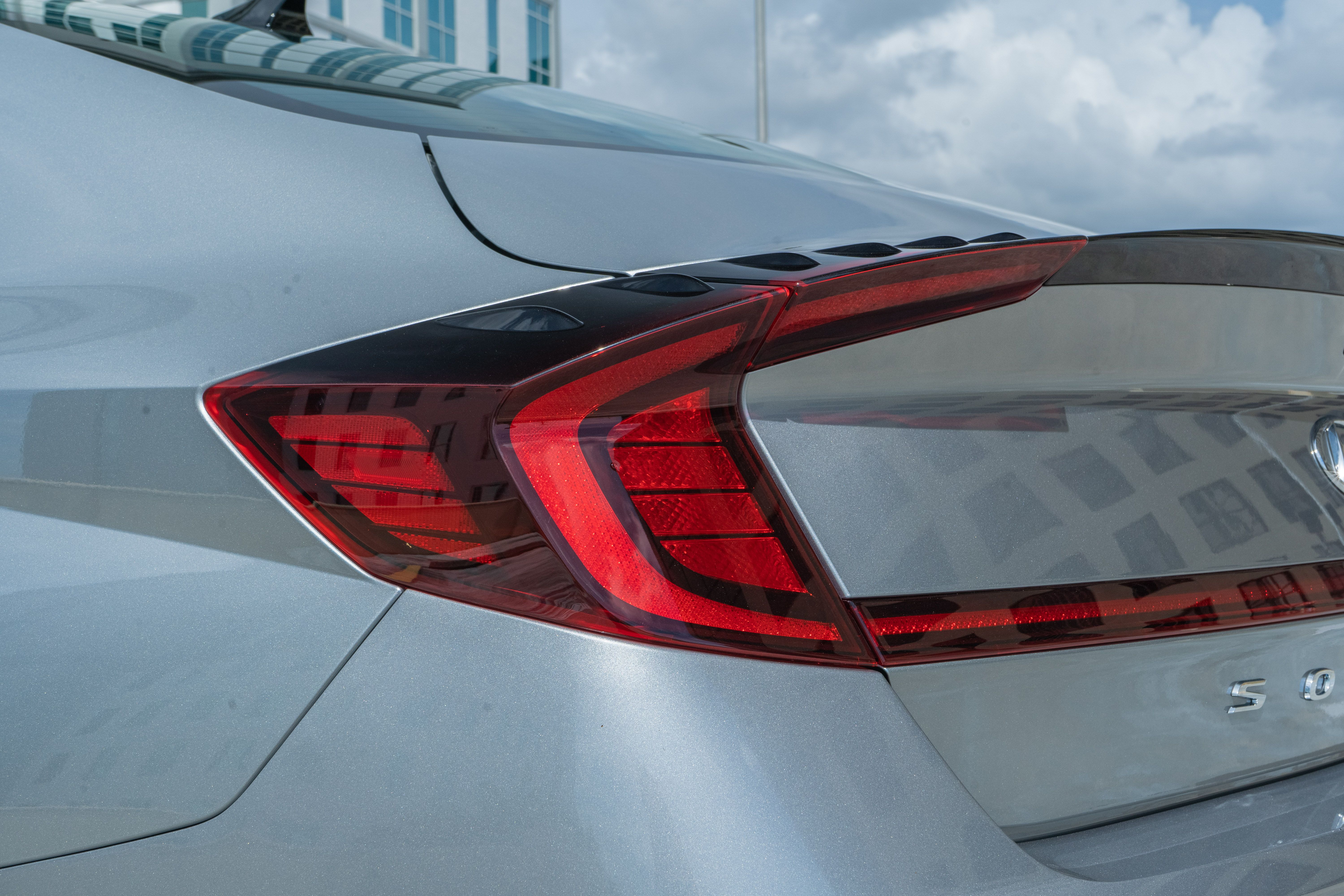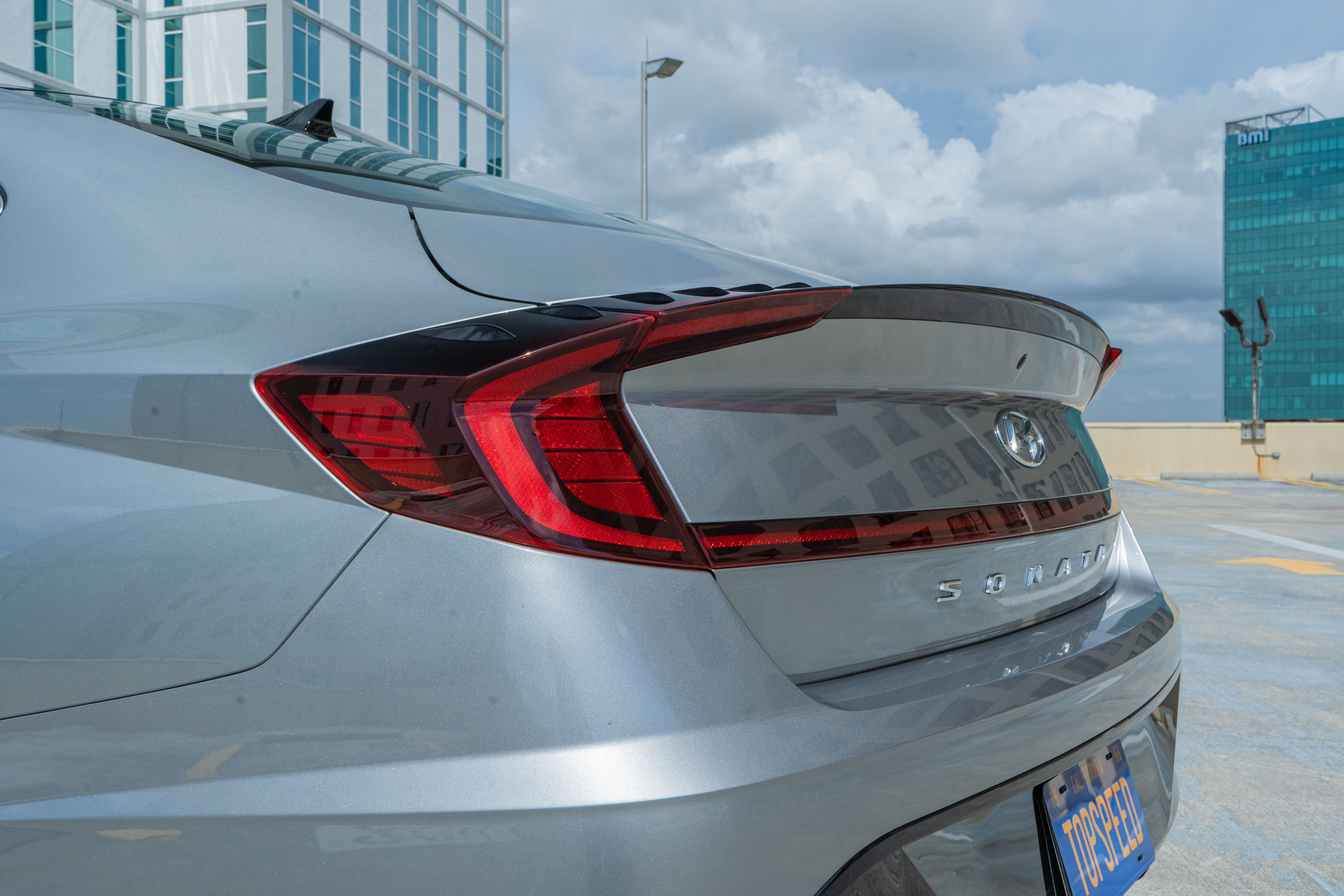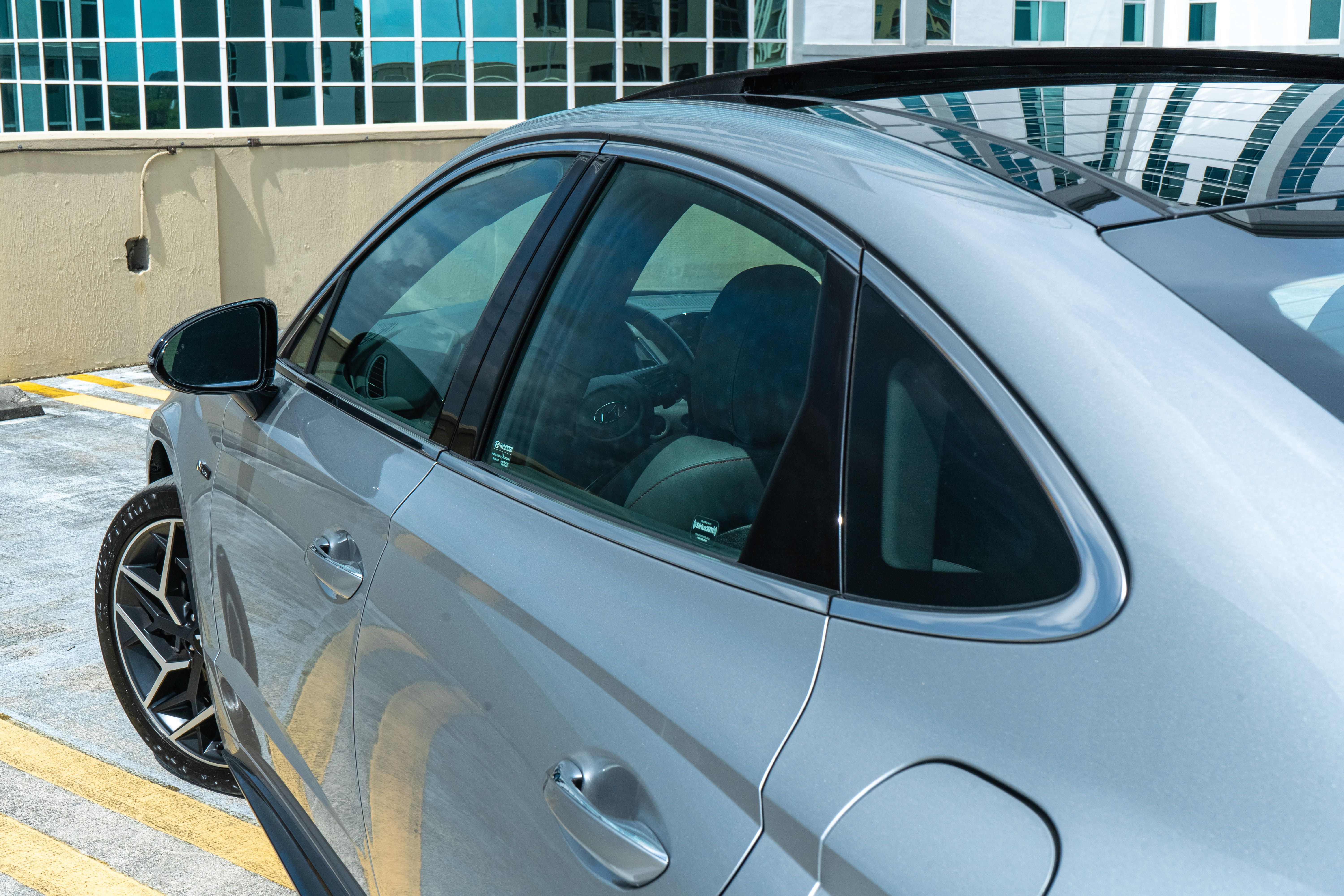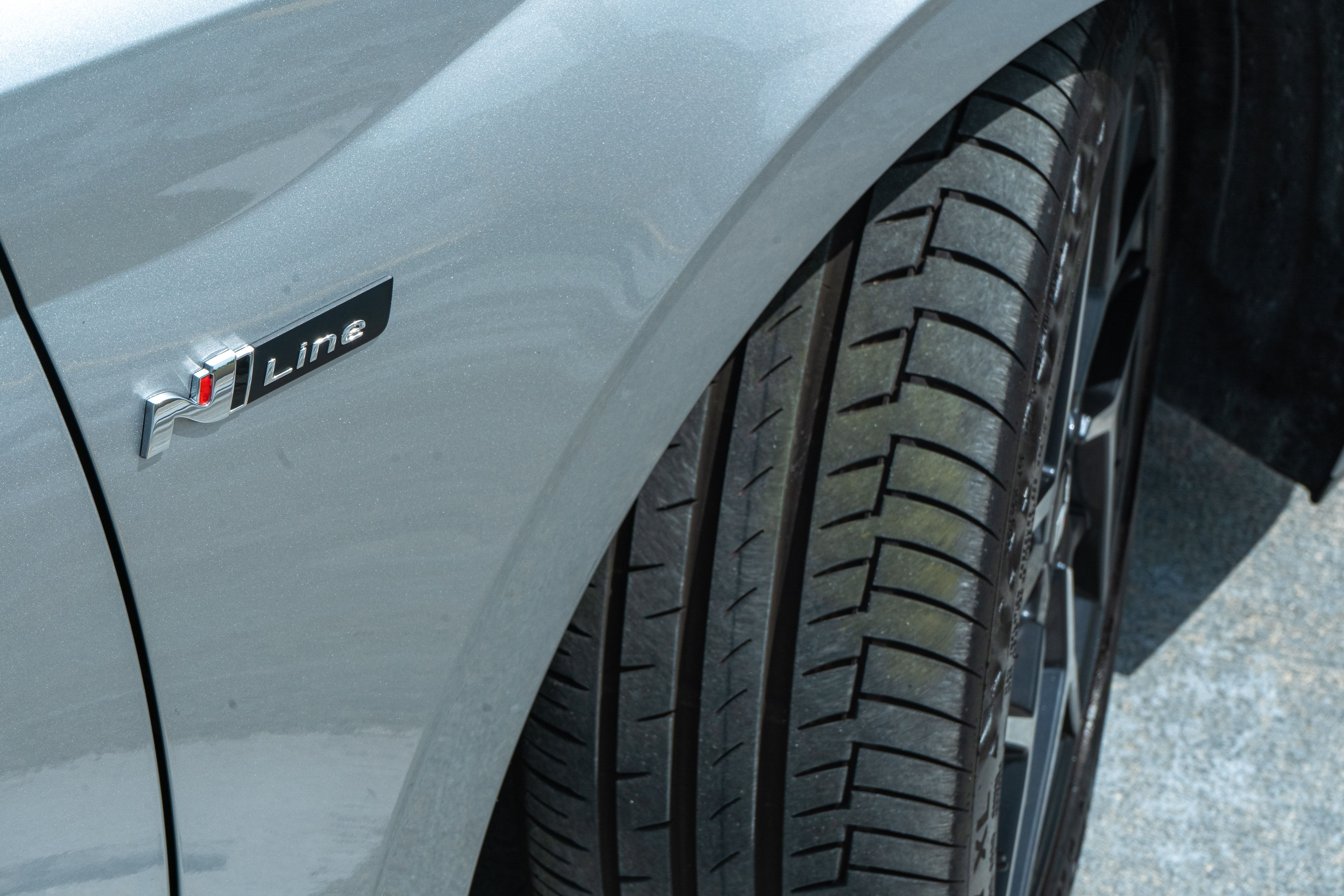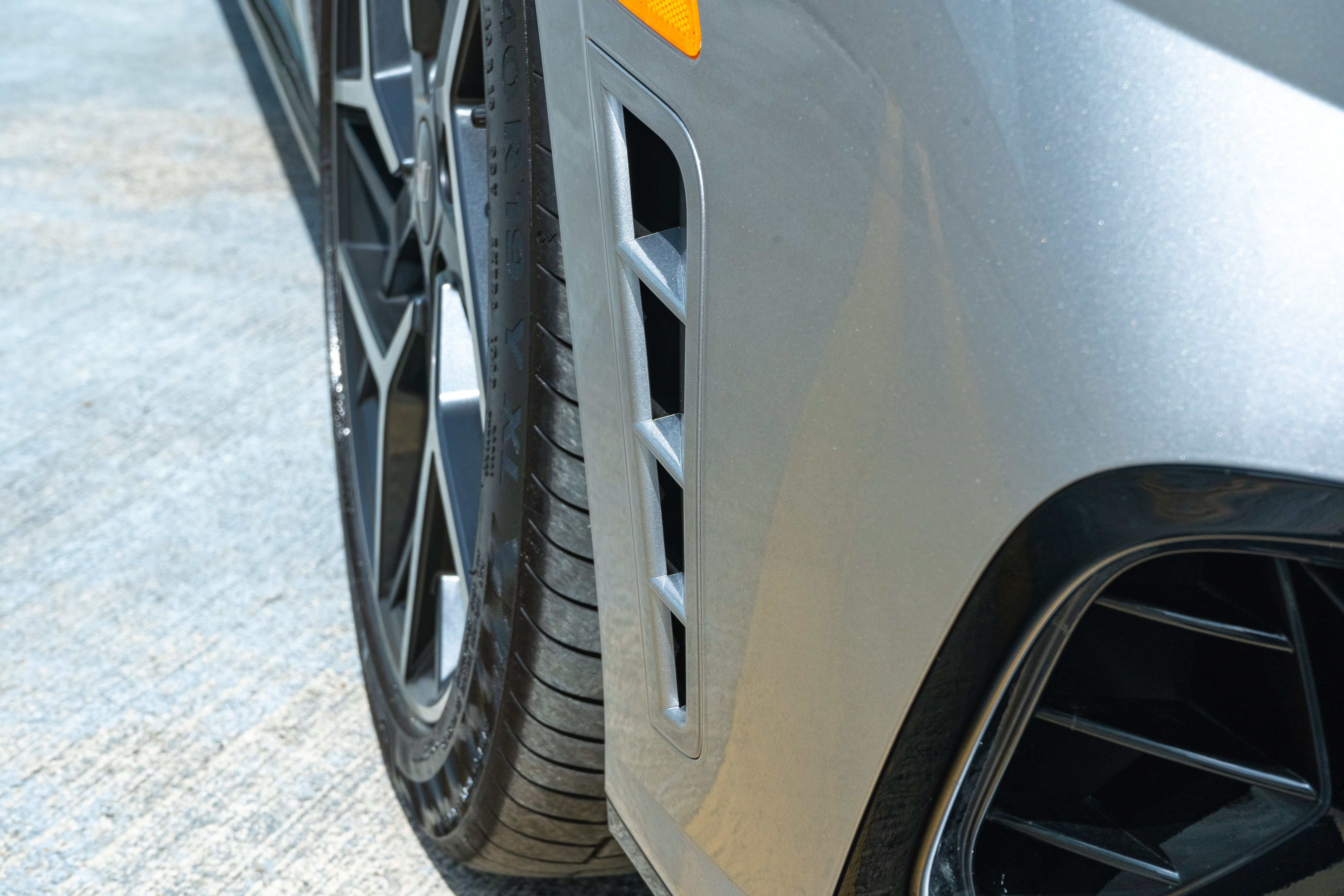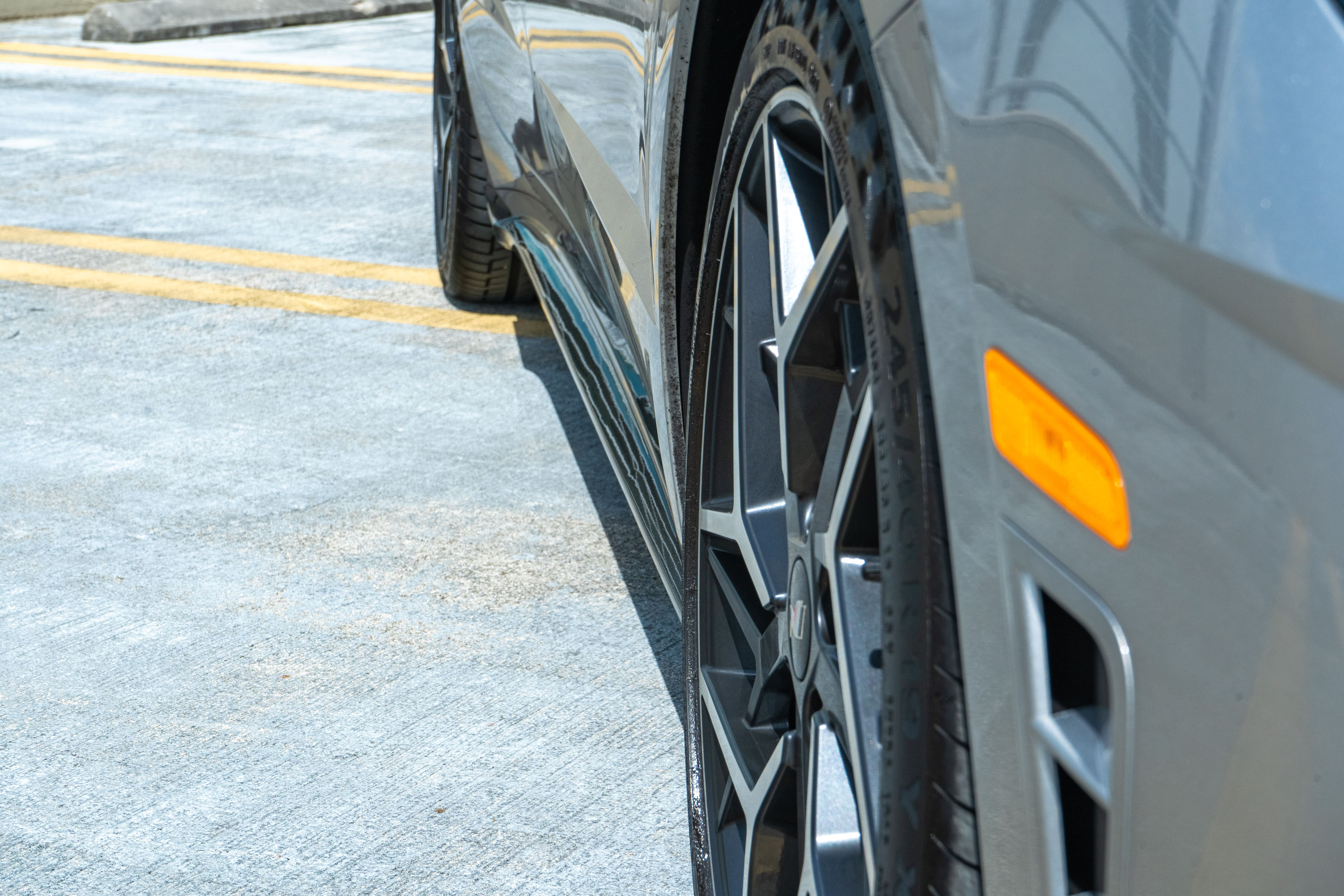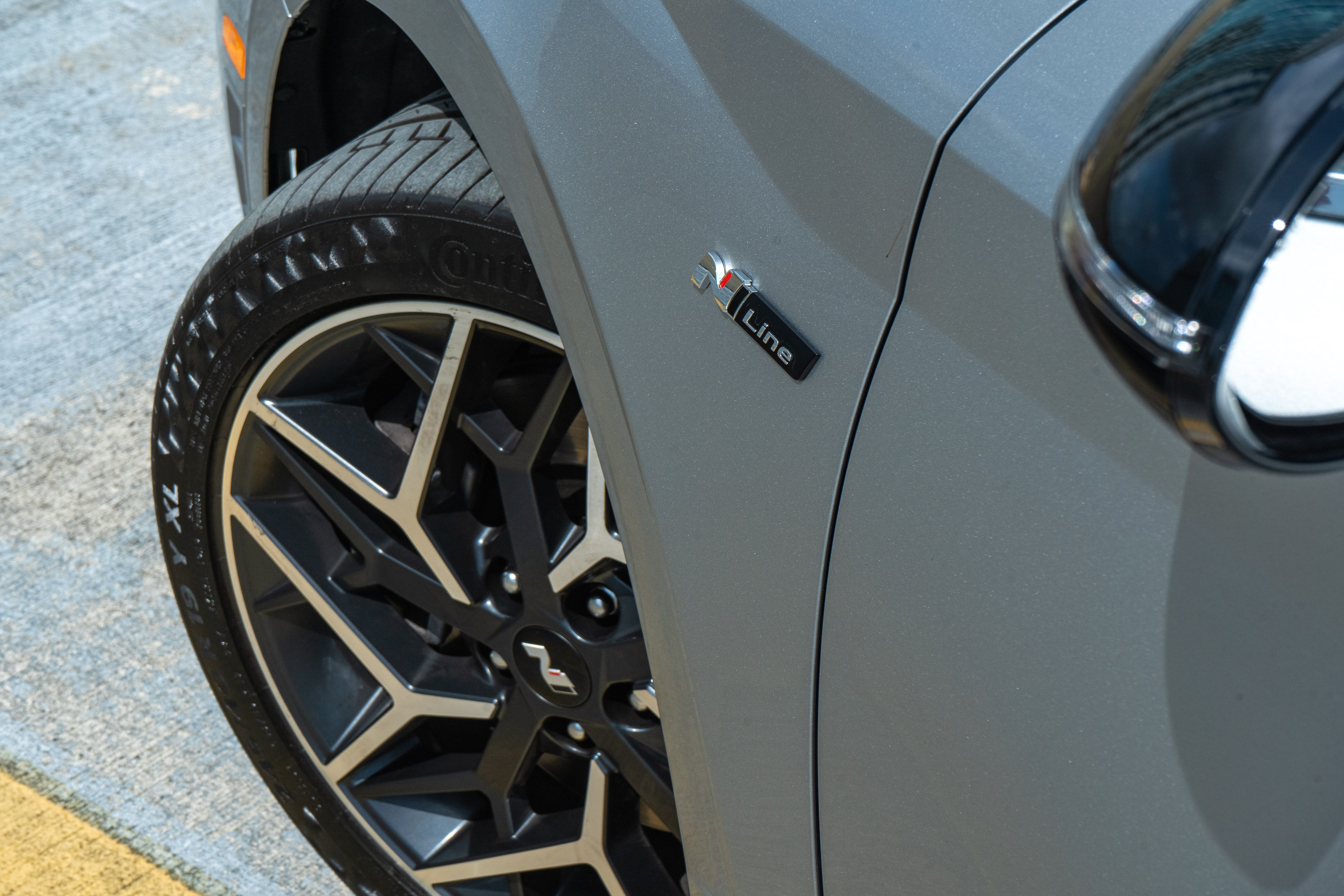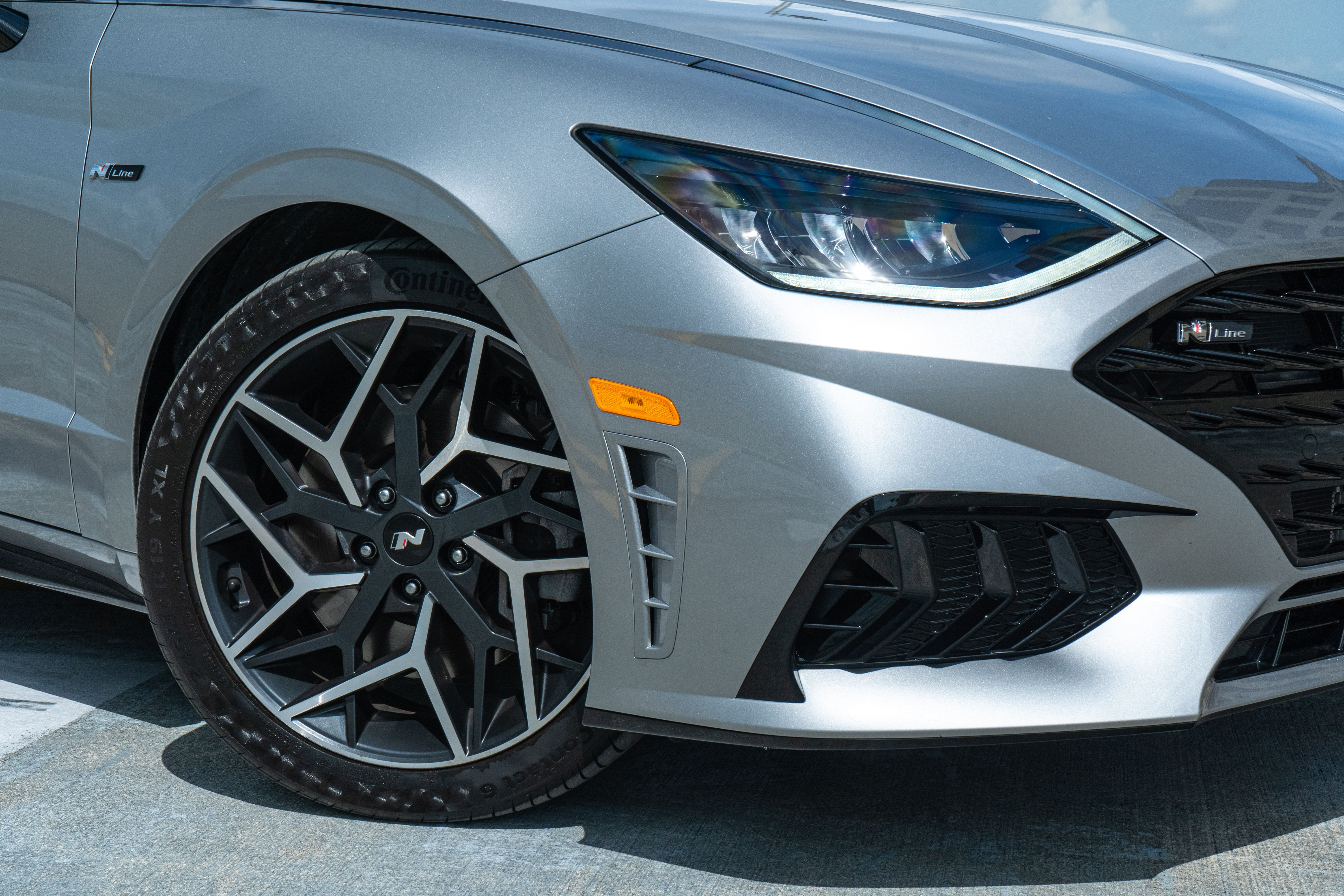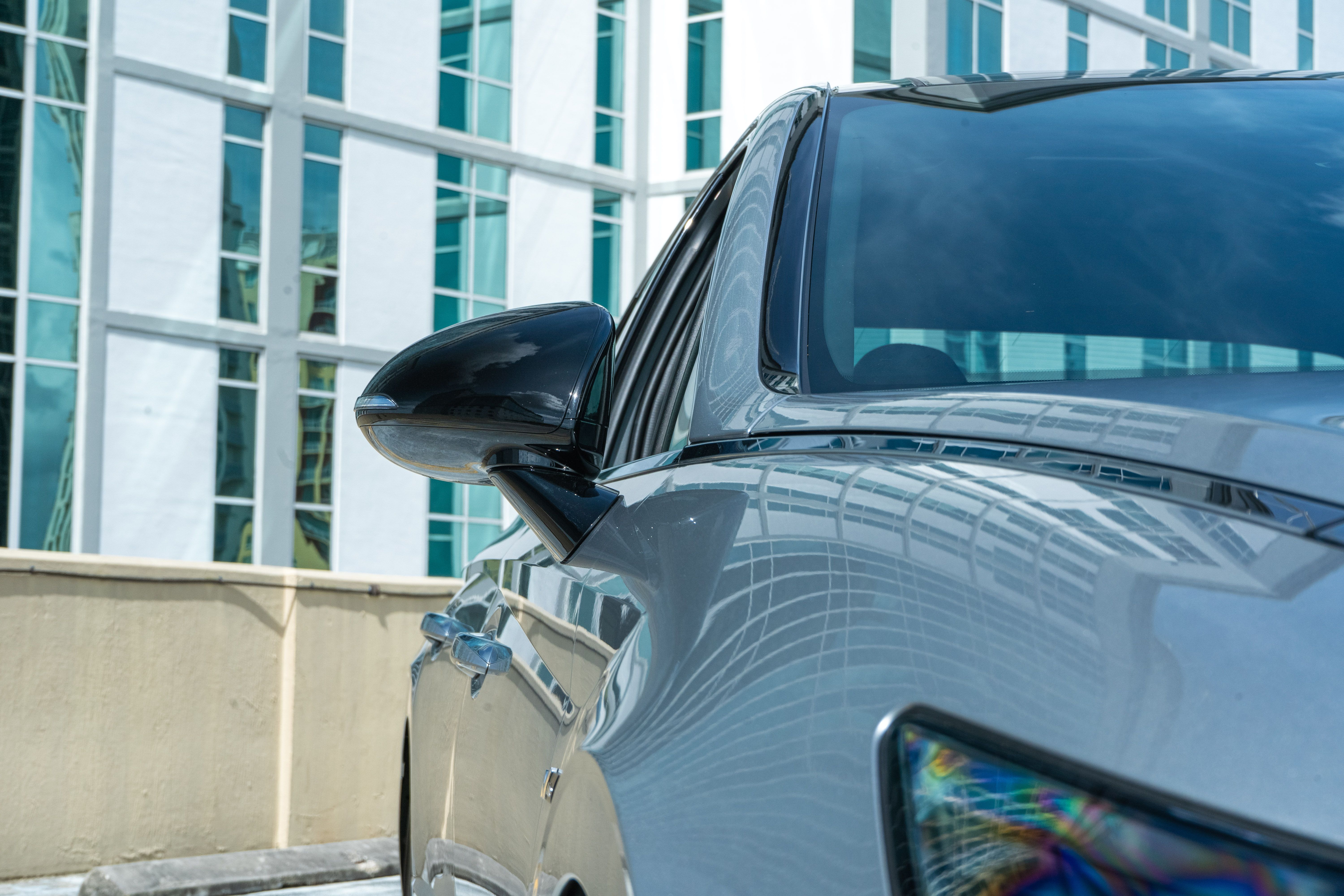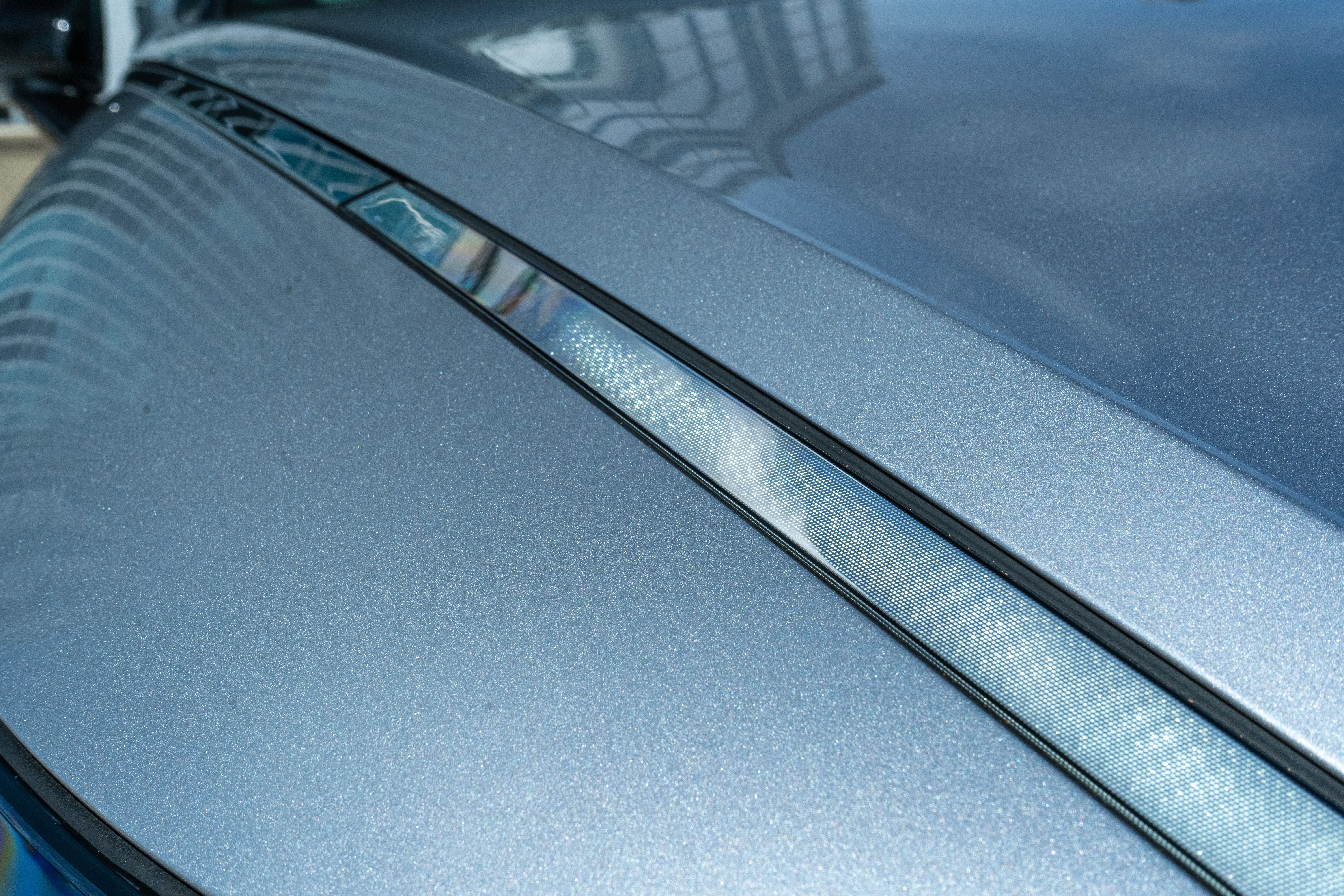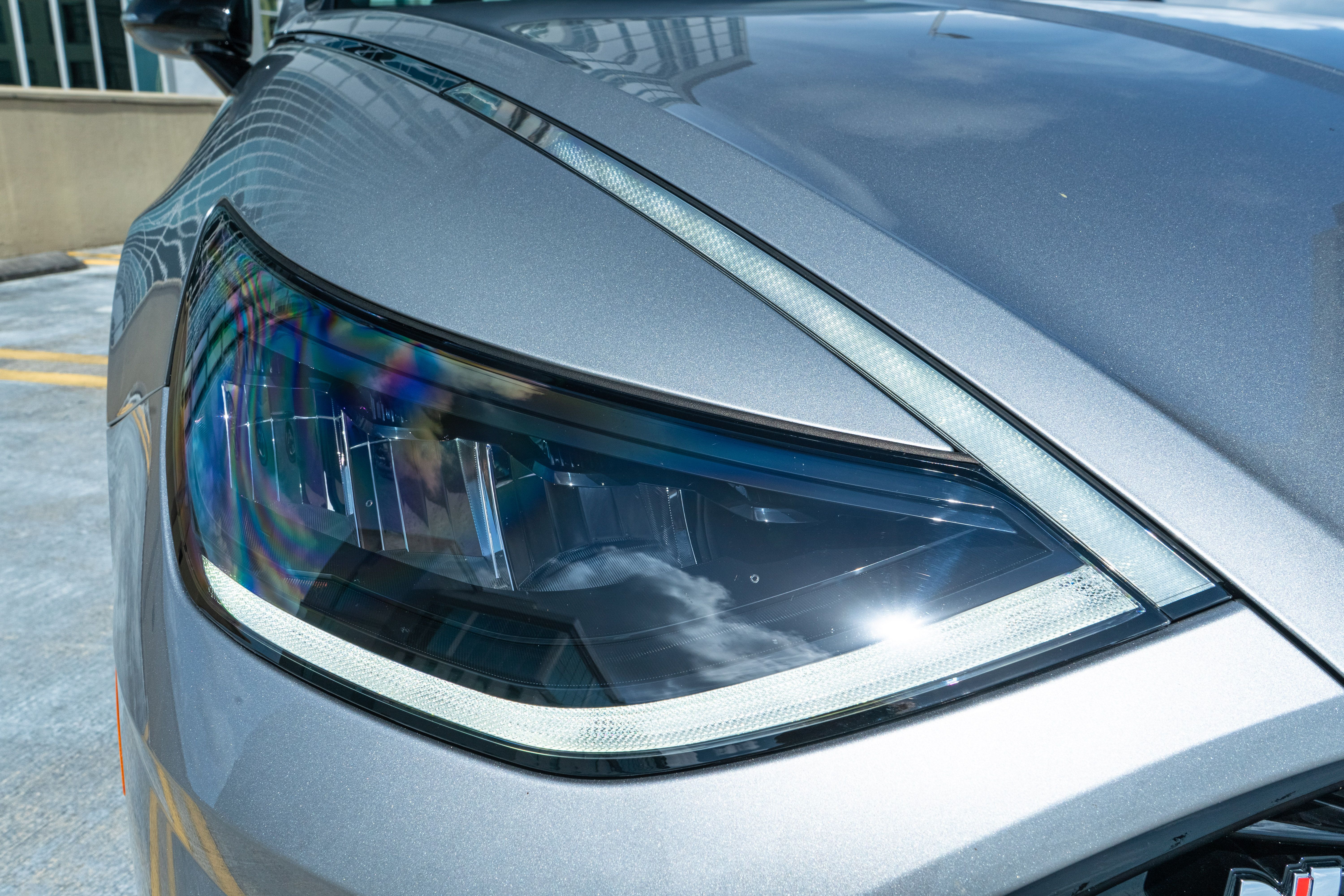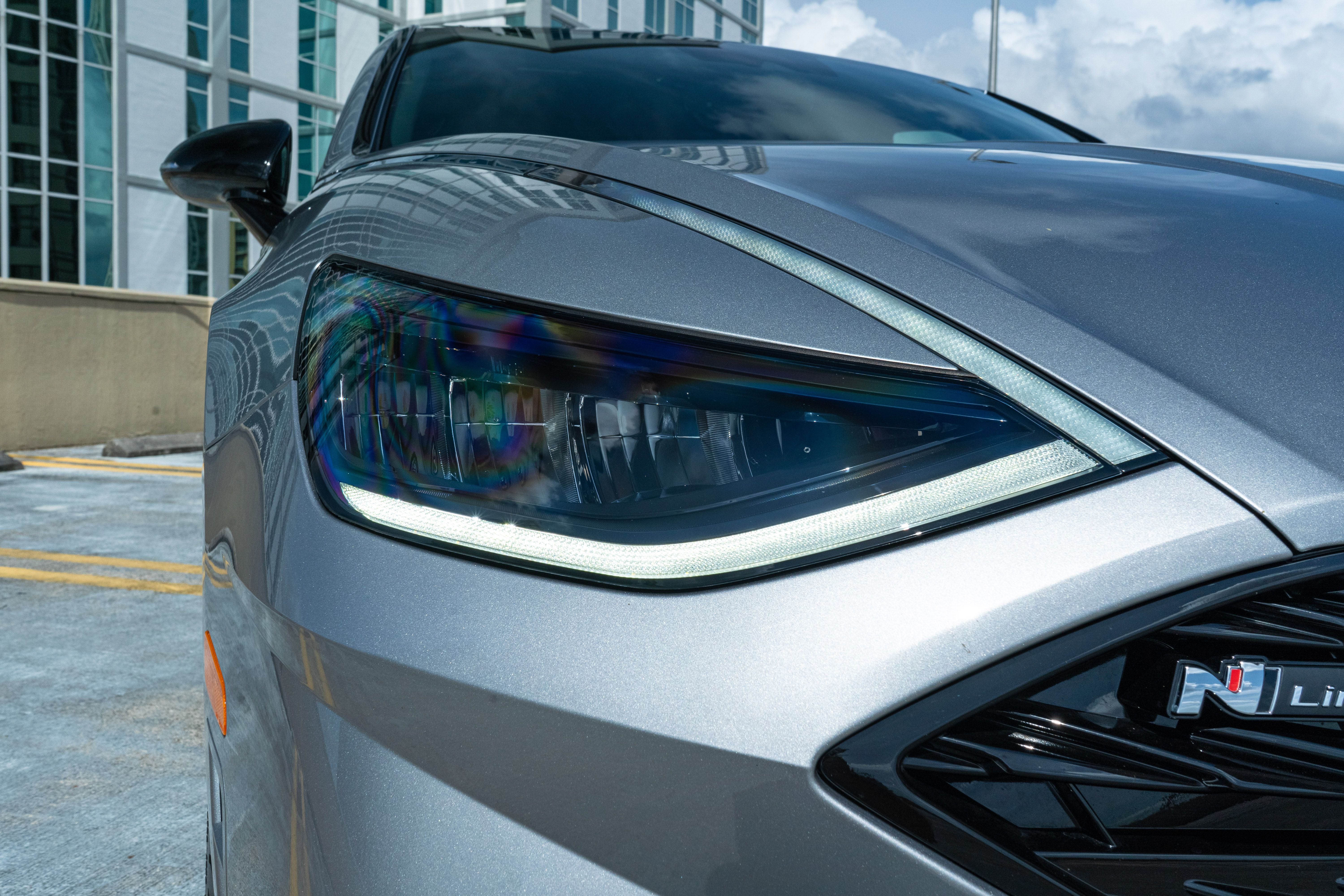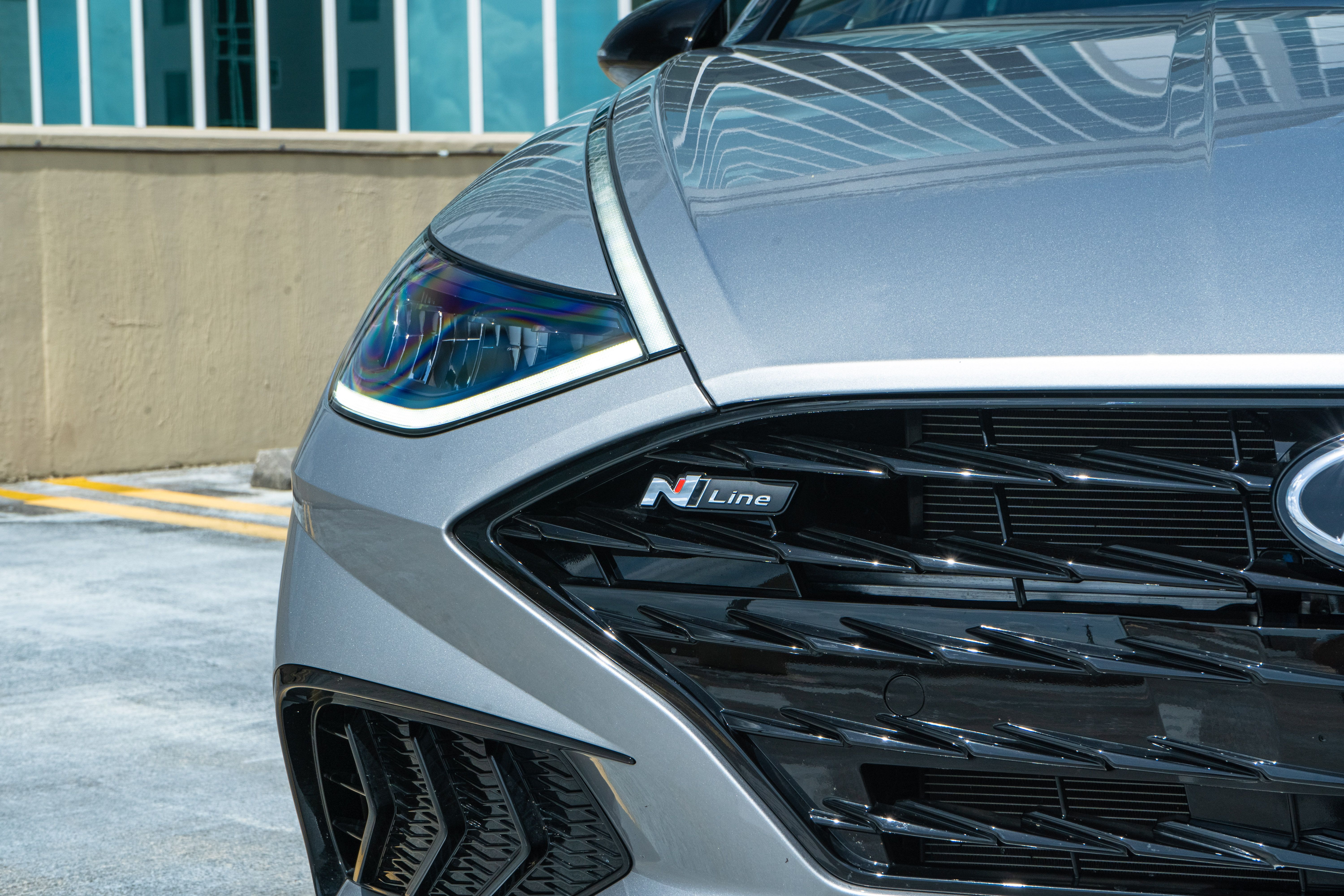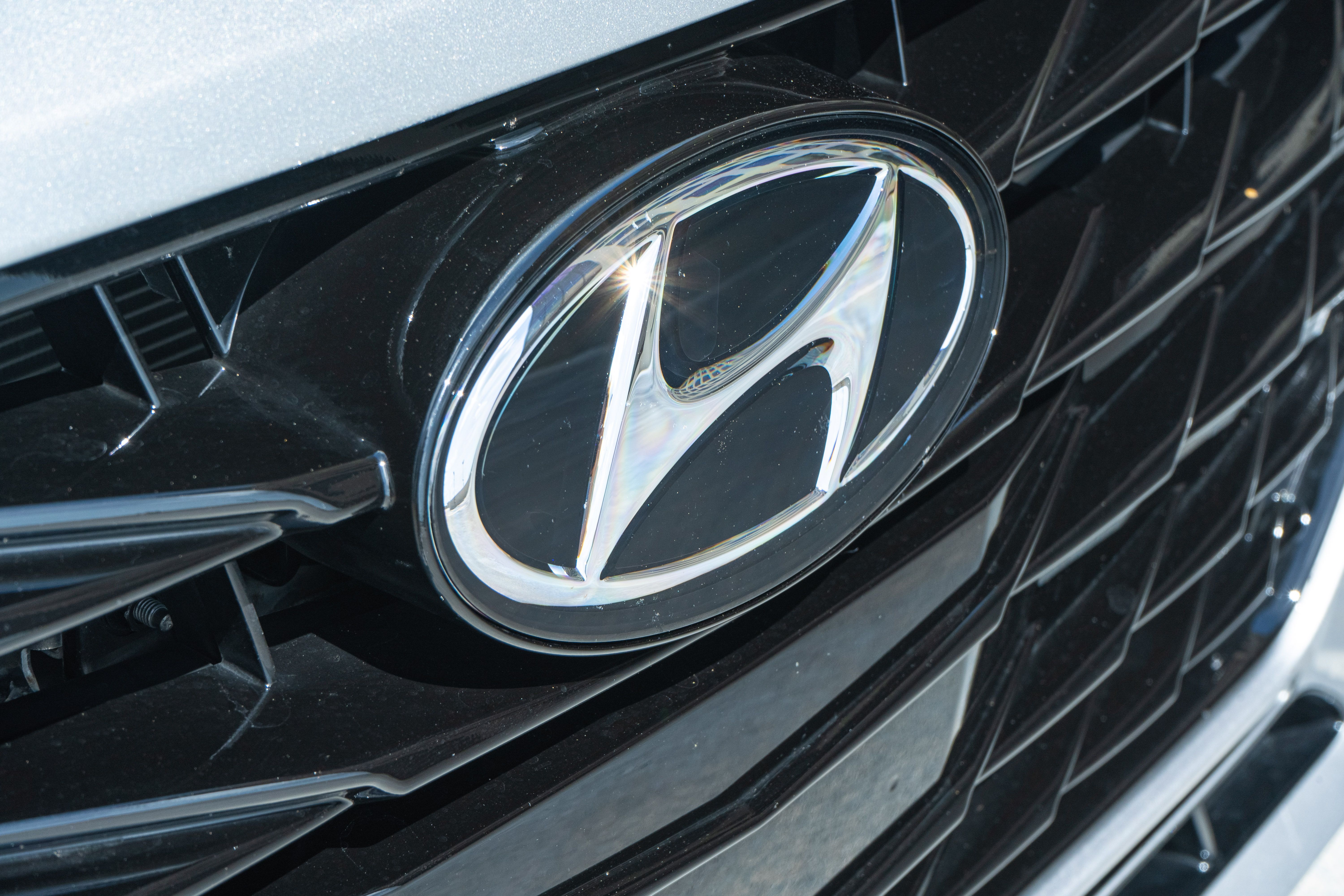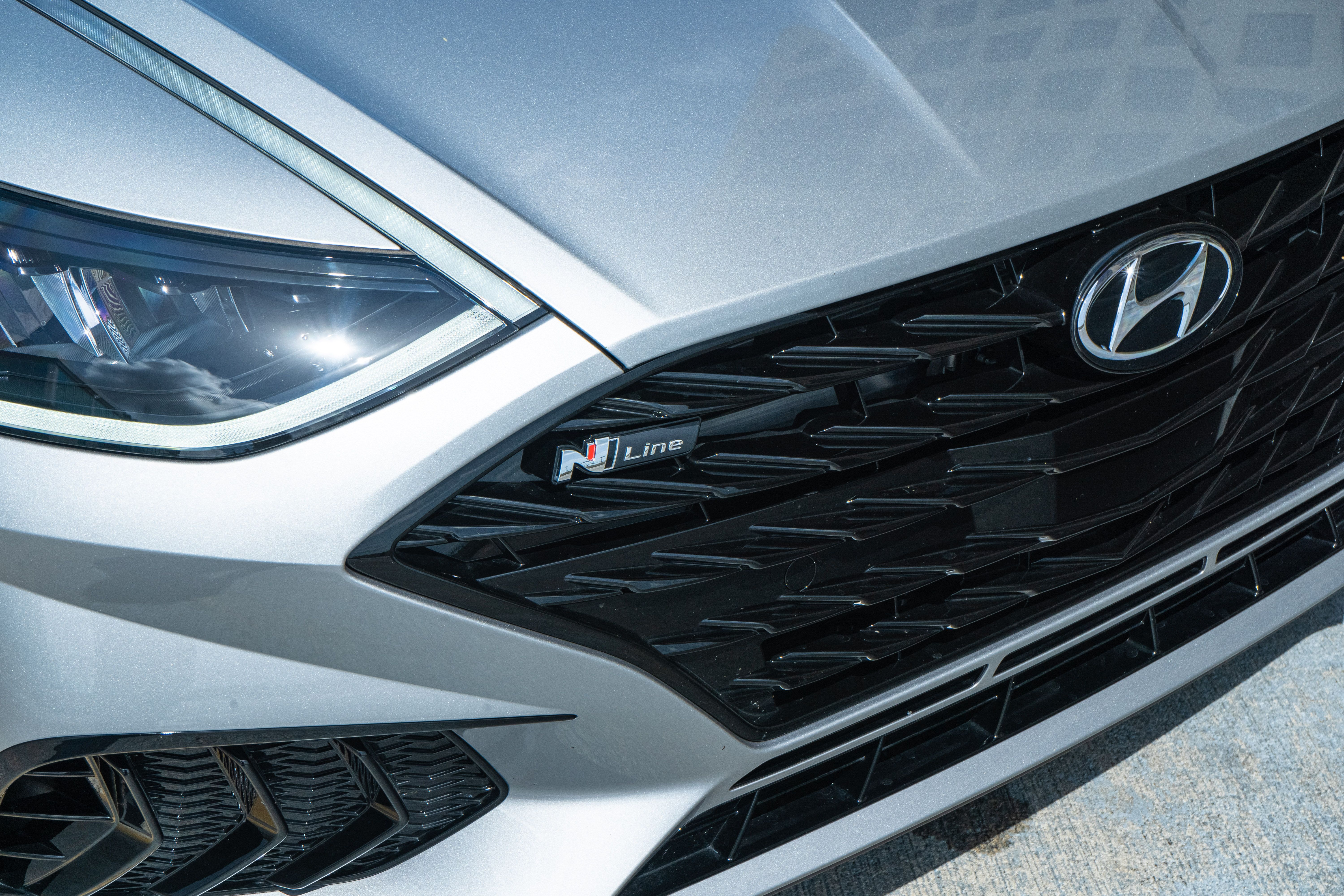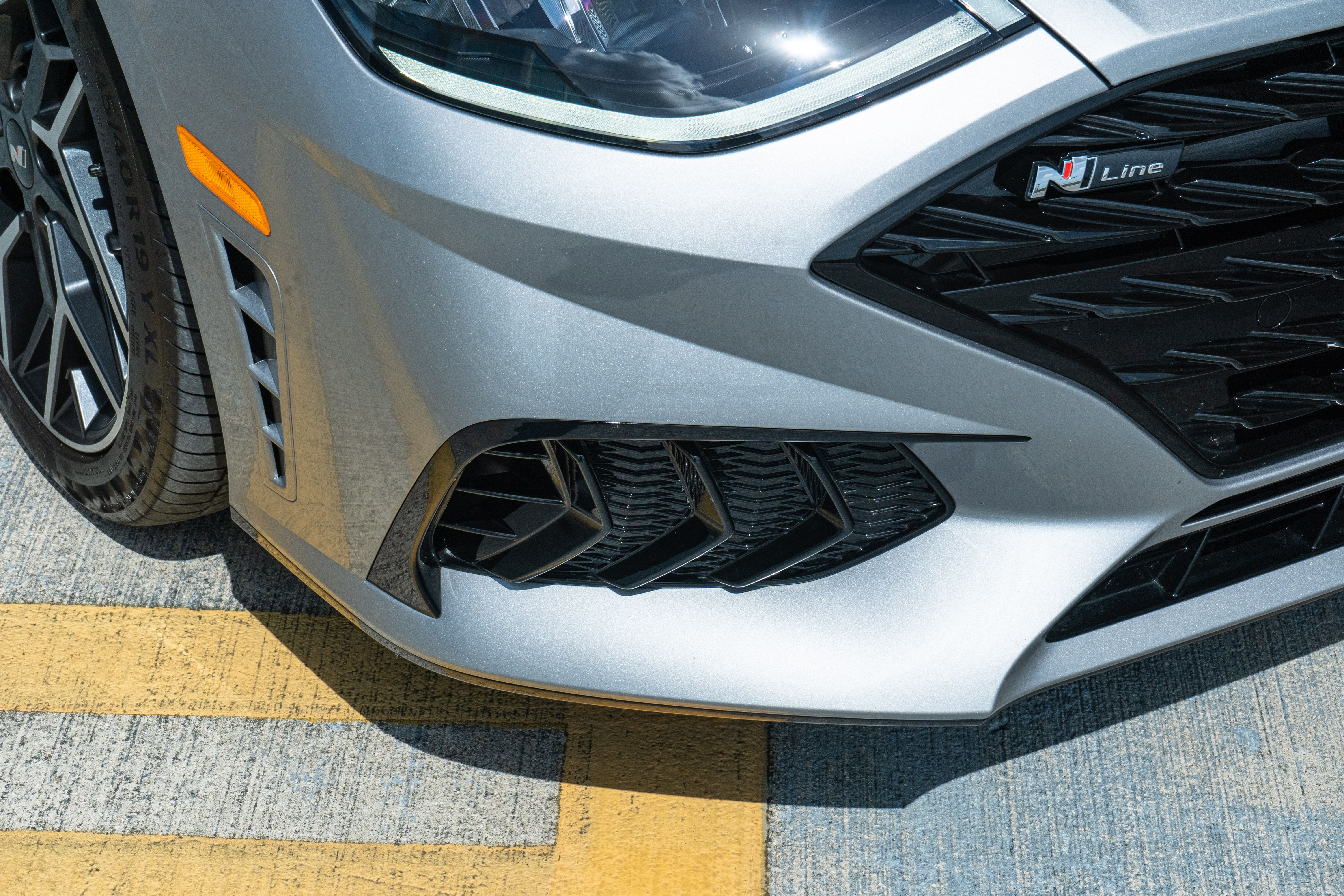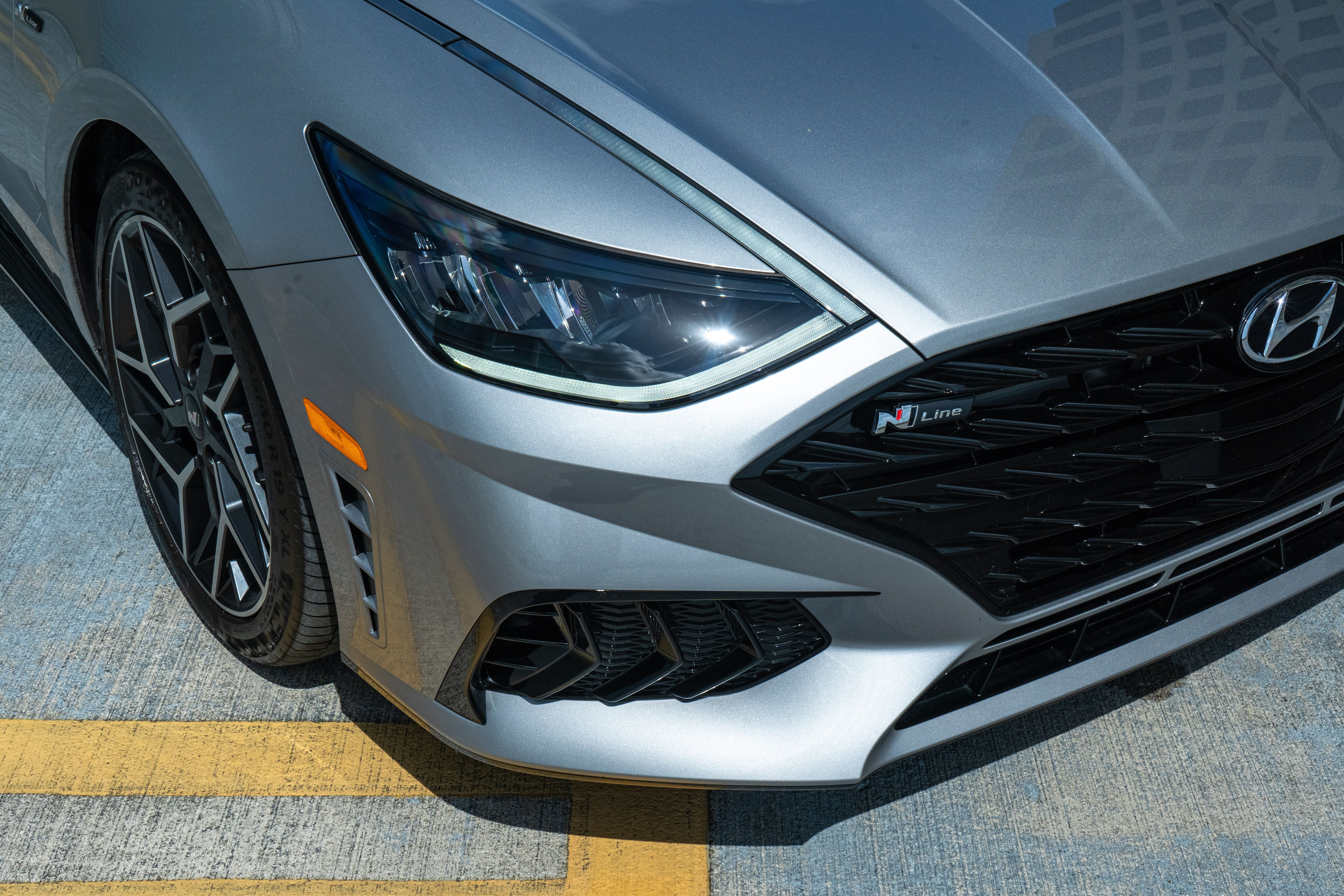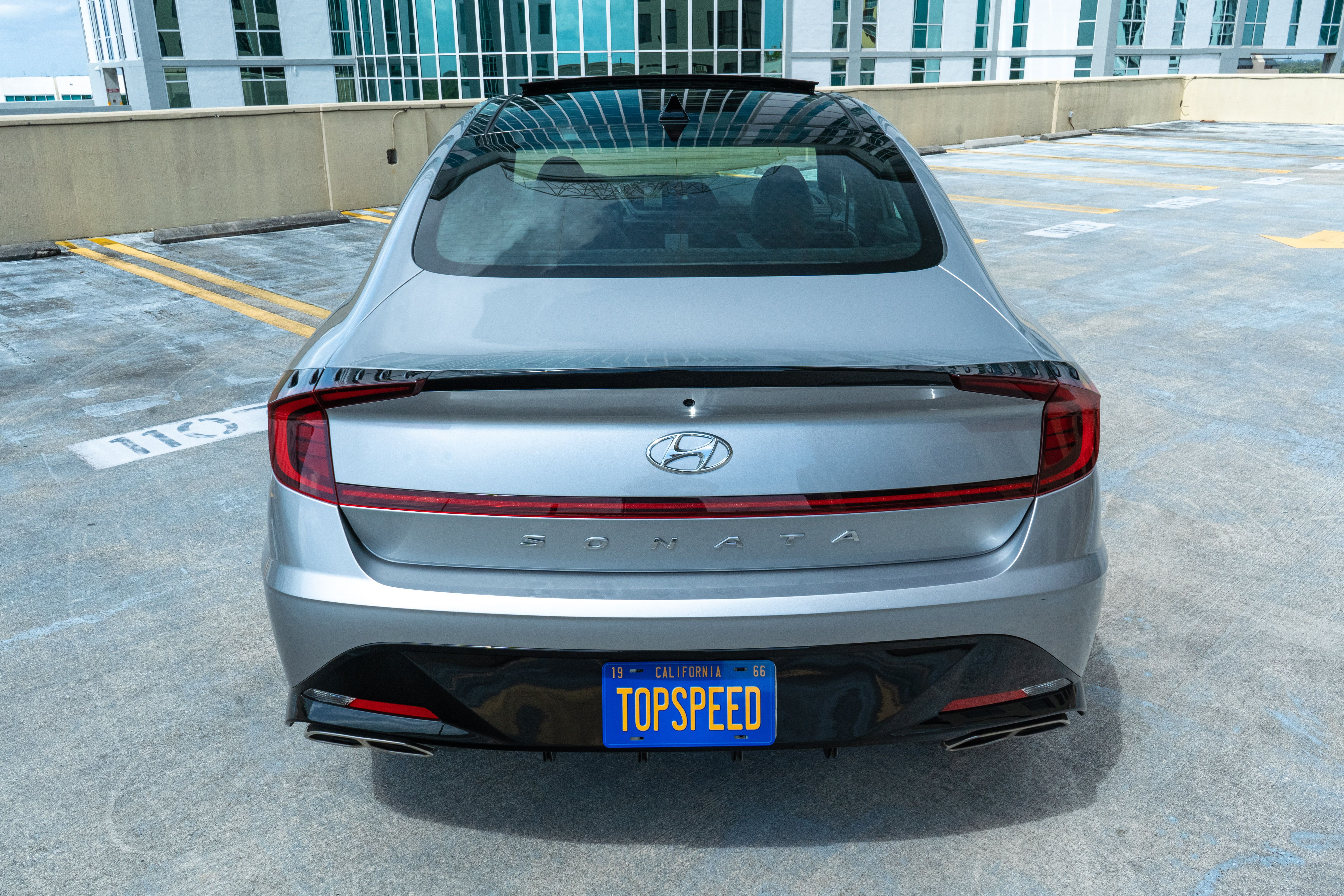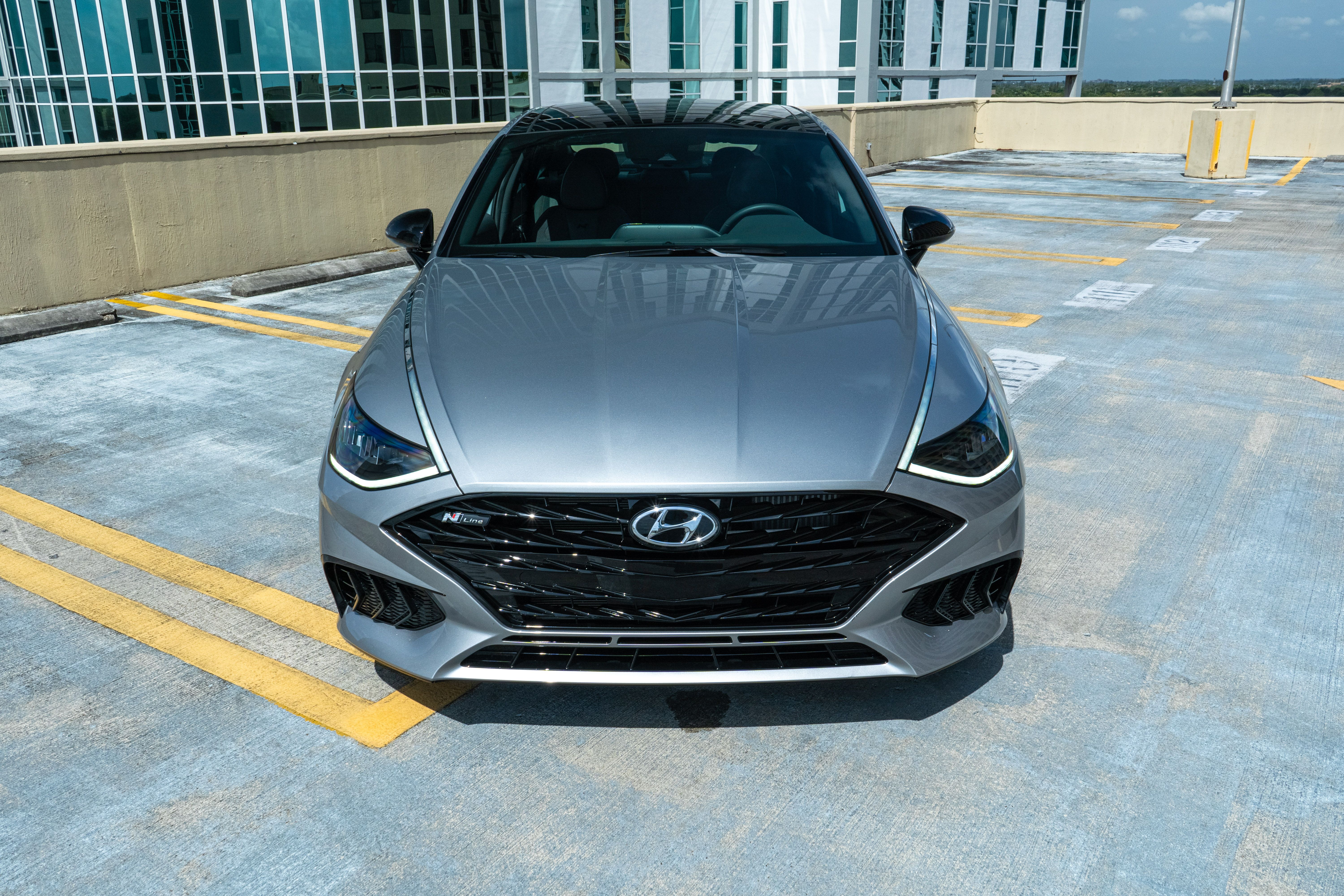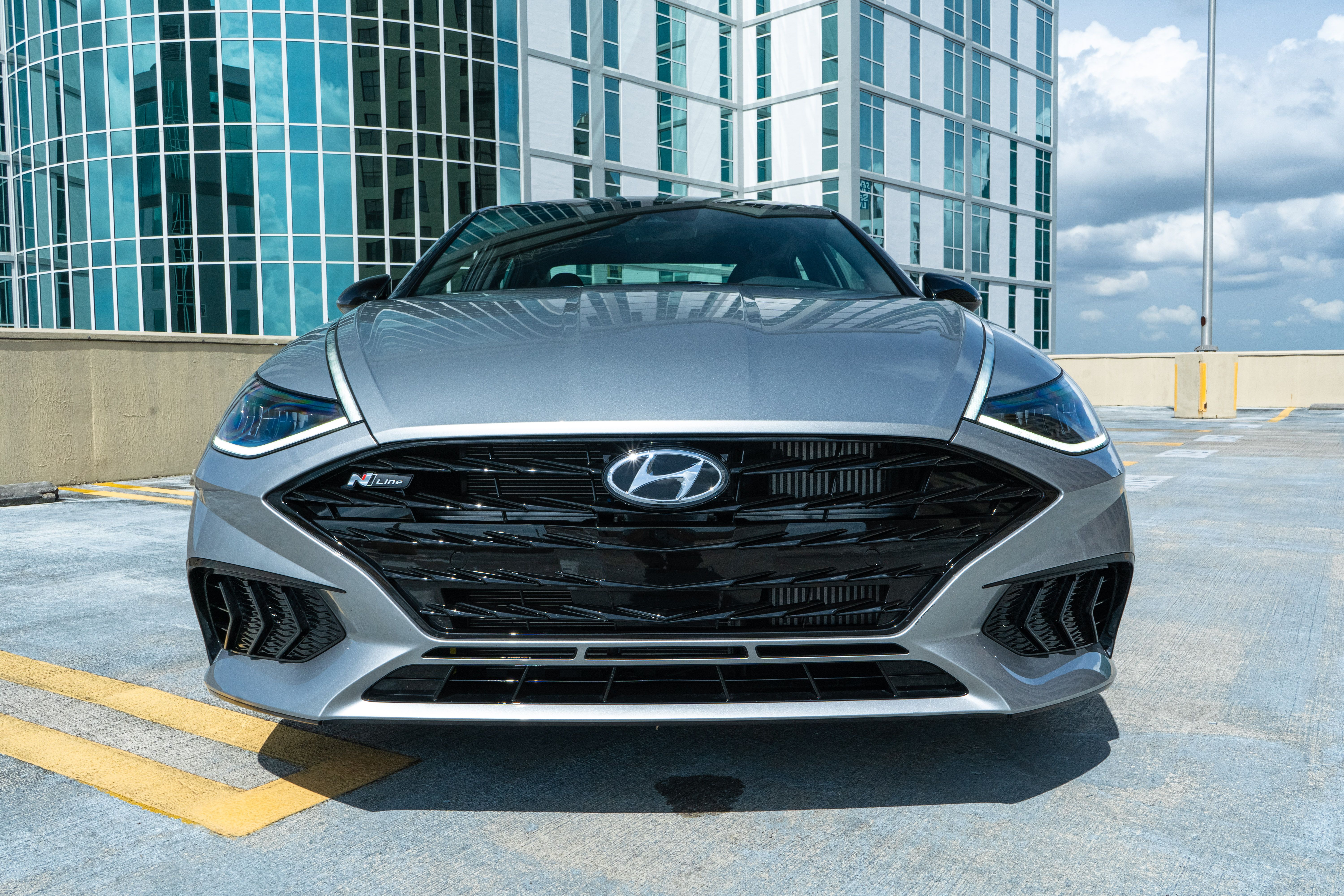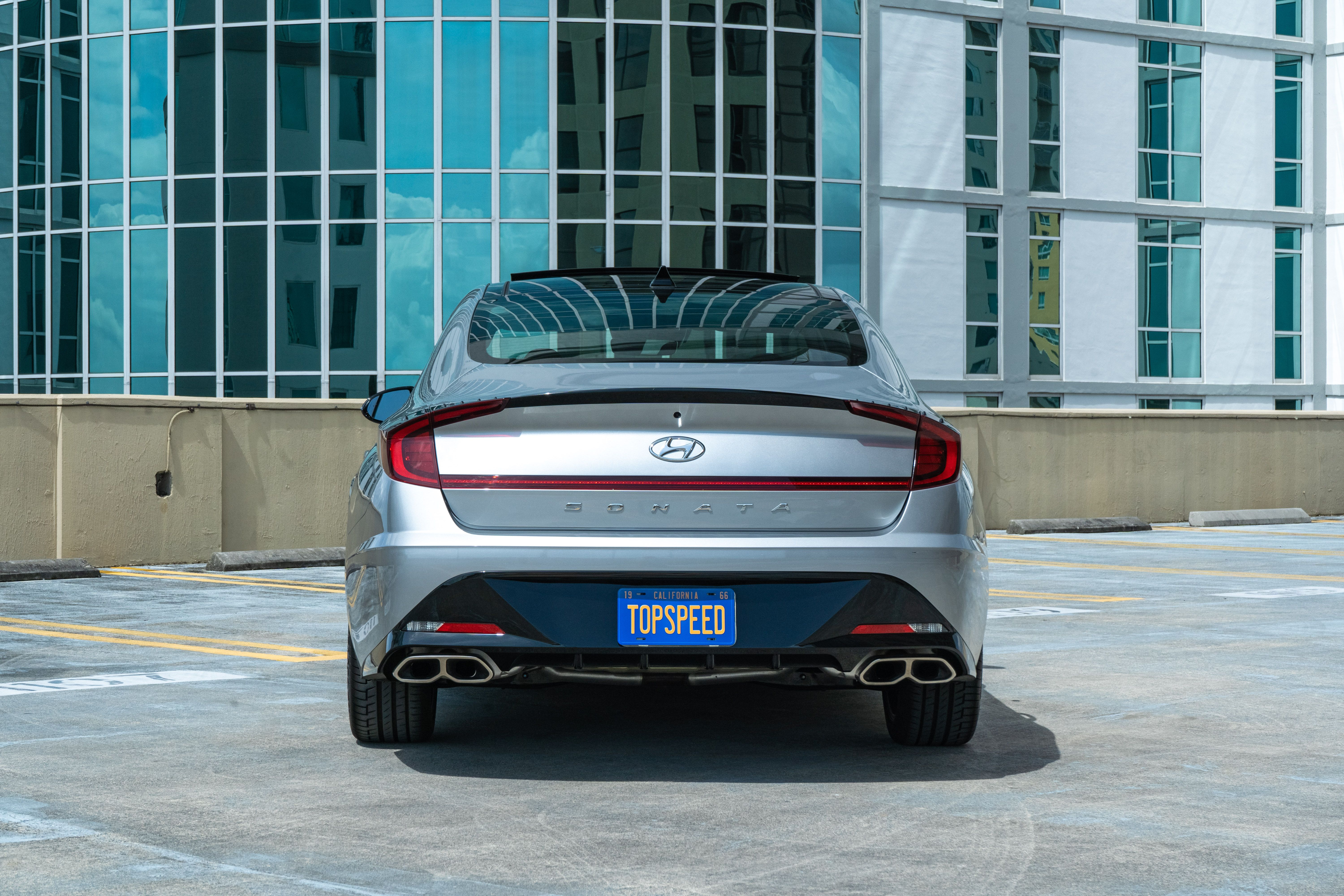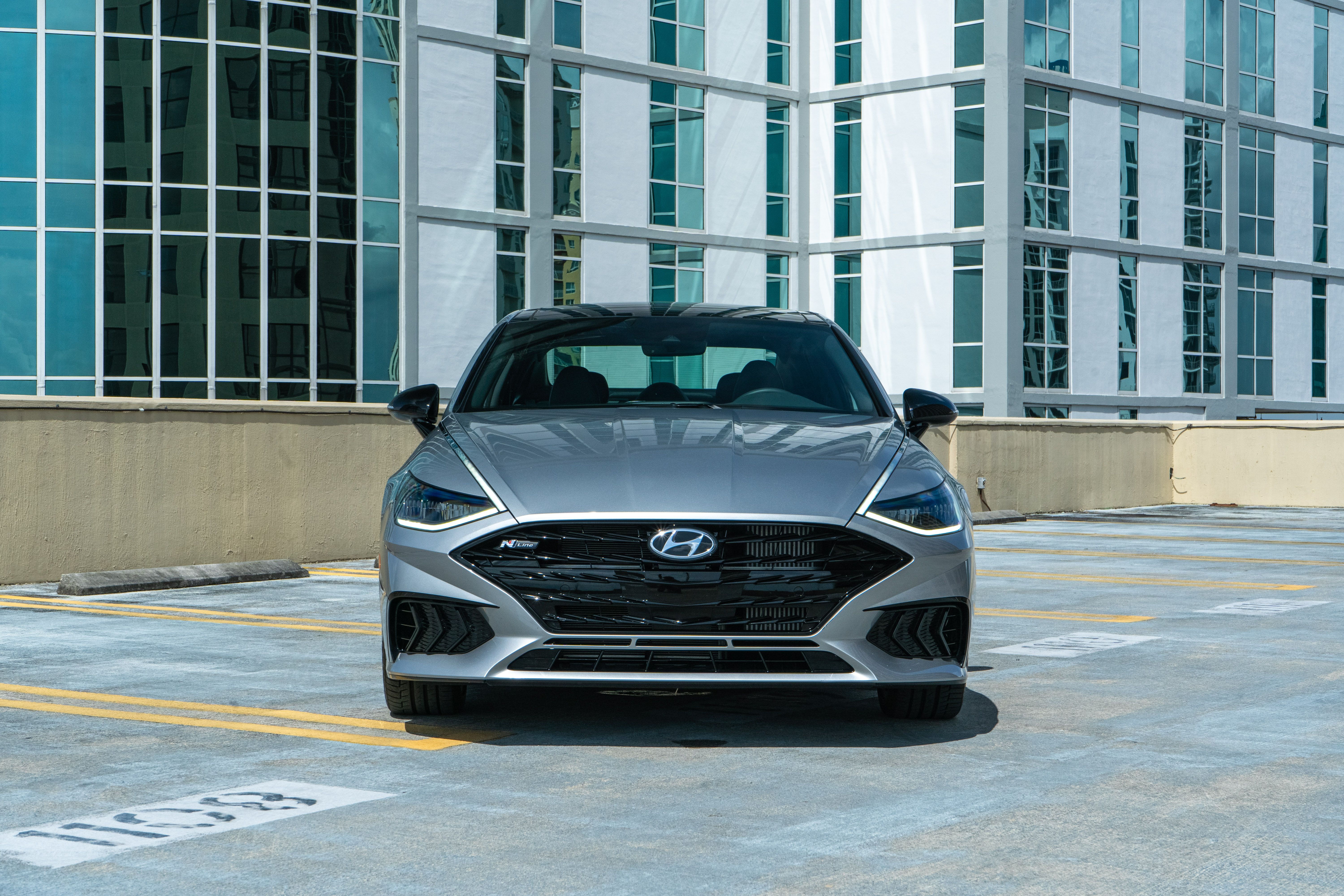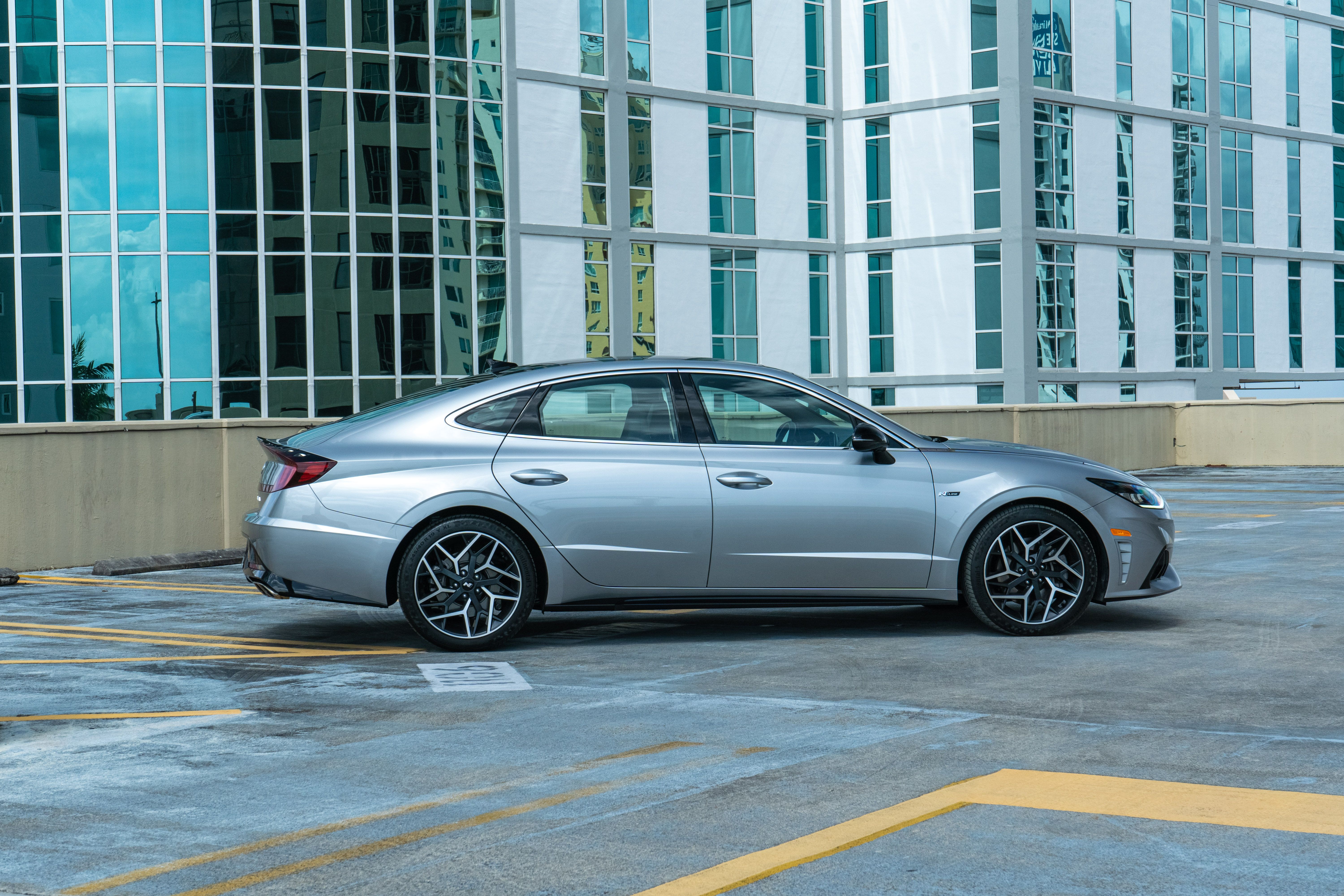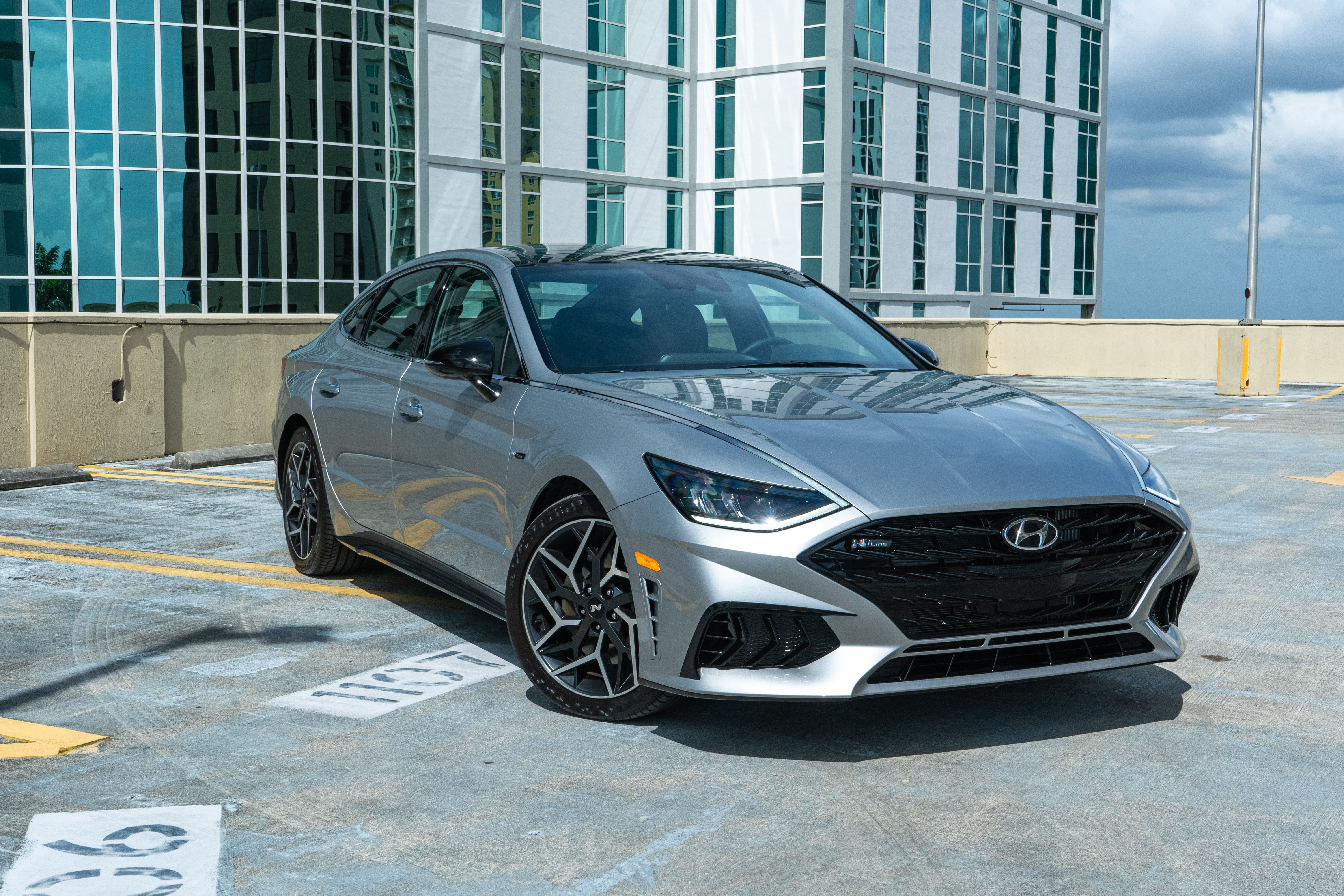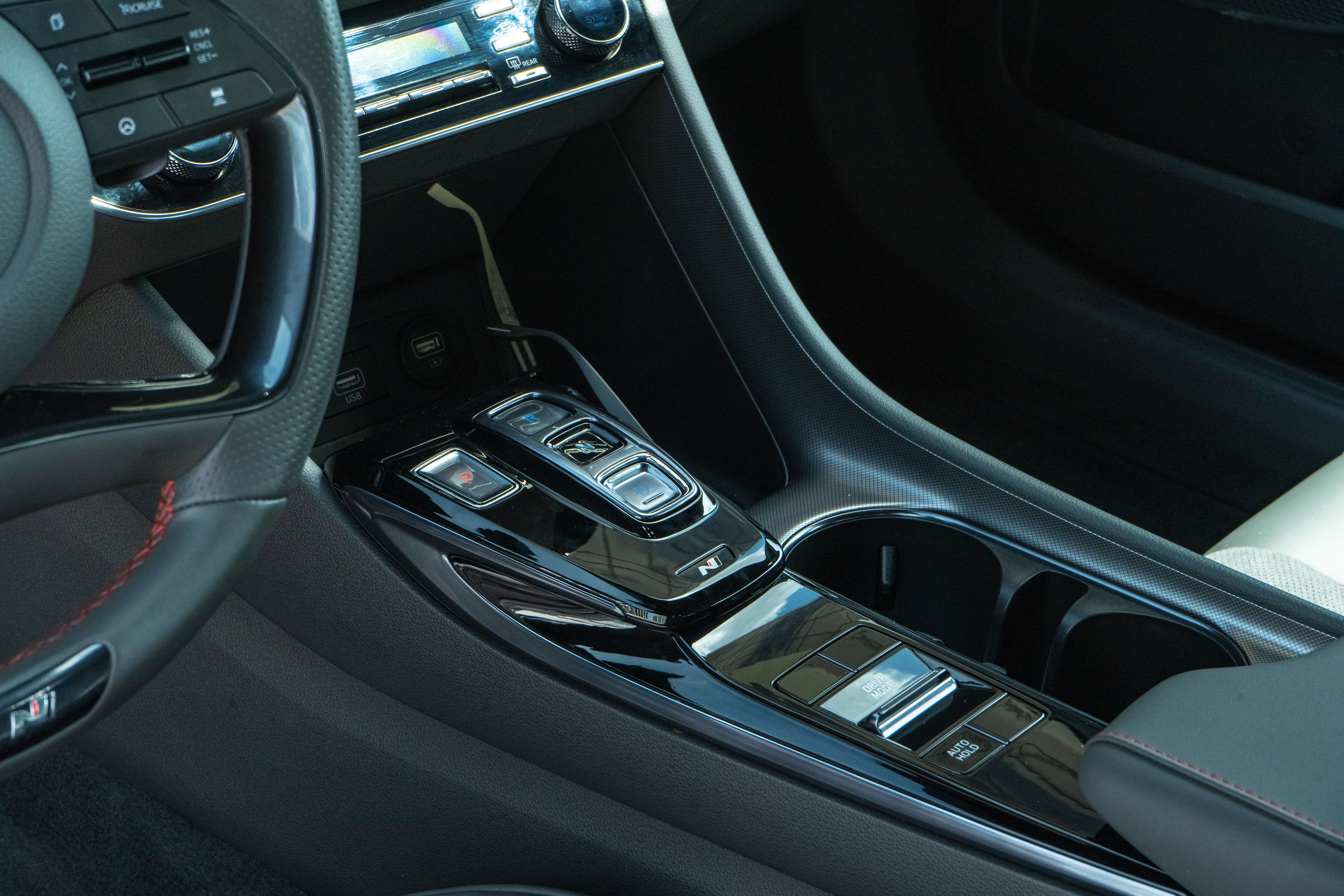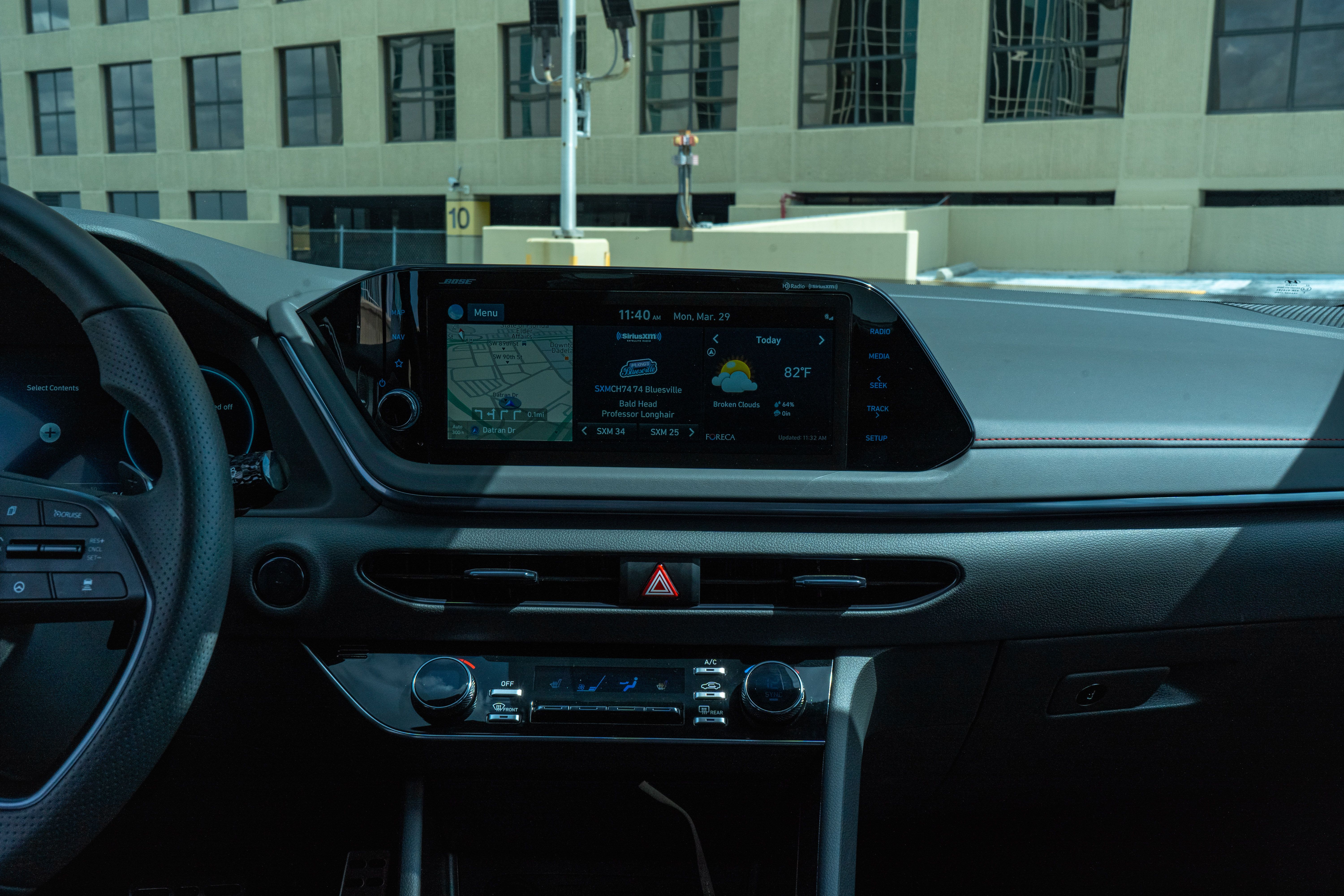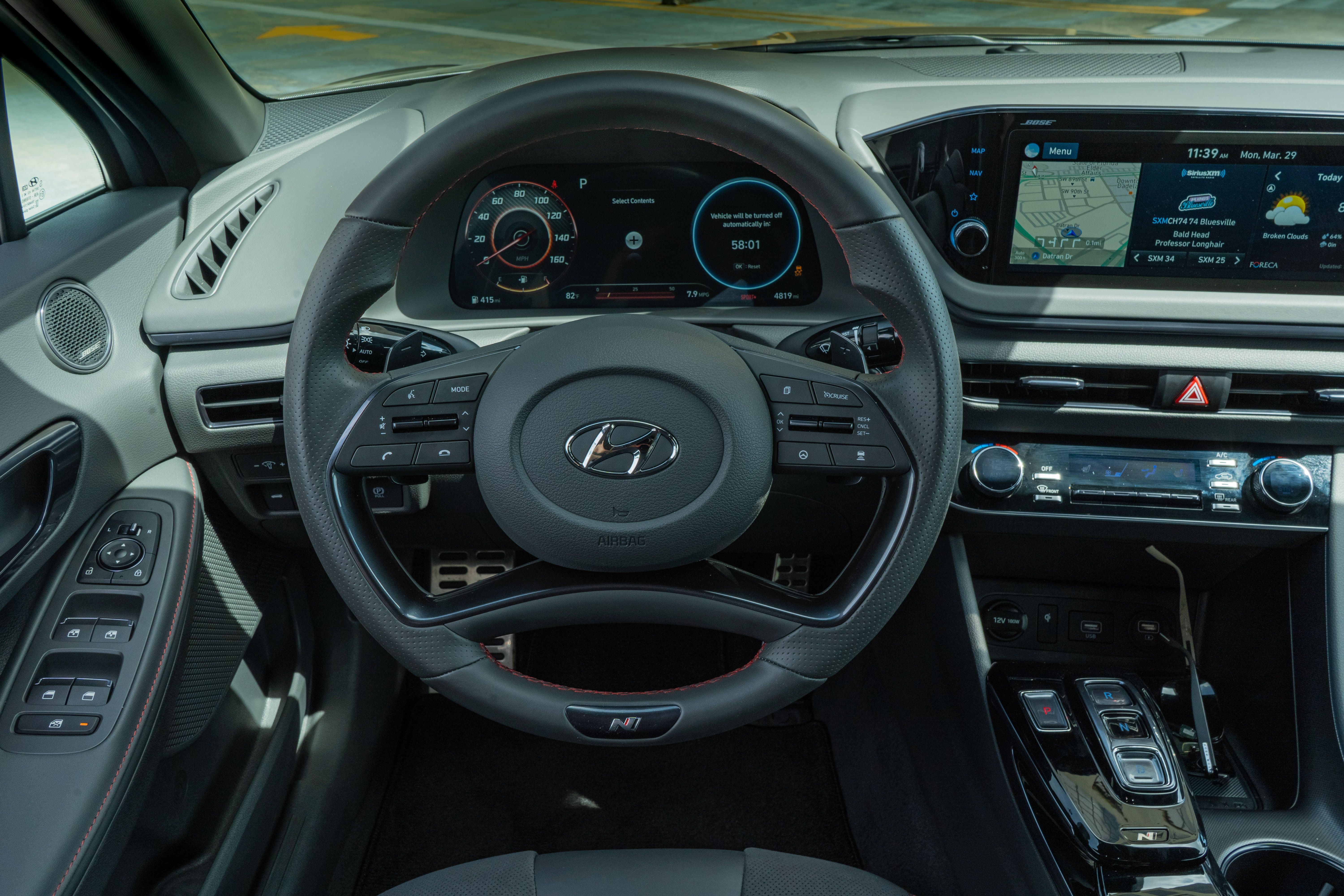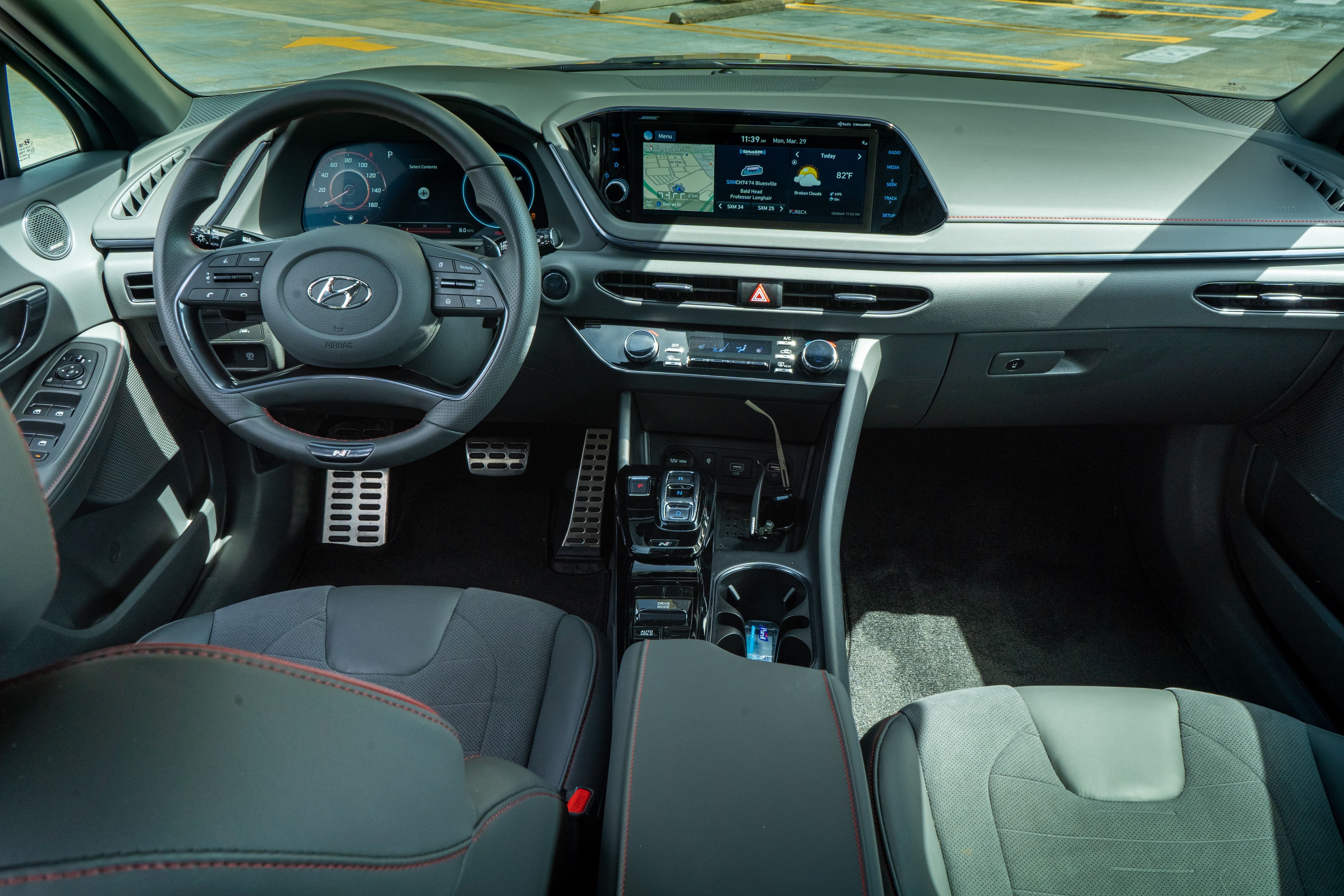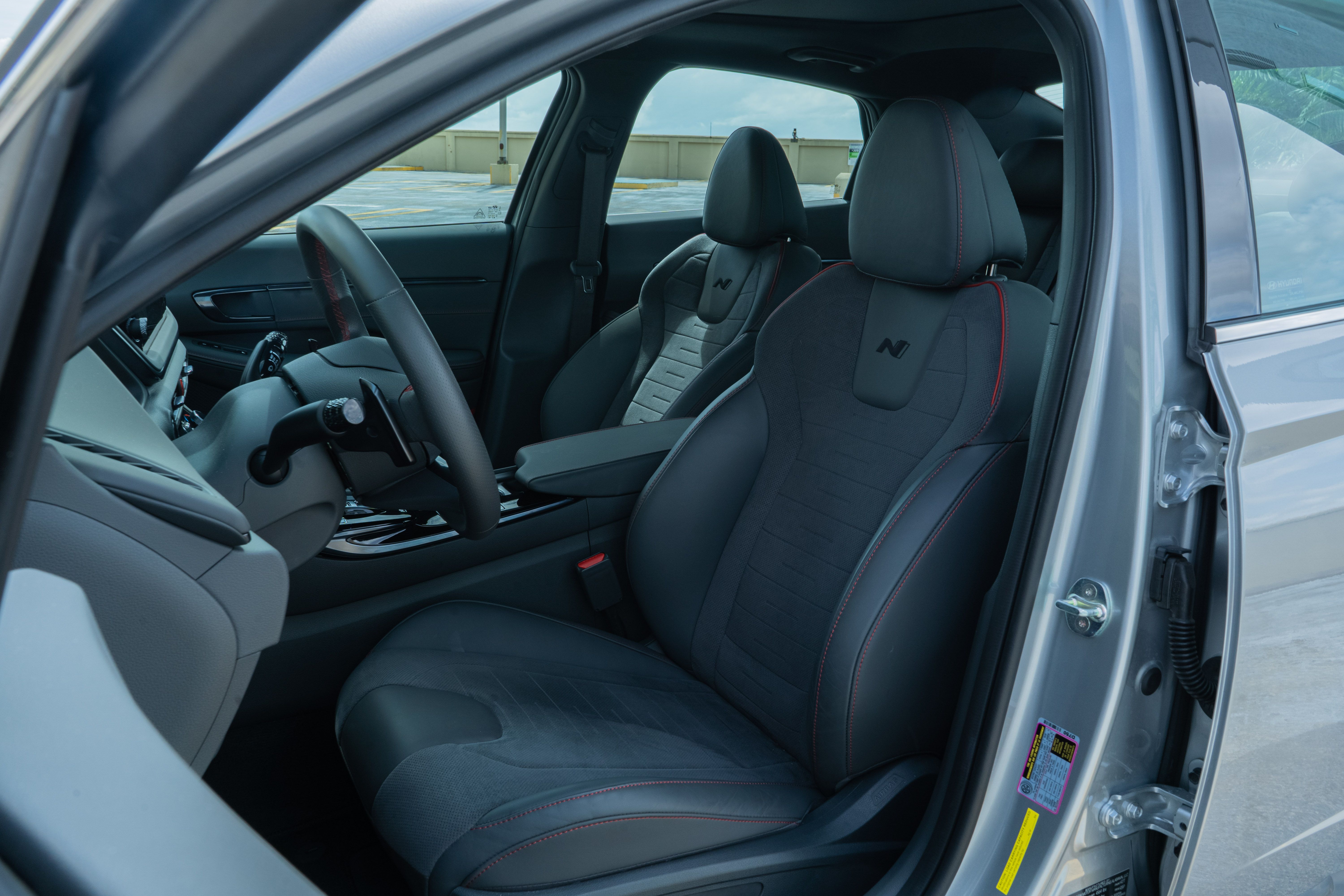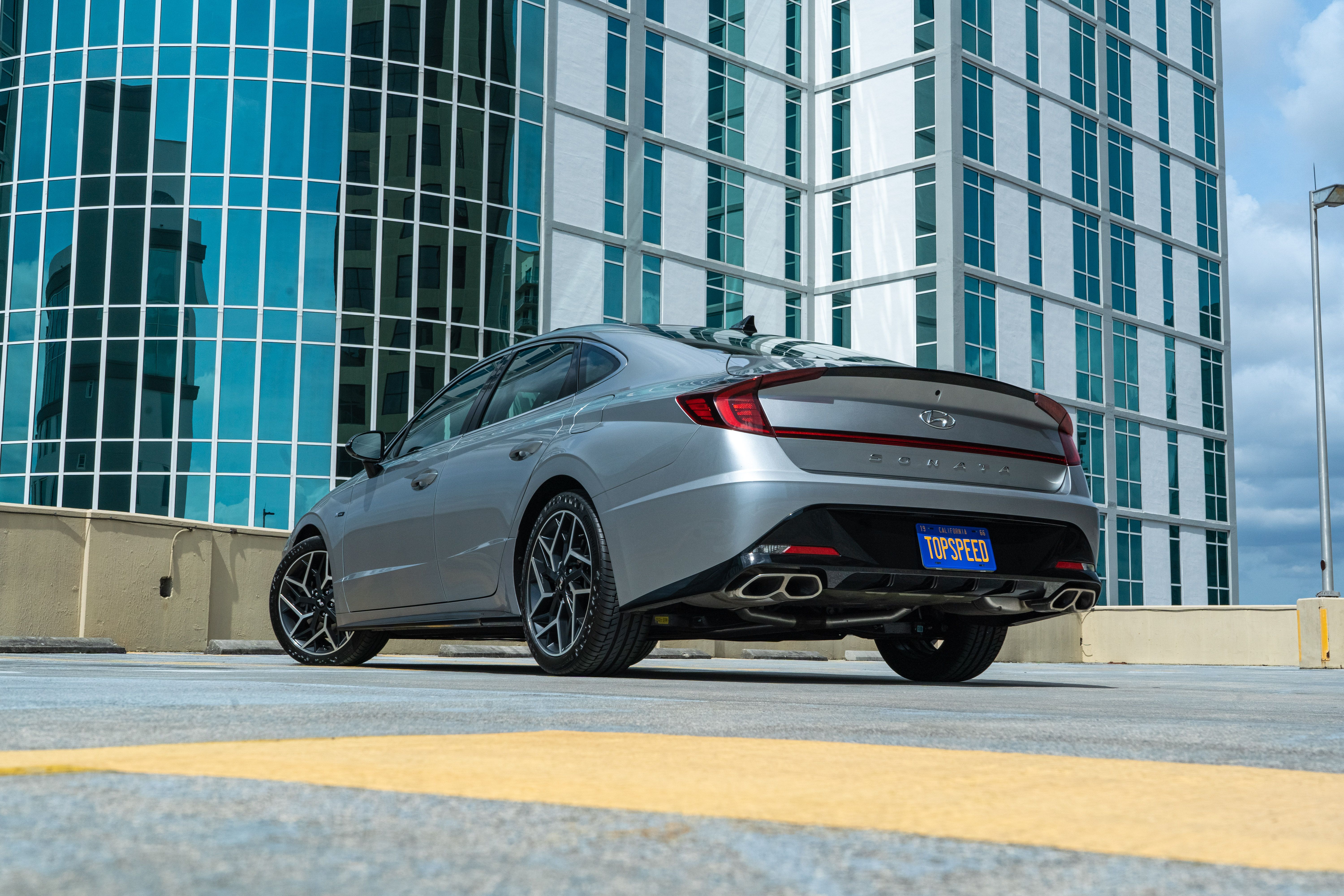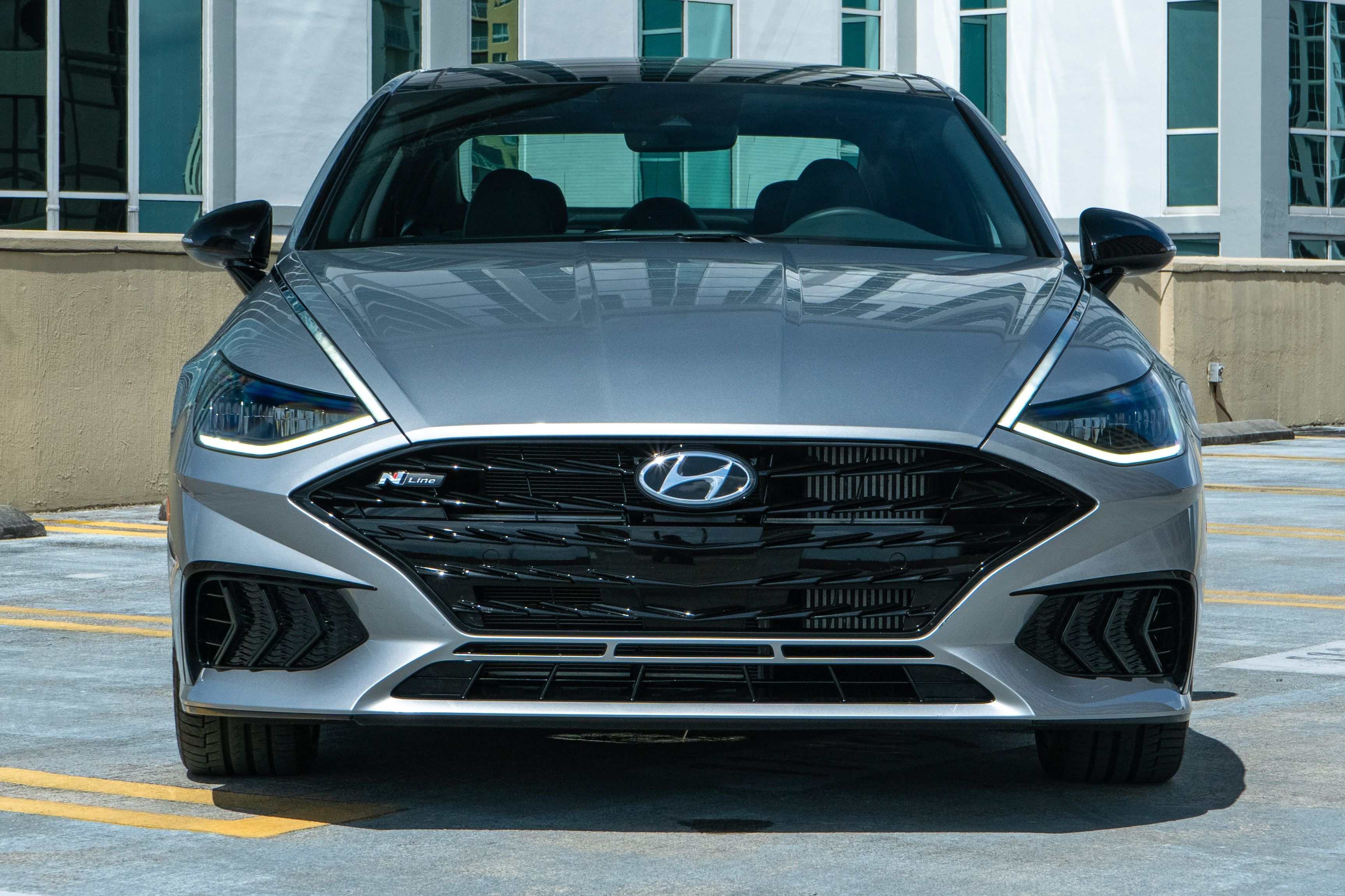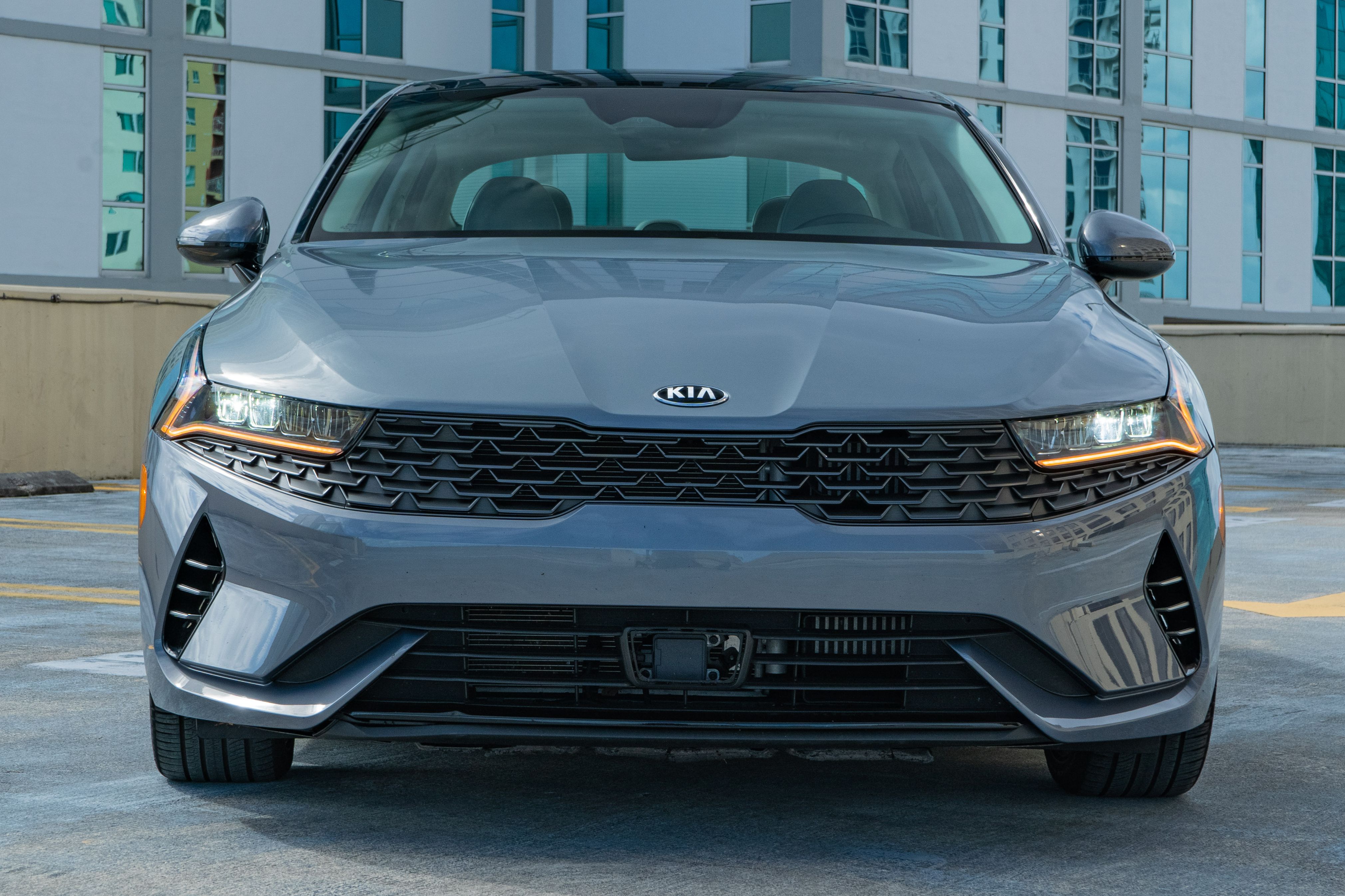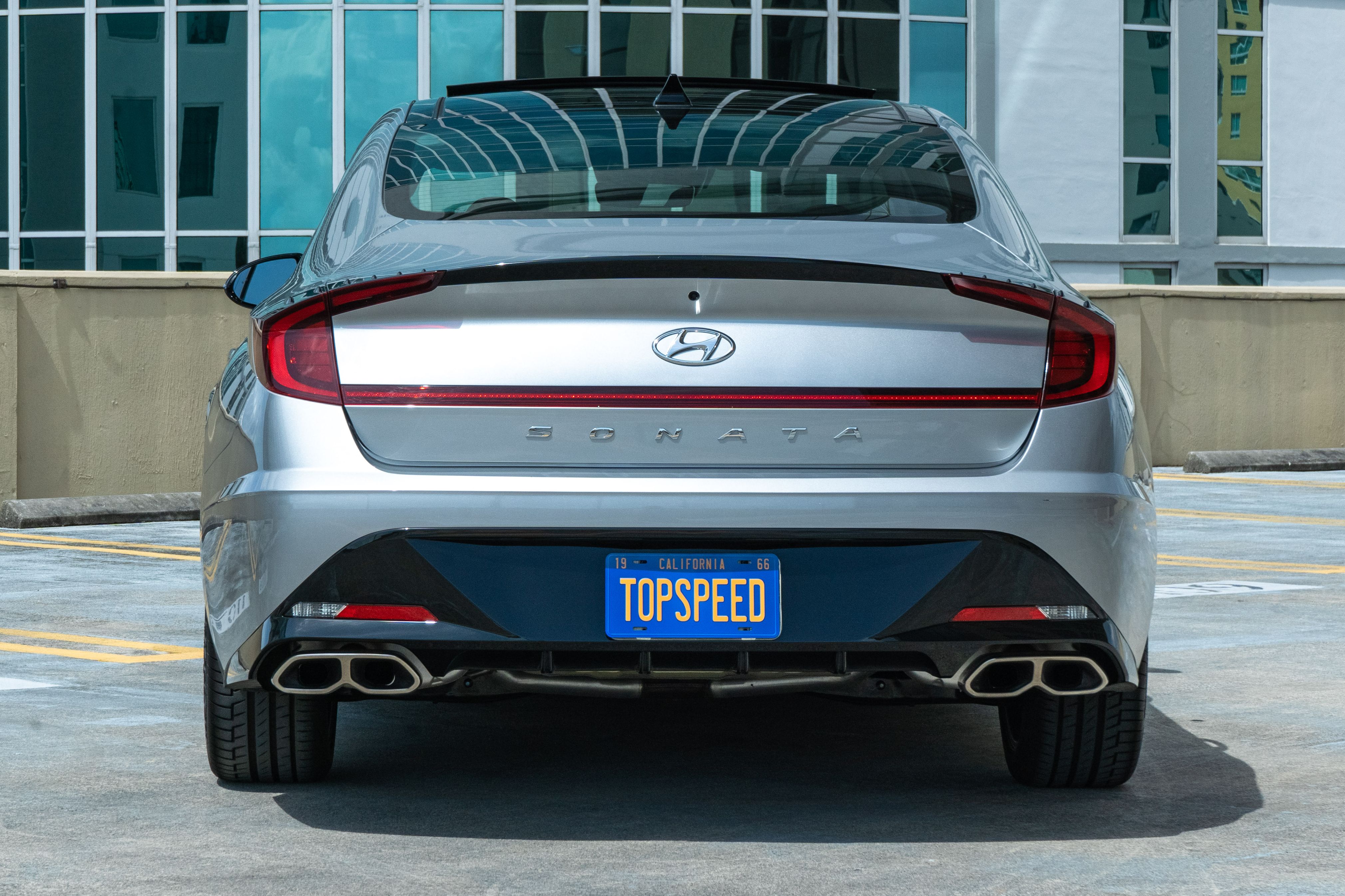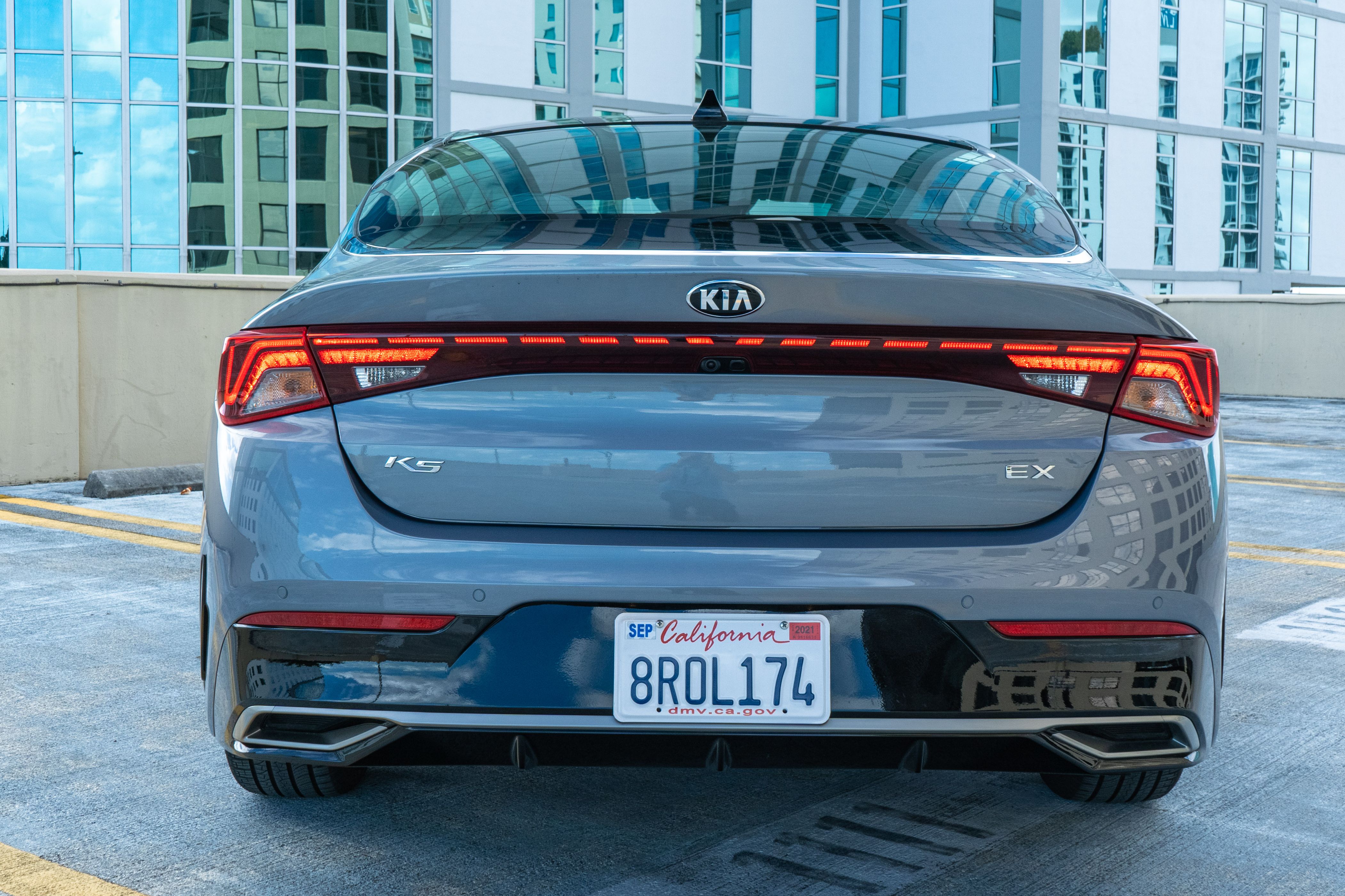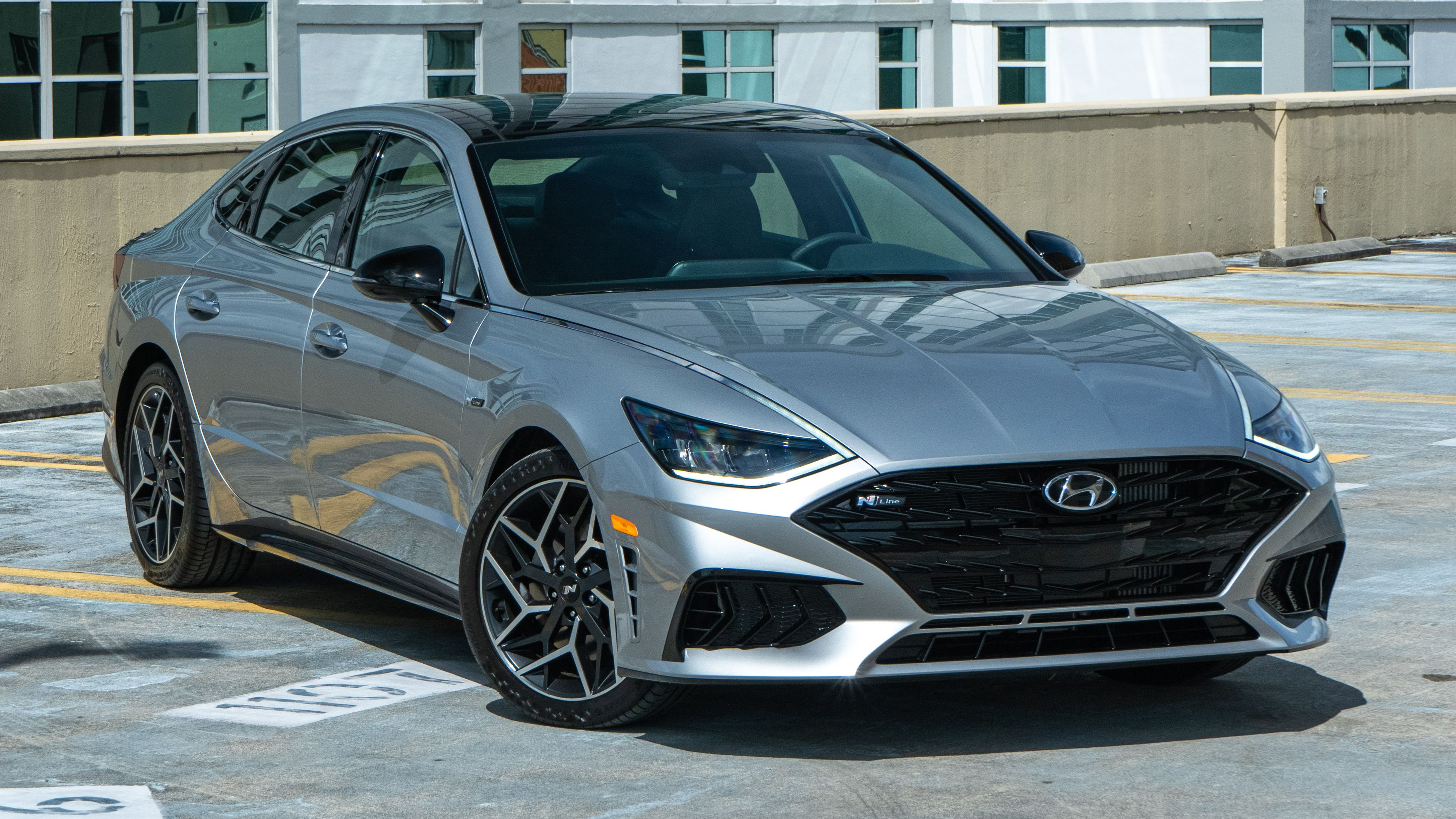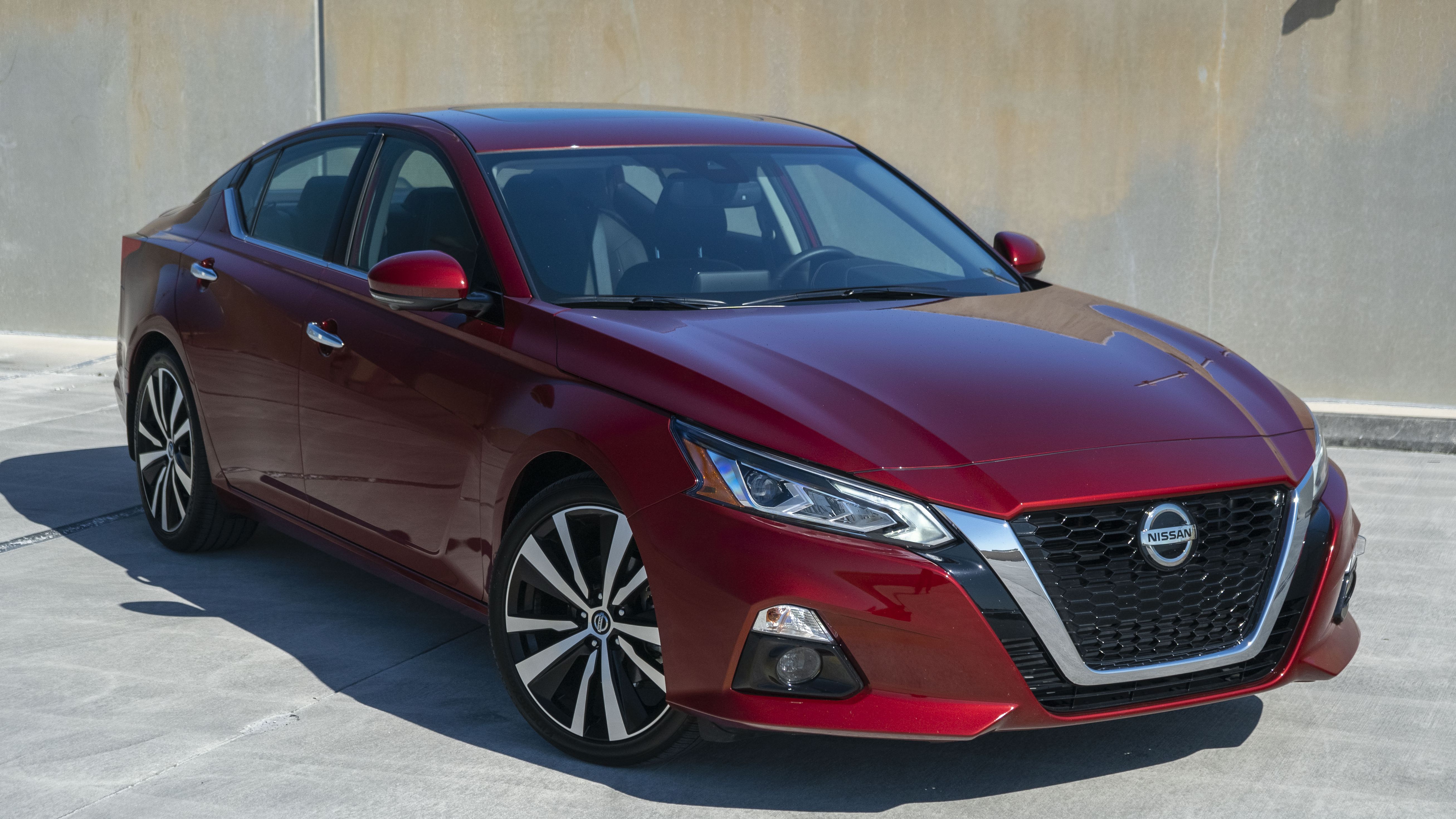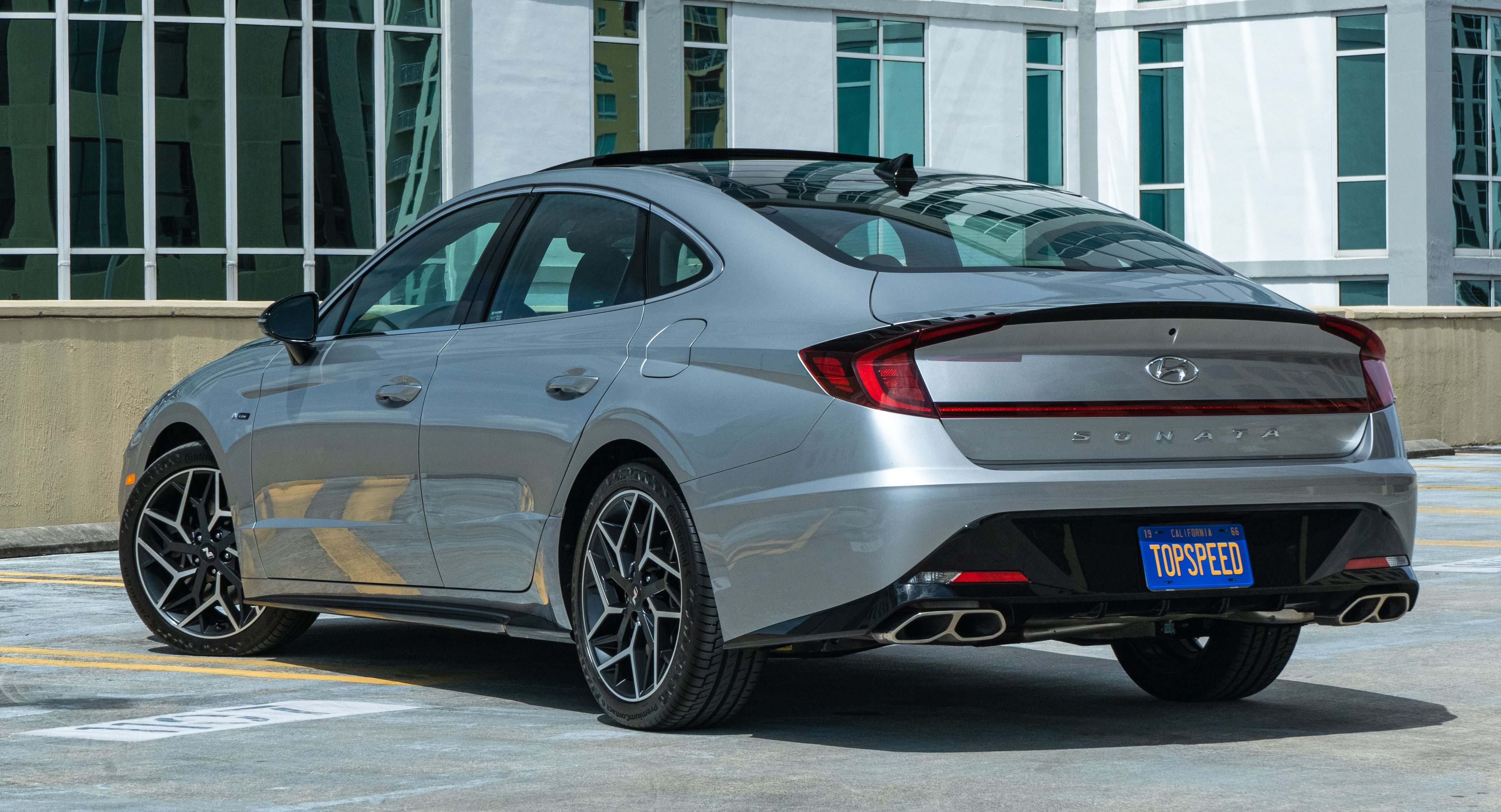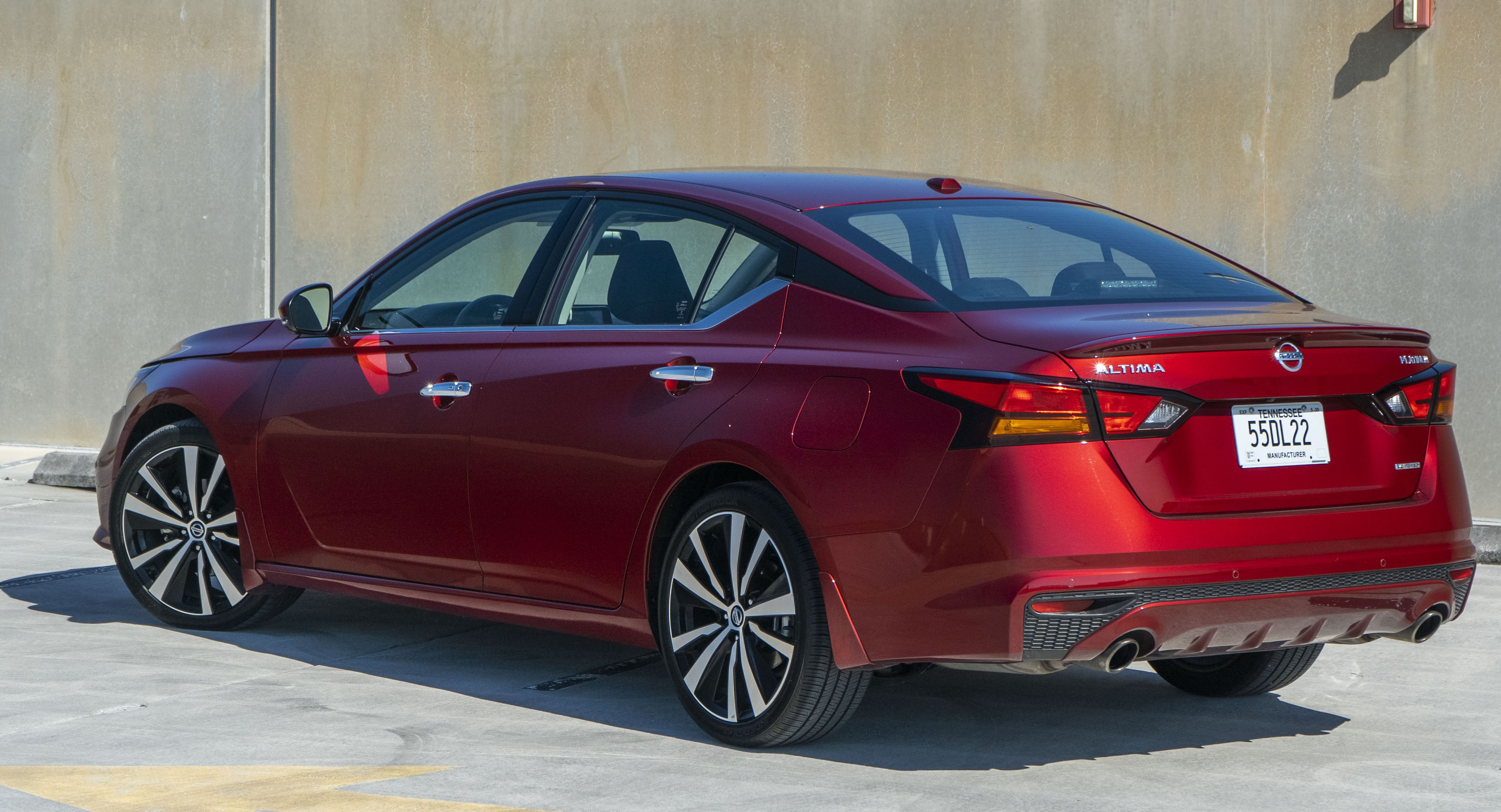Outside of the likes of BMW, Mercedes, and a few others, the concept of sporty and quick sedans is slowly dying off as people look to either bigger, similarly quick, vehicles or smaller two-door sports cars. Then you’ve got brands like Hyundai that seems to either not care or wants to keep the thrill of driving alive, and this is where the Hyundai Sonata N-Line comes in. It’s based on your typical midsized family sedan but is injected with enough sporty DNA that it stands out both visually and in terms of performance. Of course, we’re not talking Porsche Panamera or Dodge Challenger levels of performance, but affordable performance – something that, arguably, gives you a bigger bang for your buck. Here’s what you need to know about the Sonata N-Line and why you should consider it for your next daily driver.
2021 Hyundai Sonata N-Line - Driven
- Make: Array
- Model: 2021 Hyundai Sonata N-Line - Driven
- [do not use] Vehicle Model: Array
Hyundai Sonata N-Line Drivetrain, Performance, and Fuel Economy
The Hyundai Sonata N-Line isn’t the online model in the Sonata lineup to deliver power from a 2.5-liter inline-four, but it is the only model that 200-horsepower barrier. It should also be noted that the N-line’s engine is shared with sister model (and competitor) the Kia K5 GT. While a manual transmission would be beyond pleasant in a model like the Sonata N-Line, you’ll have to make do with an eight-speed automatic. Well, Hyundai calls it an “eight-speed automated manual,” but you get the point – there’s no clutch peal. So, how does the Hyundai Sonata N-line stack up with the competition? Let’s take a good look.
Hyundai Sonata N-Line specifications
|
Engine |
2.5-Liter Inline-Four |
|---|---|
|
Horsepower |
290 HP @ 5800 RPM |
|
Torque |
311 LB-FT @ 1650 RPM |
|
Transmission |
8AT |
|
Driveline |
FWD |
|
Fuel |
Regular |
|
Steering |
Electric |
|
Suspension |
MacPherson Strut |
|
Tires |
245/40 R19 |
|
Curb Weight |
3120 LBS |
|
Fuel Economy |
23/33/27 |
|
0-60 mph |
5.2 Seconds |
|
Top Speed |
145 mph (est) |
Hyundai Sonata N-Line vs competition - fuel economy
|
City |
Highway |
Combined |
Hyundai Sonata N-Line |
23 |
33 |
27 |
|
|---|---|---|---|---|---|---|---|
|
Kia K5 |
24 |
32 |
27 |
||||
|
Nissan Altima |
25 |
34 |
29 |
Hyundai Sonata N-Line Interior Design
The Hyundai Sonata N-Line might have a sporty exterior appearance and performance figures to back up the entry-level sports sedan mantra, but the interior serves as a mild reminder that this is still an affordable Hyundai and not something that wears a premium badge. There are some fine materials here and there, like the partially wrapped dashboard, leather wrapped armrest, and dual-layer seats. The gear shifter and drive-mode control is a bit bulky and feels out of place – almost like it wants to be BMW’s drive selector or something similar to Mercedes’ newest shift design. It does work well, but as bulky as it is, the car would be better off with an old-school shifter.
On that note, the digital instrument cluster is a nice touch for a car at this price point and the infotainment system works very well with quick response and easy-to-navigate menus. The other big highlight here are the metal pedals and footrest that would generally seem out of place in most Hyundais but fits in nicely here.
Hyundai Sonata N-Line vs competition - interior dimensions
|
Front Headroom |
40 |
38.4 |
39.2 |
|---|---|---|---|
|
Front Shoulder Room |
40 |
58 |
58.2 |
|
Front Hip Room |
54.6 |
56.6 |
54.7 |
|
Front Leg Room |
46.1 |
46.1 |
43.8 |
|
Rear Headroom |
38.4 |
37.4 |
36.9 |
|
Rear Shoulder Room |
56.1 |
56.1 |
57.1 |
|
Rear Hip Room |
54.4 |
56.6 |
54.5 |
|
Rear Leg Room |
34.8 |
35.2 |
35.2 |
Hyundai Sonata N-Line Exterior Design
When Hyundai Introduced the 2020 Sonata, the car itself marked a full evolution to a sportier design style. The grille got wider and shorter, the front fascia itself became more aggressive, and the headlights became sleek and attractive. The hood, while featuring toned down lines, became bulgier and more muscular – something assisted by the frameless design of the hood since it hovers over the grille. The same ideals transferred to the rear where the rear fascia gained a lot more character and the sleeker tail lights were linked with a simple LED strip across the face of the rear deck. These changes made the Sonata a top contender in the good looks department, but there’s on inherent flaw – it can be said that the Sonata looks a hell of a lot like an Audi and lacks originality. But, that’s a conversation for another time.
The N-Line, which sits just one spot below the range-topping model in the Sonata lineup, takes the Sonata’s new aggressive design and takes it to an even higher level. It’s downright attractive, but one could also argue that Hyundai tried a little too hard. The new arrow inserts in the corner vents, for example, feel like a little too much – almost like Hyundai didn’t know what to do. Then you’ve got the design of the front fascia that feels almost like a downgrade, especially at the air dam, compared to the non-N-Line model. The cooling vents on ahead of the front wheels do look cool, but those too are more for looks than anything else. The rear end of the N-Line isn’t all that different from the other models, but that’s actually okay because the rear end looked fine as it was and adding something more aggressive back here would do more harm than good.
Hyundai Sonata N-Line vs competition - exterior dimensions
|
Length |
192.9 |
191.3 |
192.9 |
|---|---|---|---|
|
Width |
73.2 |
73.2 |
72.9 |
|
Height |
56.9 |
56.9 |
56.7 |
|
Wheelbase |
111.8 |
112.2 |
111.2 |
|
Front Track |
63.5 |
63.7 |
63.2 |
|
Rear Track |
63.8 |
64 |
63.2 |
Hyundai Sonata N-Line Pricing
The Hyundai Sonata starts out at $23,700 for the entry-level SE trim level, but if you want what is arguably the best model, you need to buy your way up to the Sonata N-Line with an MSRP of $33,300. This puts the N-Line above the $25,800 Sonata SEL and $28,300 Sonata SEL Plus. It’s not the range-topping model, though, so you could go with the $33,950 Sonata Limited, but that model isn’t as fast and doesn’t look quite as good. To put this into perspective, the Kia K5 GT commands $30,590 while the Nissan Altima SR VC-Turbo commands $30,700.
Hyundai Sonata N-Line Competition
|
|
ids=981875,981876 |
no_overlay=false |
before_label=Hyundai Sonata N-Line |
after_label=Kia K5 GT> |
|
|
ids=981877,981878 |
no_overlay=false |
before_label=Hyundai Sonata N-Line |
after_label=Kia K5 GT> |
Hyundai Sonata N-Line vs Kia K5 GT
|
Hyundai Sonata N-Line |
Kia K5 GT |
Engine |
2.5-Liter Inline-Four |
2.5-Liter Inline-Four |
|
|---|---|---|---|---|---|
|
Horsepower |
290 HP @ 5800 RPM |
290 HP @ 5800 RPM |
|||
|
Torque |
311 LB-FT @ 1650 RPM |
311 LB-FT @ 1650 RPM |
|||
|
Transmission |
8AT |
8AT |
|||
|
Driveline |
FWD |
FWD |
|||
|
Fuel |
Regular |
Regular |
|||
|
Steering |
Electric |
Electric |
|||
|
Suspension |
MacPherson Strut |
Four-Wheel Independent |
|||
|
Tires |
245/40 R19 |
P235/45R18 |
|||
|
Curb Weight |
3120 LBS |
3228 LBS |
|||
|
Fuel Economy |
23/33/27 |
24/32/27 |
|||
|
0-60 mph |
5.2 Seconds |
5.5 Seconds |
|||
|
Top Speed |
145 mph (est) |
145 mph |
Read our full review on the Kia K5 Sedan
|
|
ids=981879,981880 |
no_overlay=false |
before_label=Hyundai Sonata N-Line |
after_label=Nissan Altima SR VC-Turbo> |
|
|
ids=981881,981882 |
no_overlay=false |
before_label=Hyundai Sonata N-Line |
after_label=Nissan Altima SR VC-Turbo> |
Hyundai Sonata N-Line vs Kia K5 GT
|
Hyundai Sonata N-Line |
Kia K5 GT |
Engine |
2.5-Liter Inline-Four |
2.5-Liter Inline-Four |
|
|---|---|---|---|---|---|
|
Horsepower |
290 HP @ 5800 RPM |
290 HP @ 5800 RPM |
|||
|
Torque |
311 LB-FT @ 1650 RPM |
311 LB-FT @ 1650 RPM |
|||
|
Transmission |
8AT |
8AT |
|||
|
Driveline |
FWD |
FWD |
|||
|
Fuel |
Regular |
Regular |
|||
|
Steering |
Electric |
Electric |
|||
|
Suspension |
MacPherson Strut |
Four-Wheel Independent |
|||
|
Tires |
245/40 R19 |
P235/45R18 |
|||
|
Curb Weight |
3120 LBS |
3228 LBS |
|||
|
Fuel Economy |
23/33/27 |
24/32/27 |
|||
|
0-60 mph |
5.2 Seconds |
5.5 Seconds |
|||
|
Top Speed |
145 mph (est) |
145 mph |
Read our full review on the Nissan Altima SR VC-turbo
Final Thoughts
Overall, the Hyundai Sonata N-Line is a nice, rounded package, and it’s honestly the model to get if you want to avoid the typical “oh, it’s a Hyundai” econobox shit talk at work. The N-Line is quick to 60 mph, it handles well, and the interior – while feeling a bit out of place in some regard – is great for a car in this price range. Of course, there’s always more Hyundai could do, and the exterior does have a certain Audi feel to it, but it’s easy to look past once you’ve spent some time behind the wheel.
FAQ
Q: How Much Power Does the Hyundai Sonata N-Line Have?
The Hyundai Sonata N-Line delivers 290 horsepower and 311 pound-feet of torque from a 2.5-liter, four-cylinder engine. This power output is identical to that of the Kia K5 GT that it’s forced to compete with, but far superior to the Nissan Altima SR, which delivers 248 horsepower and 273 pound-feet of torque from a smaller 2.0-liter four-cylinder engine. All three models are front-wheel drive, but the Altima SR is the only model stuck with a CVT, which – arguably – makes it the least desirable of the bunch.
Q: How Fast Is The Hyundai Sonata N-Line?
Hyundai has yet to release official numbers, Independent tests have shown that the Hyundai Sonata N-Line can hit 60 mph in anywhere between five seconds flat around 5.5 seconds. The general consensus, however, says 5.2 seconds is about what you should expect. On that note, the N-Line is actually a bit faster to 60 mph than the K5 GT that it shares its DNA with, as that model takes 5.5 seconds to get to 60 mph. In contrast, the Altima SR makes the same sprint in around 6.2 seconds, making it the slowest of the bunch.
Q: What is the Hyundai Sonata N-Line’s Top Speed?
The Hyundai Sonata N-Line has an estimate top speed of 145 mph – equal to that of the Kia K5 GT, however, since it’s a bit lighter (just a hair over 100 pounds linghter), there’s a chance that you might be able to squeeze a few extra mph out of it if you really push it. The Nissan Altima SR, by the way, tops out at 135 mph, so don’t expect it to win the sprint to 60 or the long sprint.
Q: Hyundai Sonata N Fuel Economy
The Hyundai Sonata N is rated at 23 mpg in the city, 33 mpg on the highway, at 27 mpg combined. These figures aren’t bad for a car that can hit 60 mph in 5.2 seconds, but oddly enough, the Kia K5 with the same engine manages to deliver 24 mpg in the city, 32 mpg on the highway, and 27 mpg combined. It’s 0.3 seconds slower to 60 mph but garners better fuel economy in the city – if that’s worth anything to you. As far as the Nissan Altima is concerned, it might not be the fastest or most powerful of the bunch, but it will get you a little bit further in the economy department with 25 mpg in the city, 34 mpg on the highway, and 29 mpg combined.
Q: How Much Interior Space Does the Hyundai Sonata N-Line Have?
The Hyundai Sonata N-Line is impressively spacious, beating out both the Kia K5 and Nissan Altima in most measurable categories. Front passengers have 40 inches of head and shoulder room to go with 54.6 inches of hip room and 46.1 inches of leg room. Rear passengers have 38.4 inches of headroom (more than the K5 or Altima offer) to go with 56.1 inches of shoulder room, 54.4 inches of hip room, and 34.8 inches or rear leg room. To see how this compares in detail to the Kia K5 and Nissan Altima, check out the table below.
Q: How Much Cargo Room Does The Hyundai Sonata N-Line Have?
The Hyundai Sonata N-Line offers up 16 cubic-feet of cargo room, which puts it on par with the Kia K5 (big surprise there, right?) and just a pinch ahead of the Nissan Altima, which has 15.4 cubic-feet of cargo room.
Q: How Big Is the Hyundai Sonata N-Line?
The Hyundai Sonata N-Line measures 192.9 inches long, 73.2 inches wide, 56.9 inches tall, and rides on a 111.8-inch wheelbase. This makes the Sonata N-Line just a bit longer than the Kia K5 but the same length as the Nissan Altima. The differences in both width and height between the three models are negligible but be sure to check out the table below to see how they compare in depth. In terms of garaging, the Sonata N-Line won’t fit in smaller one-car garages, but as long as you have a 1.5-car garage or larger, you shouldn’t have a problem with night-time car storage.
Q: How Much Does The Hyundai Sonata N-Line Weigh?
The Hyundai Sonata N-Line weighs 3,120 pounds fully fueled and oiled up. That makes it a little over 100 pounds shy of the Kia K5 GT and just shy of 100 pounds lighter than the Nissan Altima SR.
Q: Is The Hyundai Sonata N-Line better than the [Kia K5 Sedan->art191354]?
Comparing the Kia K5 to the Hyundai Sonata N-Line is a bit odd considering the fact that they are built by sister companies and share a lot of the same DNA, but they are very much competitors. In the end, there’s not a lot that sets either of them apart, either. They both feature the same 2.5-liter inline four-cylinder engine that is good for 290 horsepower and 311 pound-feet of torque. Both feature the same eight-speed automatic transmission that delivers torque to the front wheels only. The Hyundai Sonata, however, is a bit lighter at 3,120 pounds vs. the K5’s 3,228 pounds, so it’s not surprising that the Sonata N-Line is a bit faster to 60 mph (5.2 seconds vs. 5.5 seconds). They should both hit the same top speed of 145 mph, though, so you can expect them to offer the same end-line performance.
In terms of interior materials, form, fit, and finish, the Kia K5 and Hyundai Sonata are basically one in the same. The same quality of materials can be found on either side and the technology is just about the same too. The only real difference is the fuel economy, in which the Kia K5 falls 1 mpg short on the highway but delivers on extra mpg in the city. It’s also quite a bit cheaper at $30,590 vs. the Sonata N-Line at $33,300.
Q: Is the Hyundai Sonata N-Line Better Than the [Nissan Altima SR VC-turbo->art188298]?
The current Nissan Altima has been on sale for the past few years, with the SR VC-Turbo being introduced not that long ago. As the lineups only go-faster model, the SR turbo is meant to fill the gap between the Altima and its competitors, but it doesn’t quite fill the gap enough. Under the hood sits a 2.0-liter inline-four that delivers 248 horsepower and 273 pound-feet of torque – 42 horsepower and 38 pound-feet short of both the Kia K5 GT and Sonata N-Line. It also suffers from CVT syndrome, meaning you’re just not going to be happy with what handles the shifting duties. This engine does require premium fuel unlike the models it competes against and it’s also the slowest of the bunch. 60 mph comes in an estimated 6.2 seconds – one second slower than the Sonata N-Line – and the SR VC-Turbo’s top speed is estimated to be about 135 mph.
The interior of the Altima SR also feels a little dated, despite being relatively new. While the competition has fully digital instrument clusters and wide infotainment displays, the Altima carries on with a semi-digital cluster and an infotainment system that looks like it came from a BMW in the early 2010s. Nissan has applied some wood trim, though, and there’s a flat bottom steering wheel, but the truth is that Nissan could have definitely done more, and it shows inside. It does, at the very least, have a real gear shifter and some weird bulky shifter design. The Nissan Altima starts out at $24,250 for the entry-level S trim with the range-topping Platinum Trim coming in at $34,150 and the SR VC-Turbo sitting right in the middle at $30,700.

